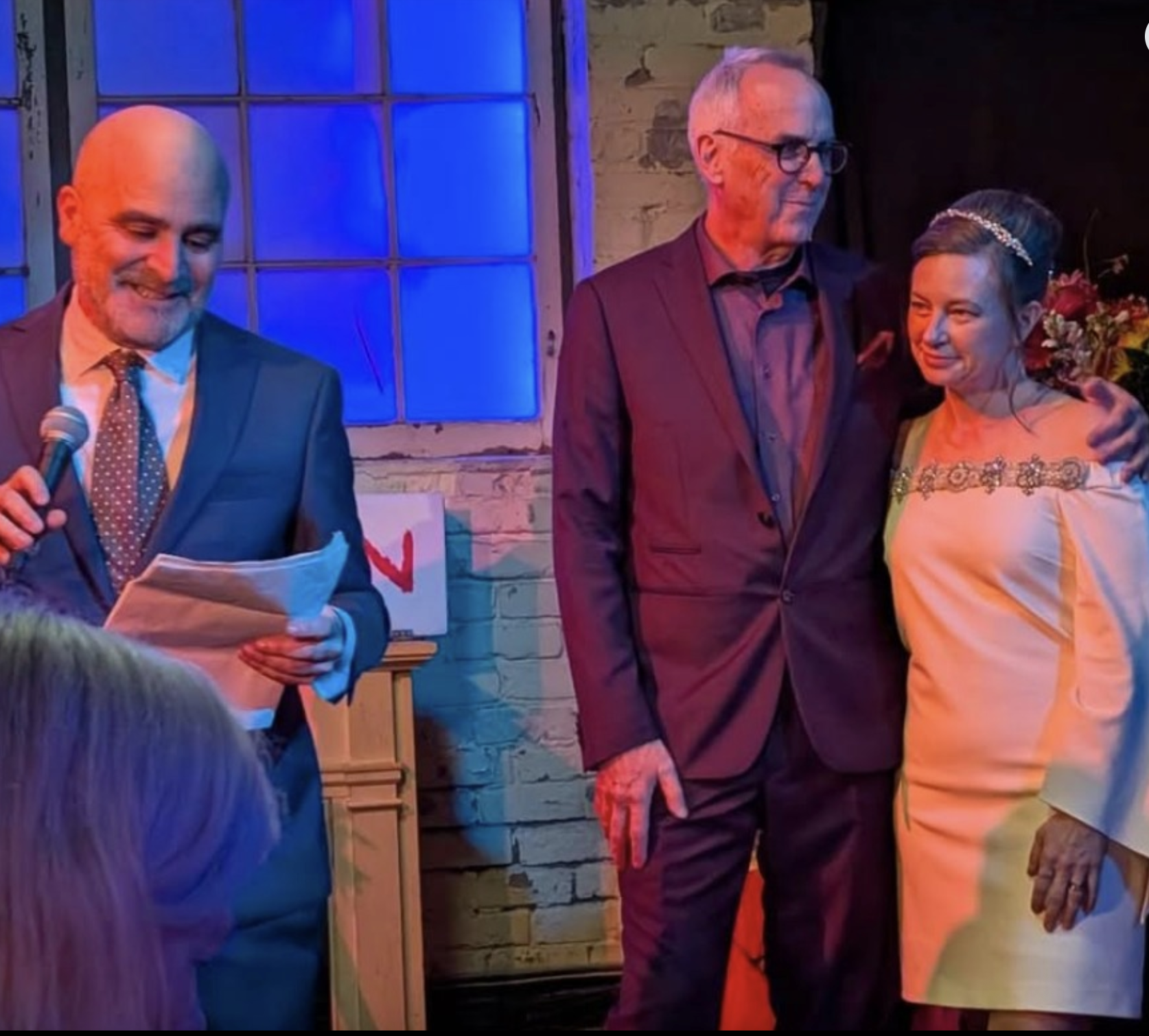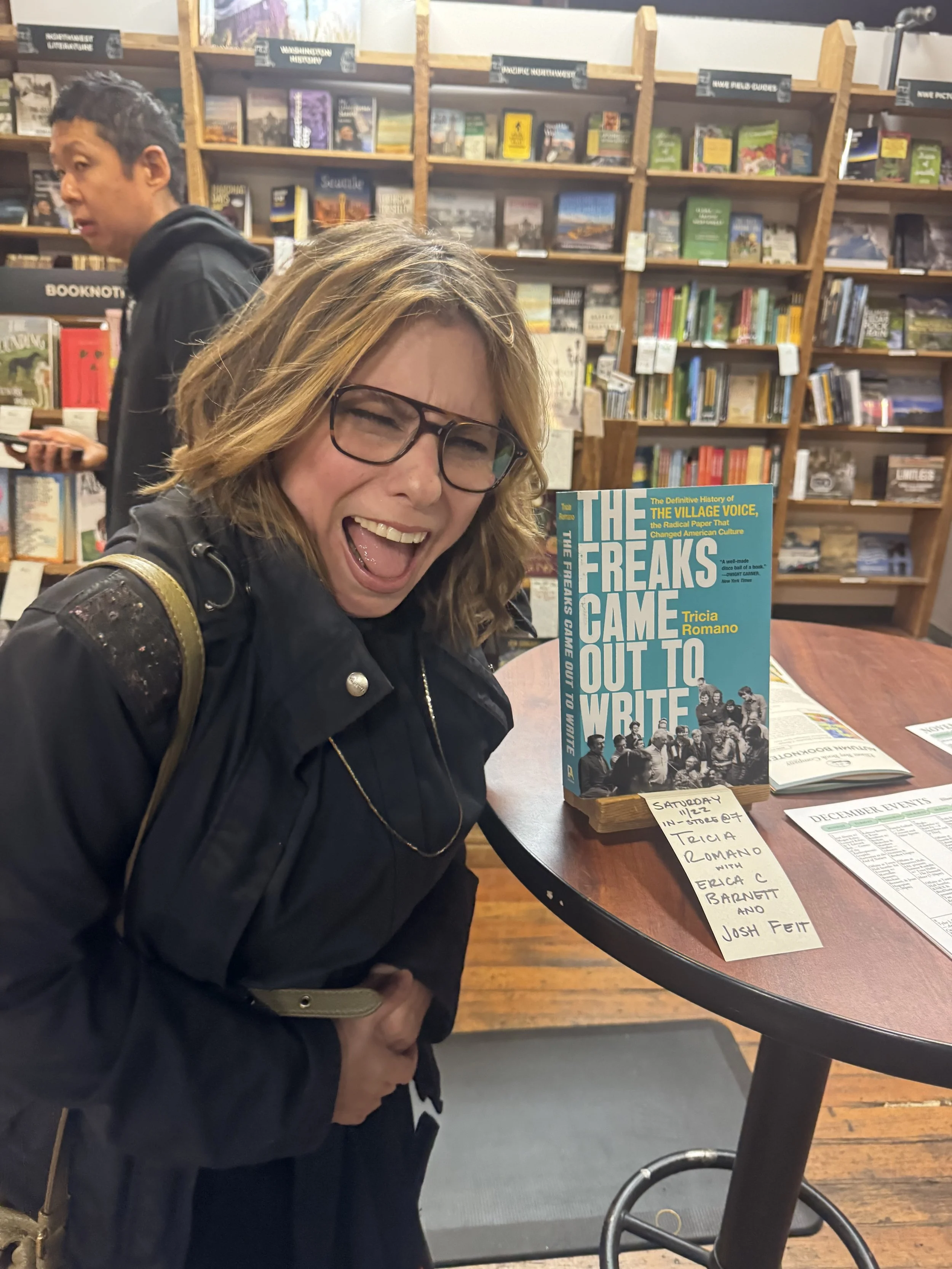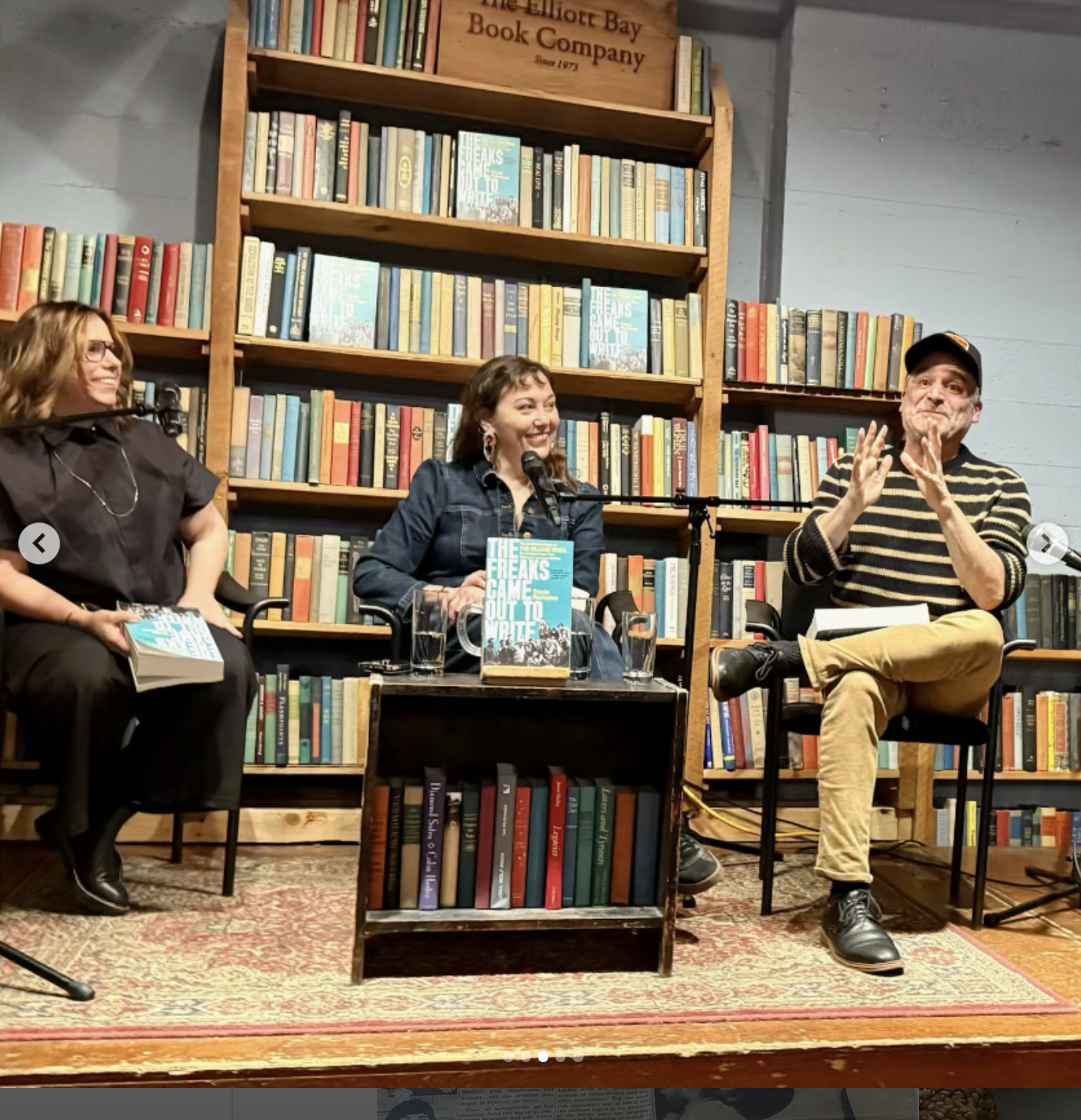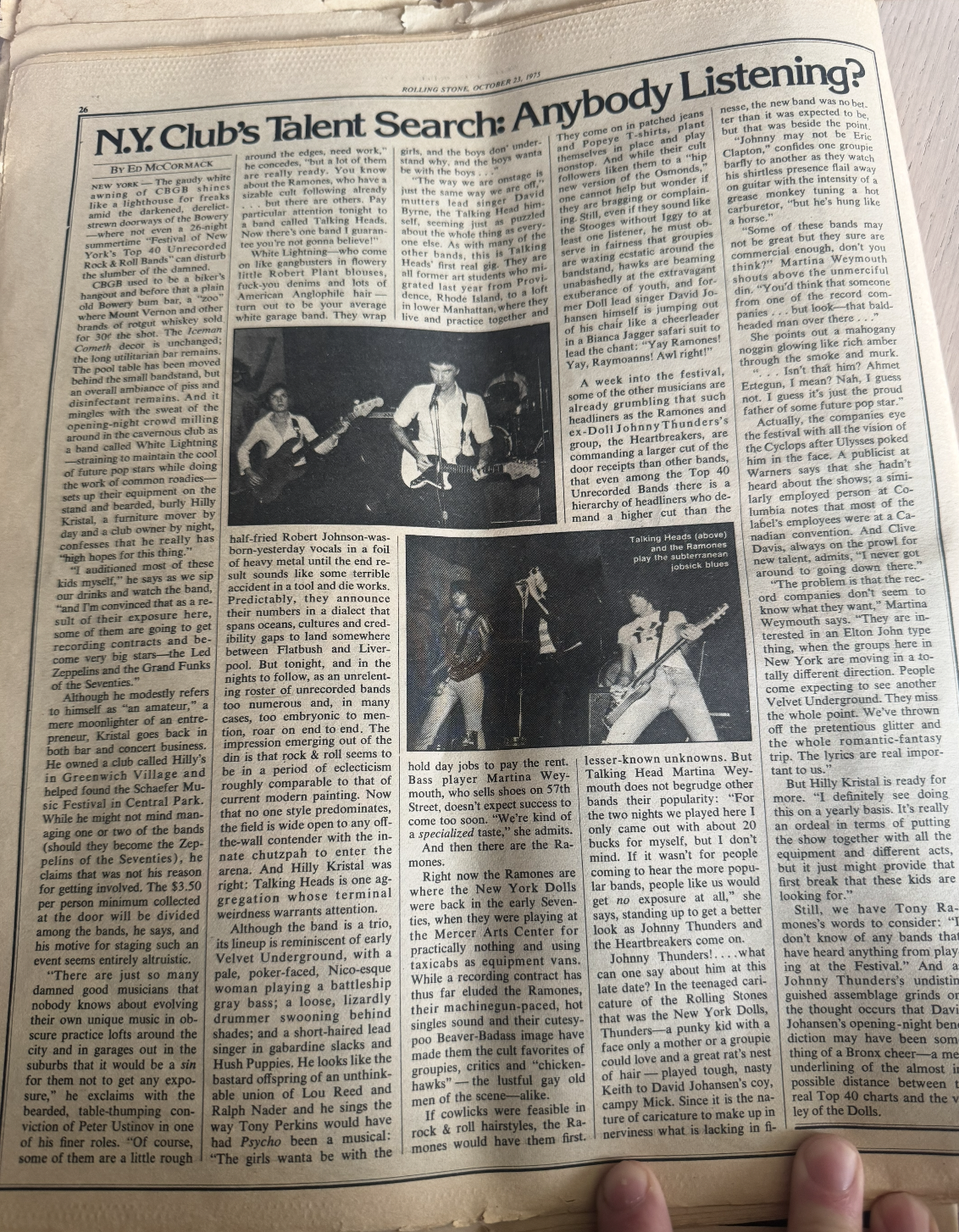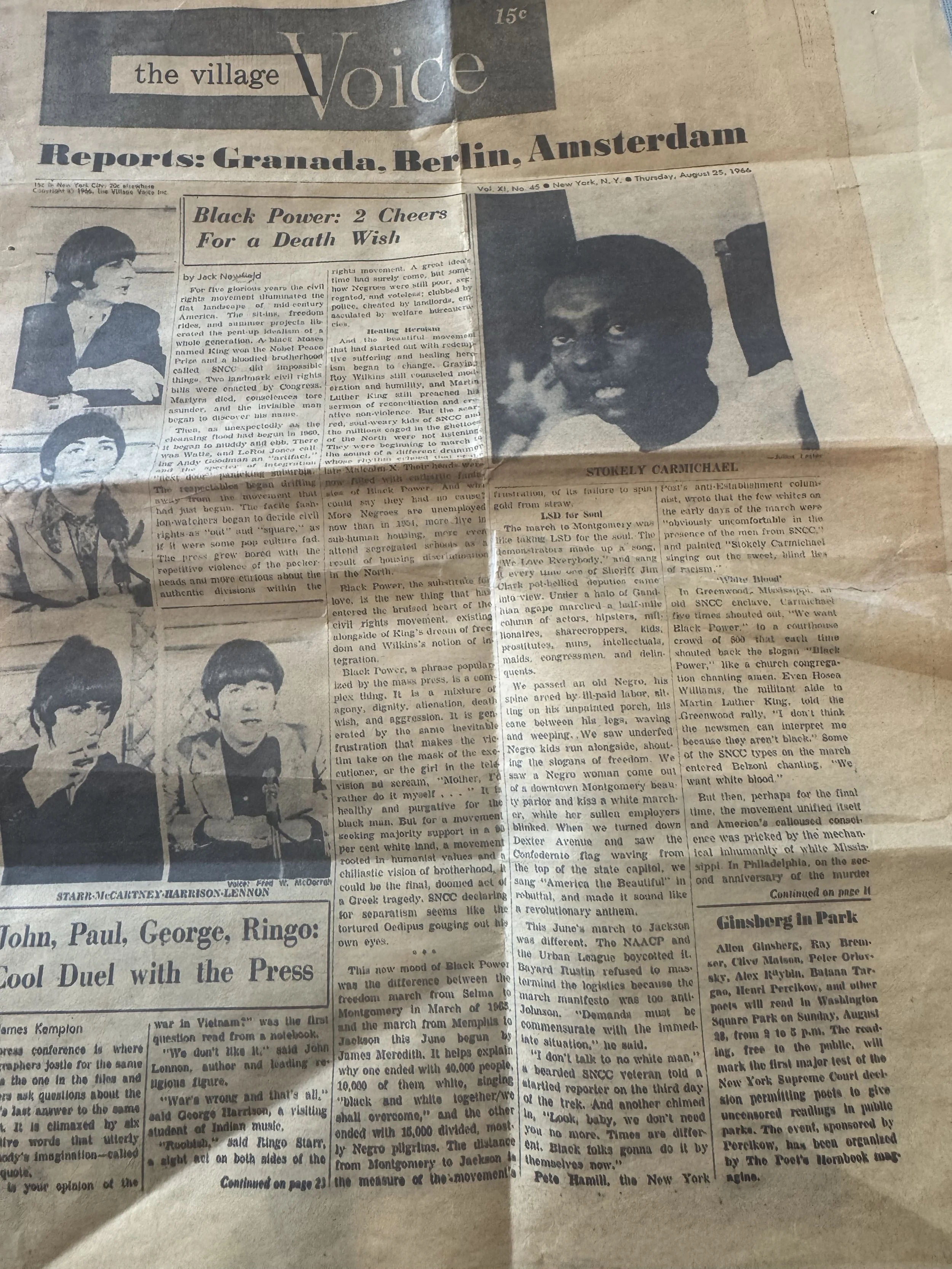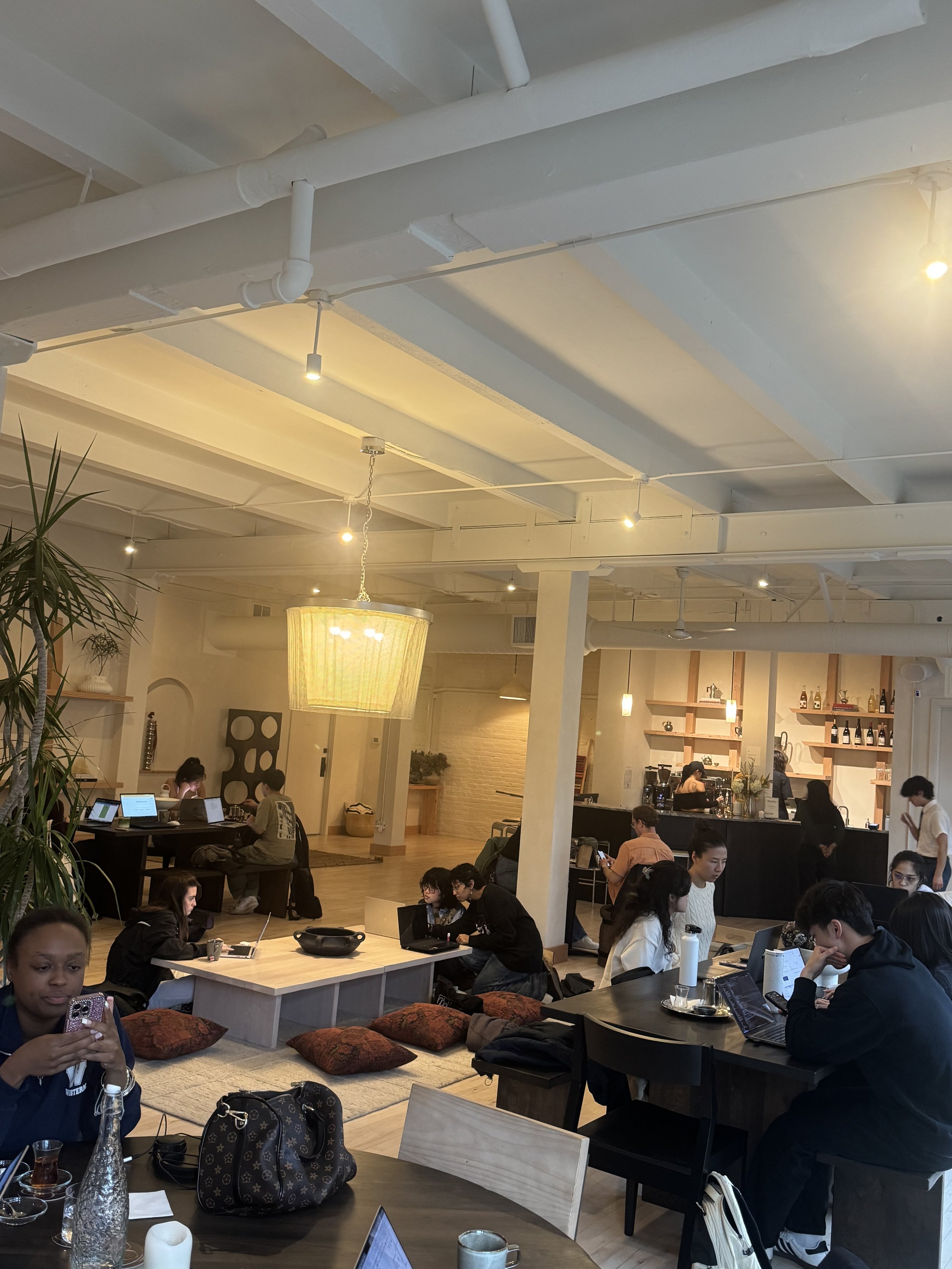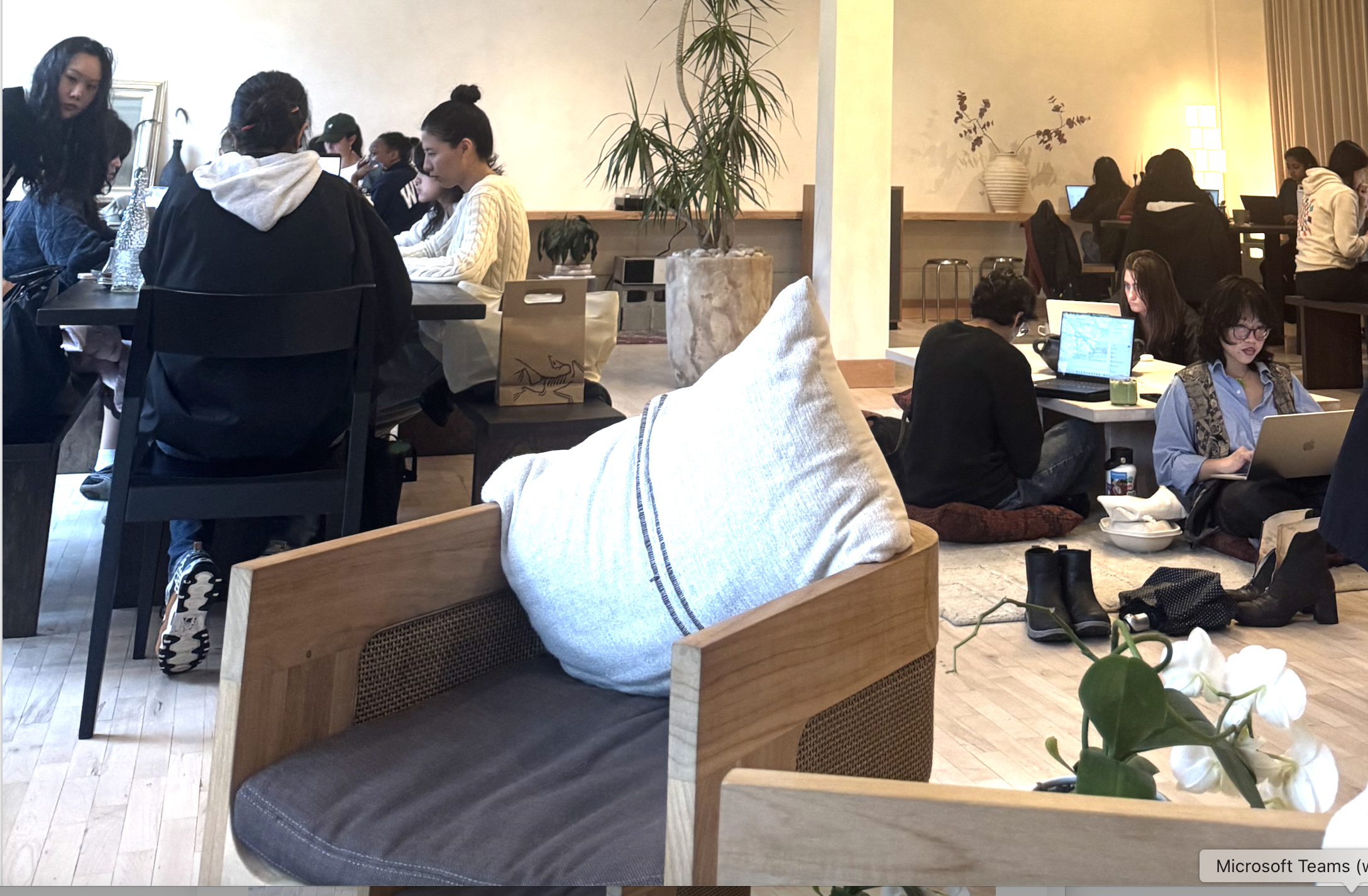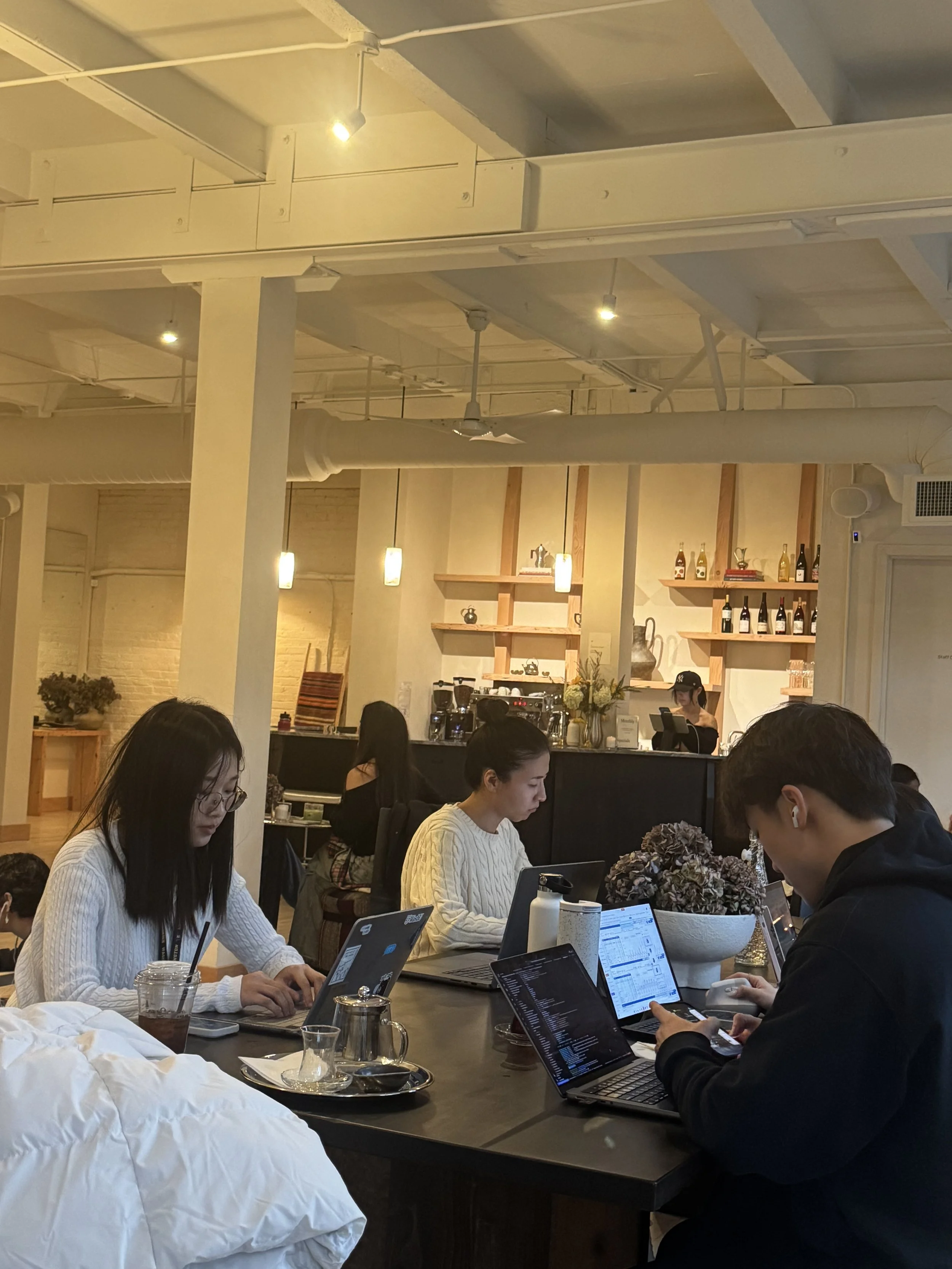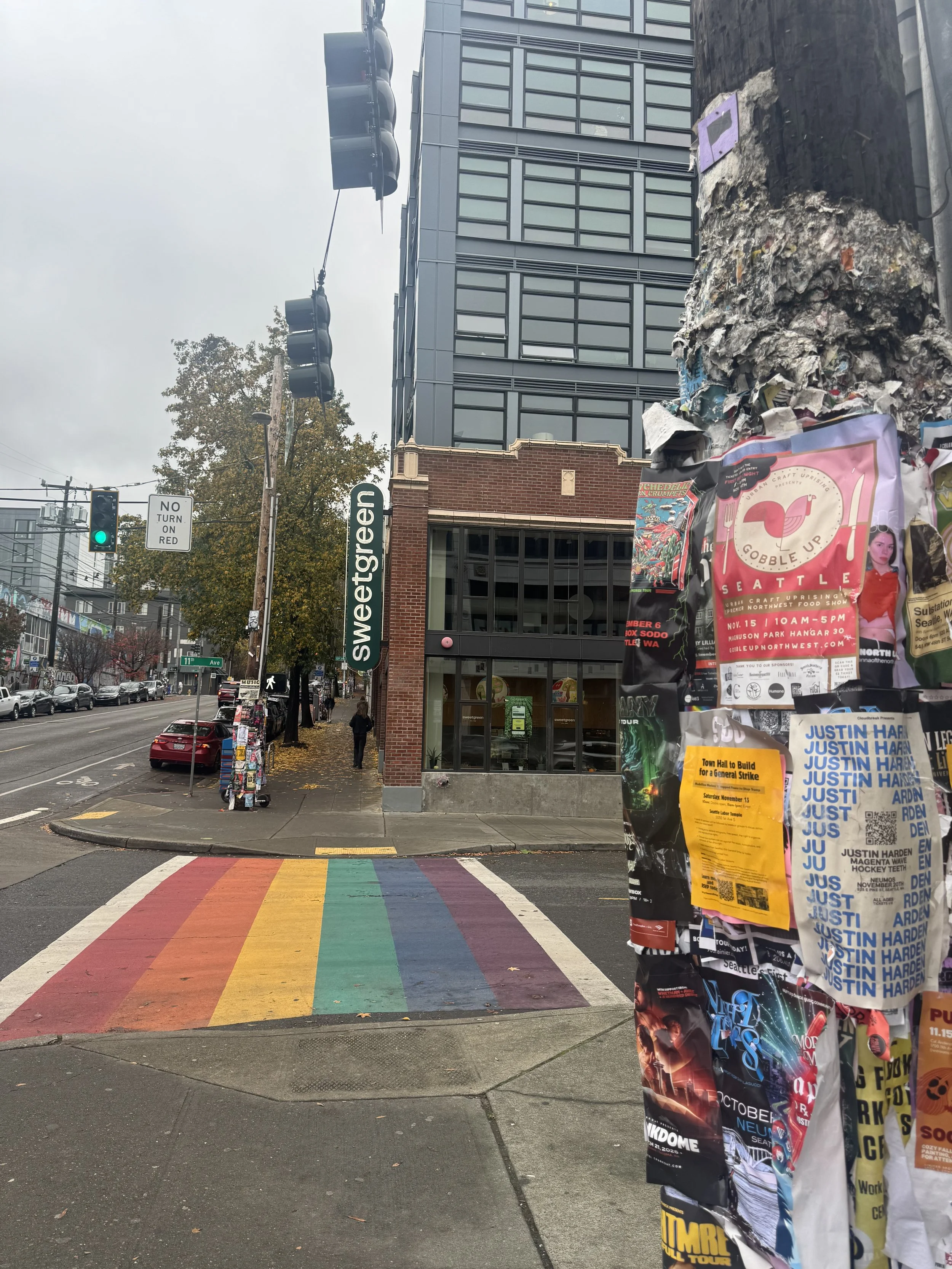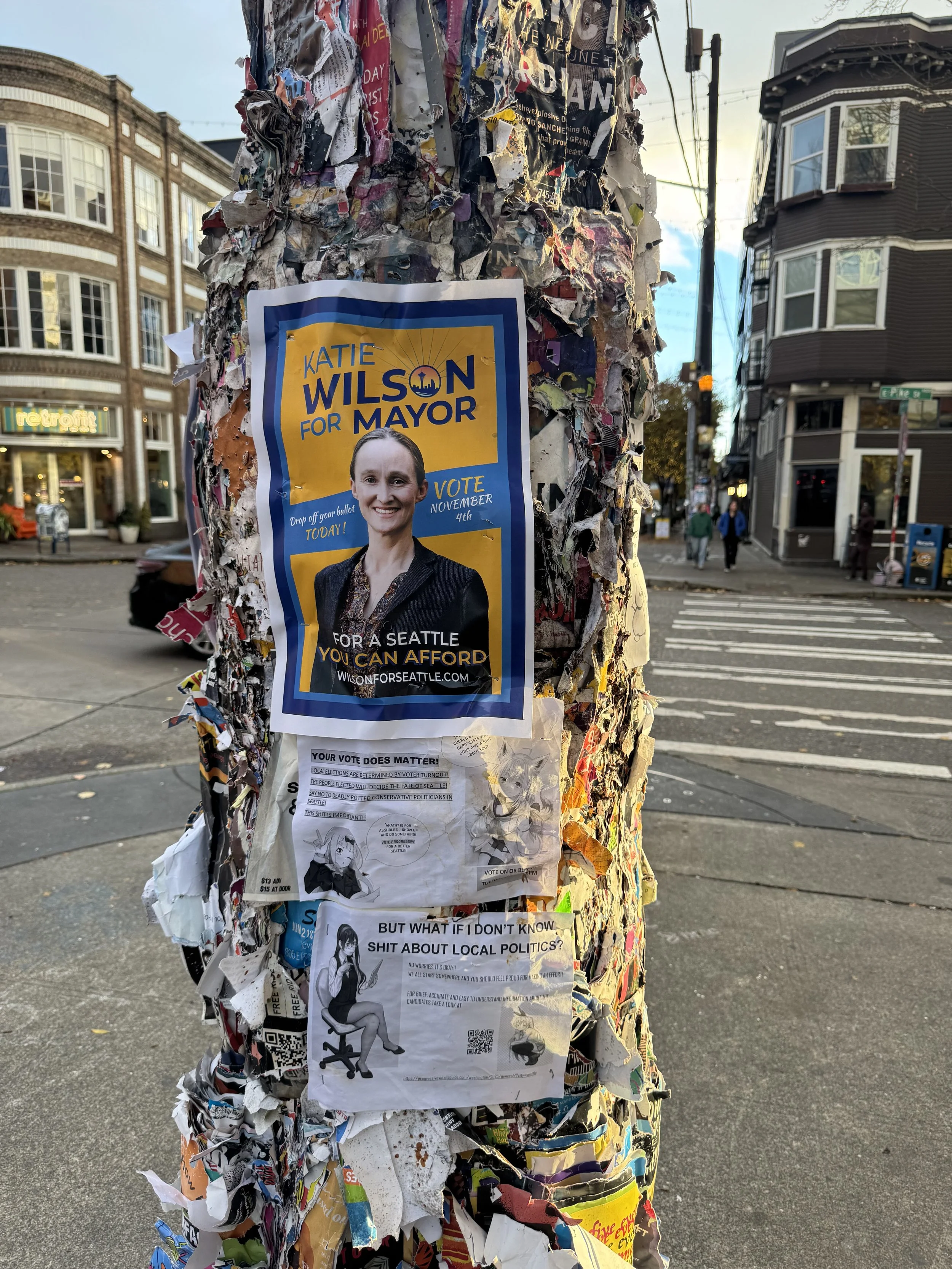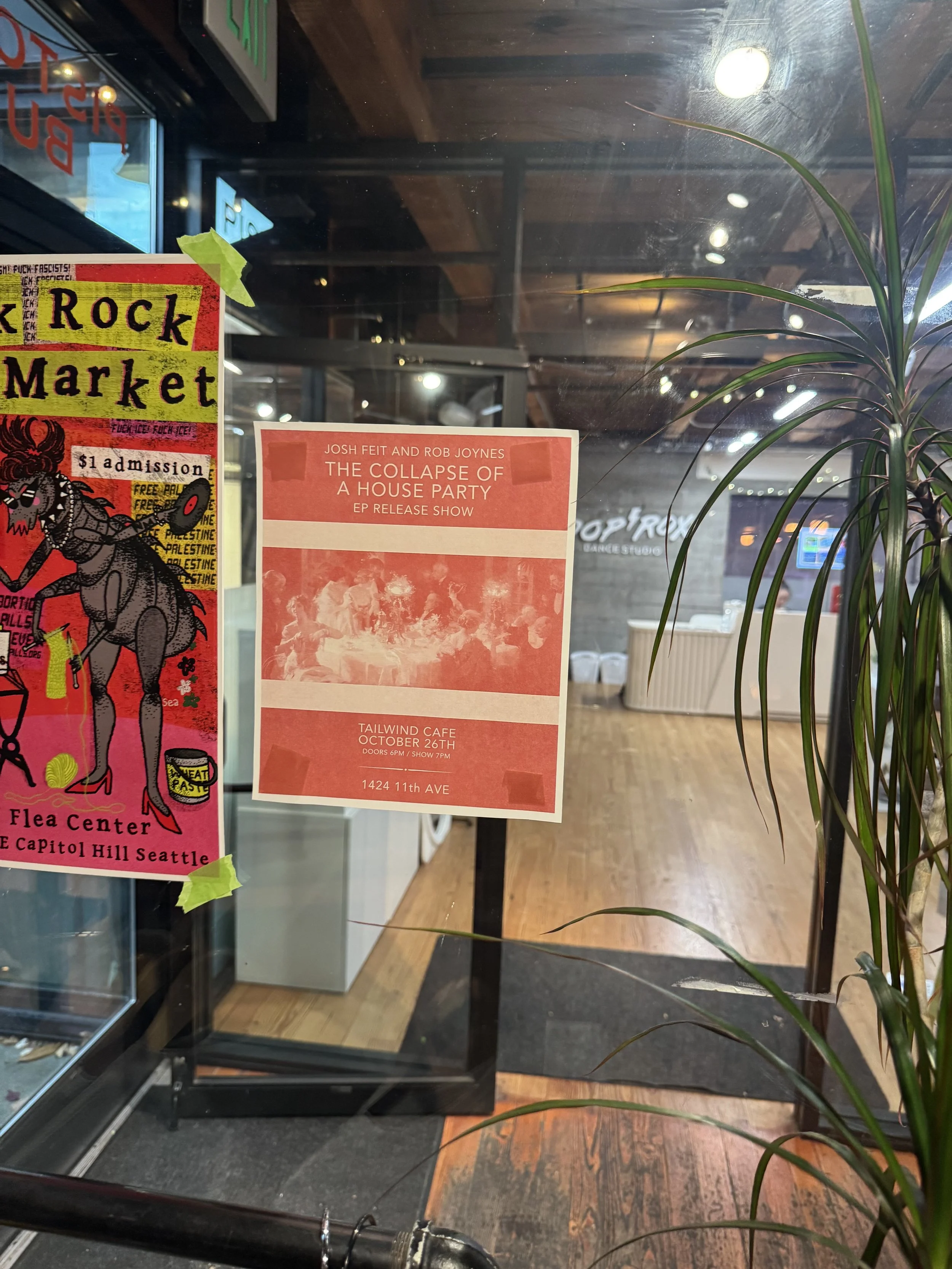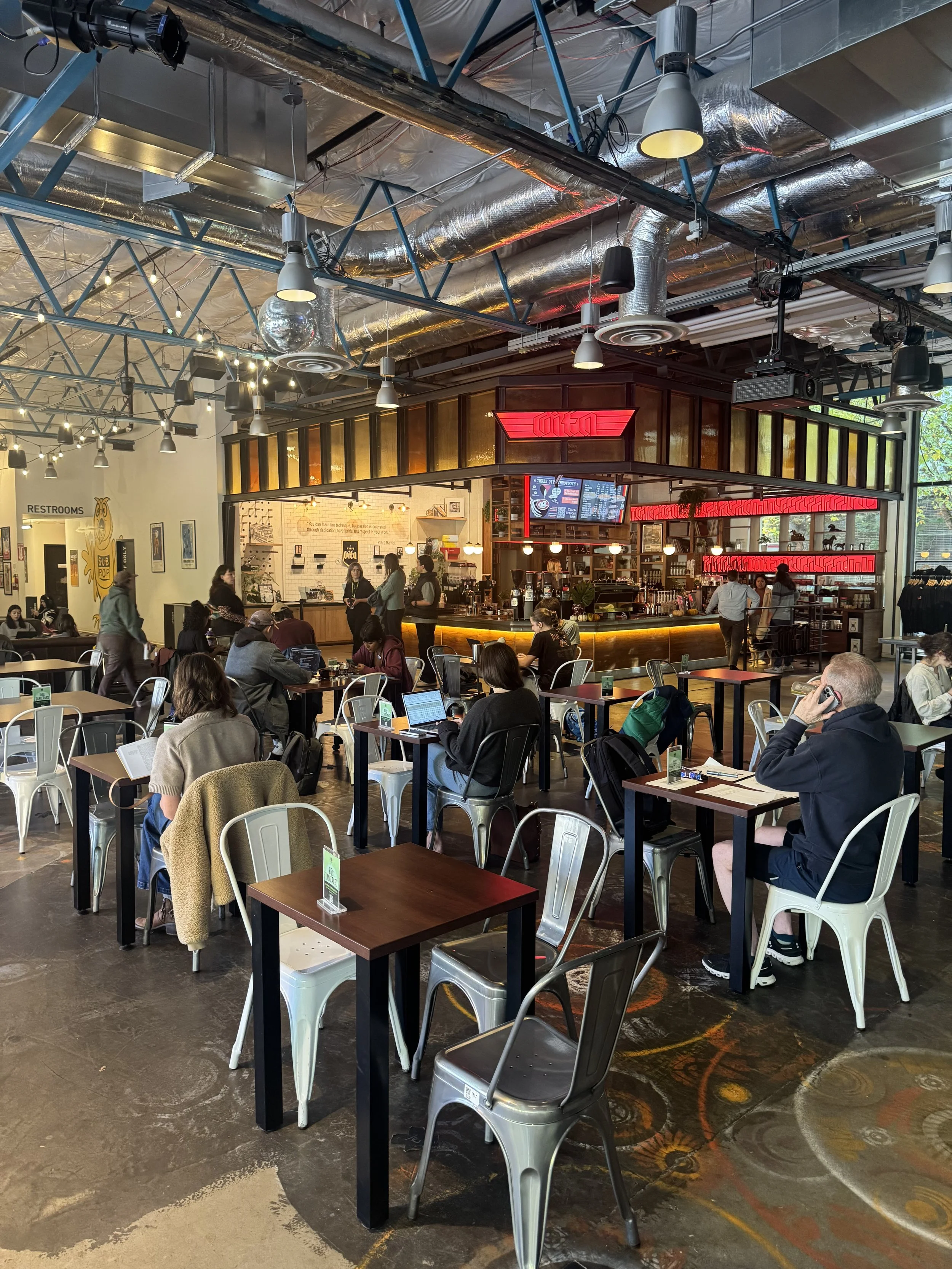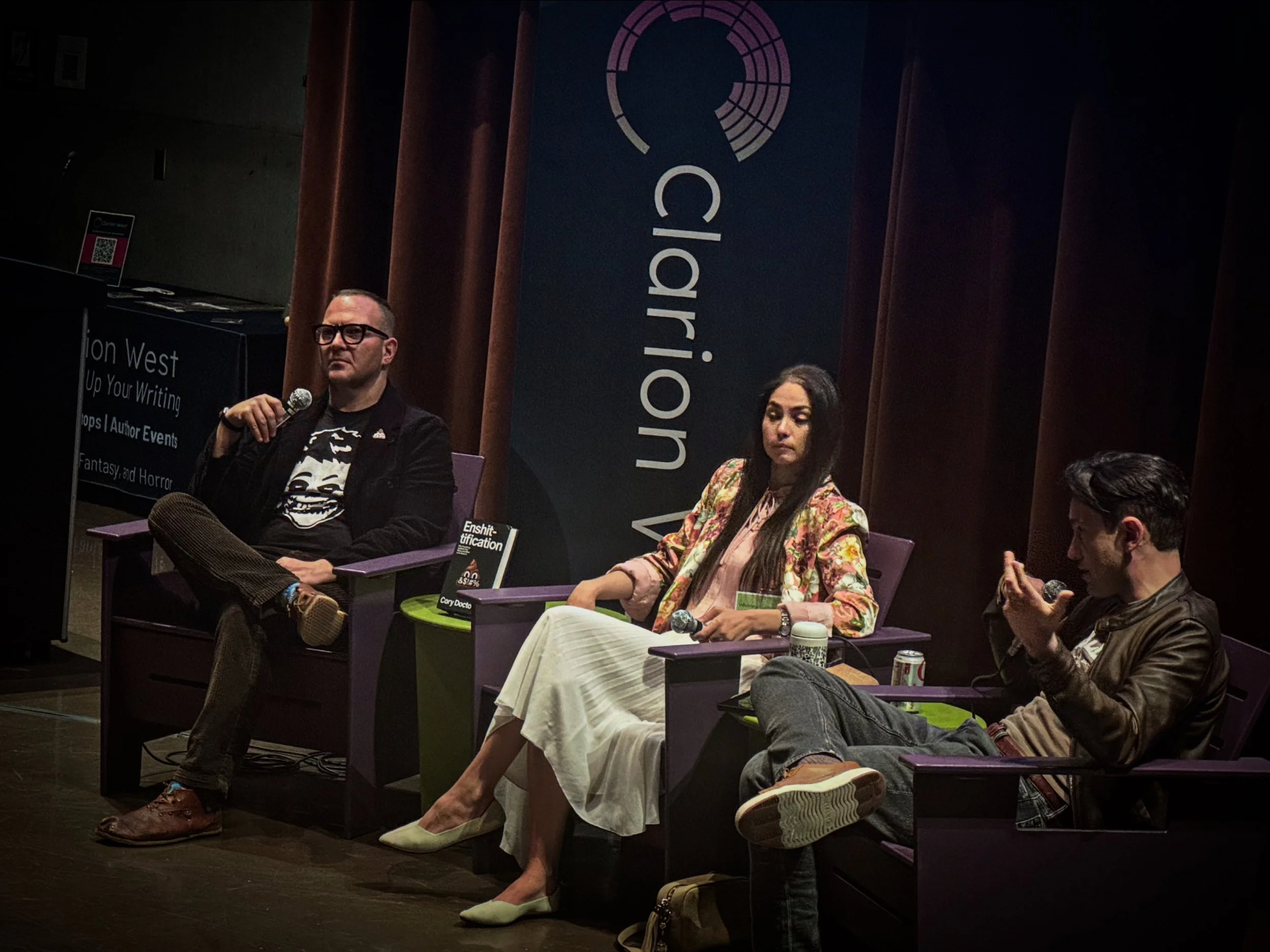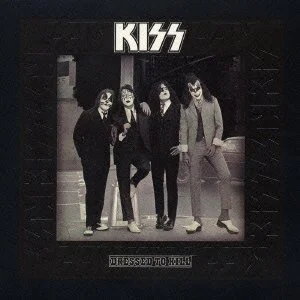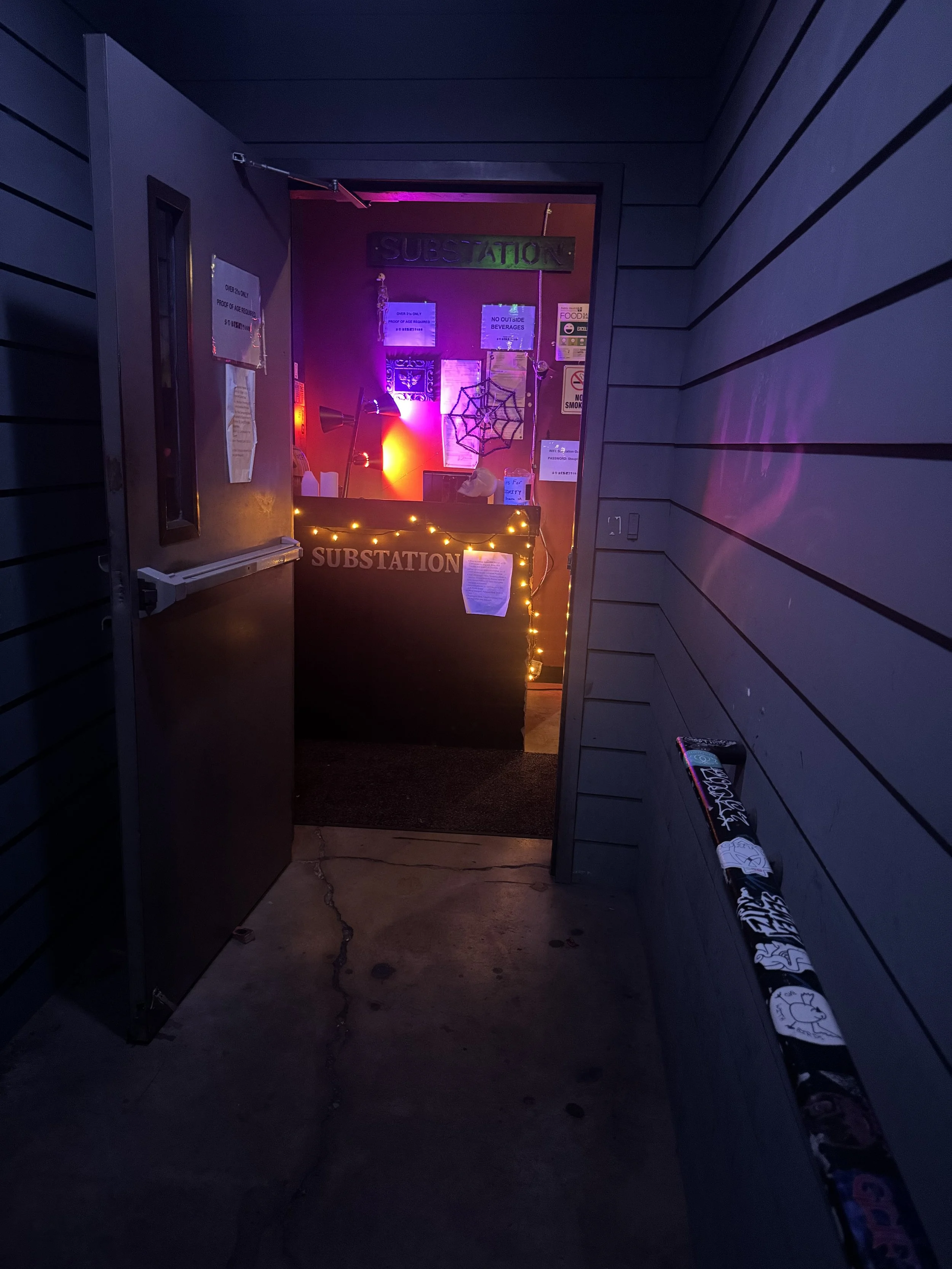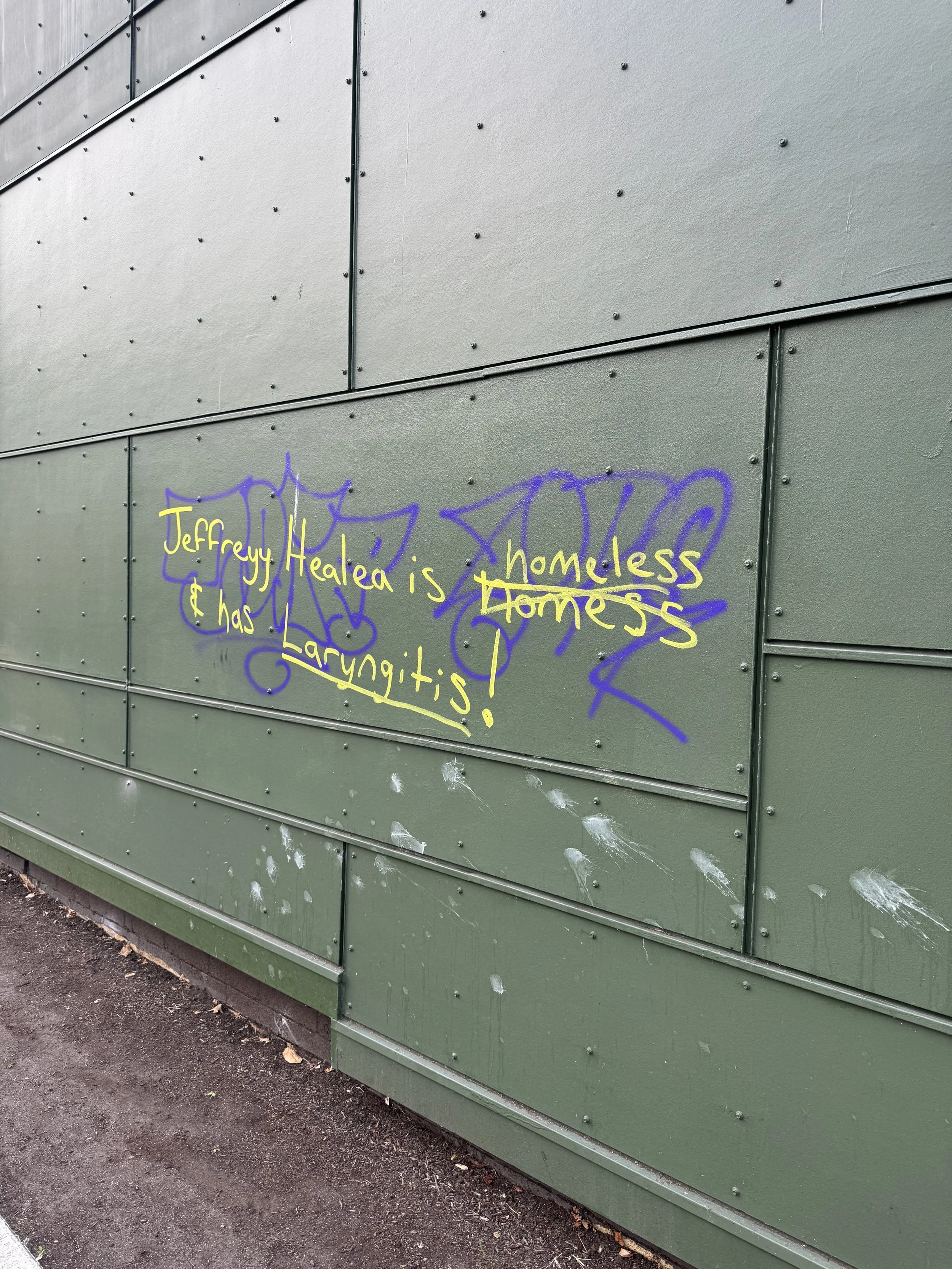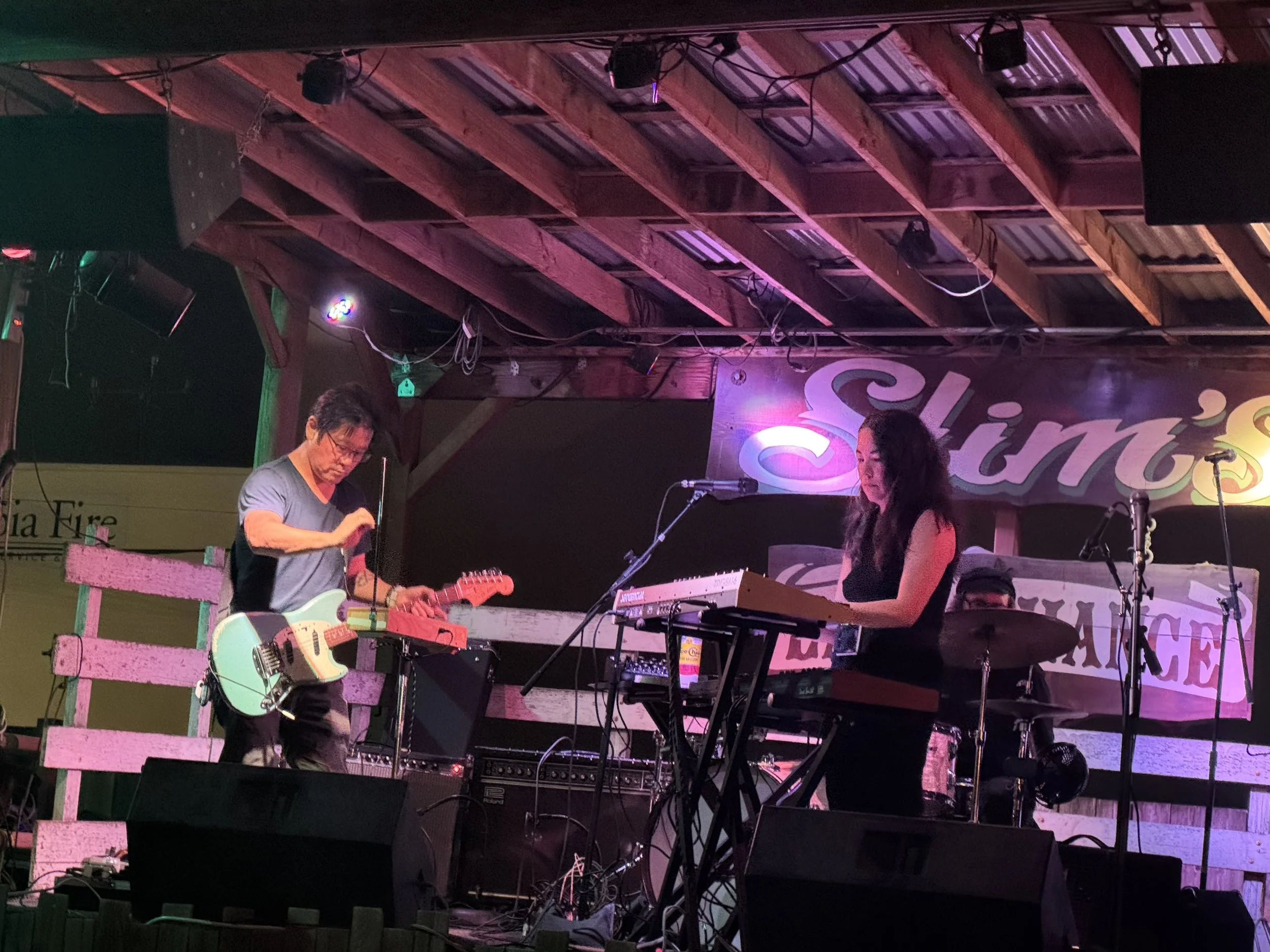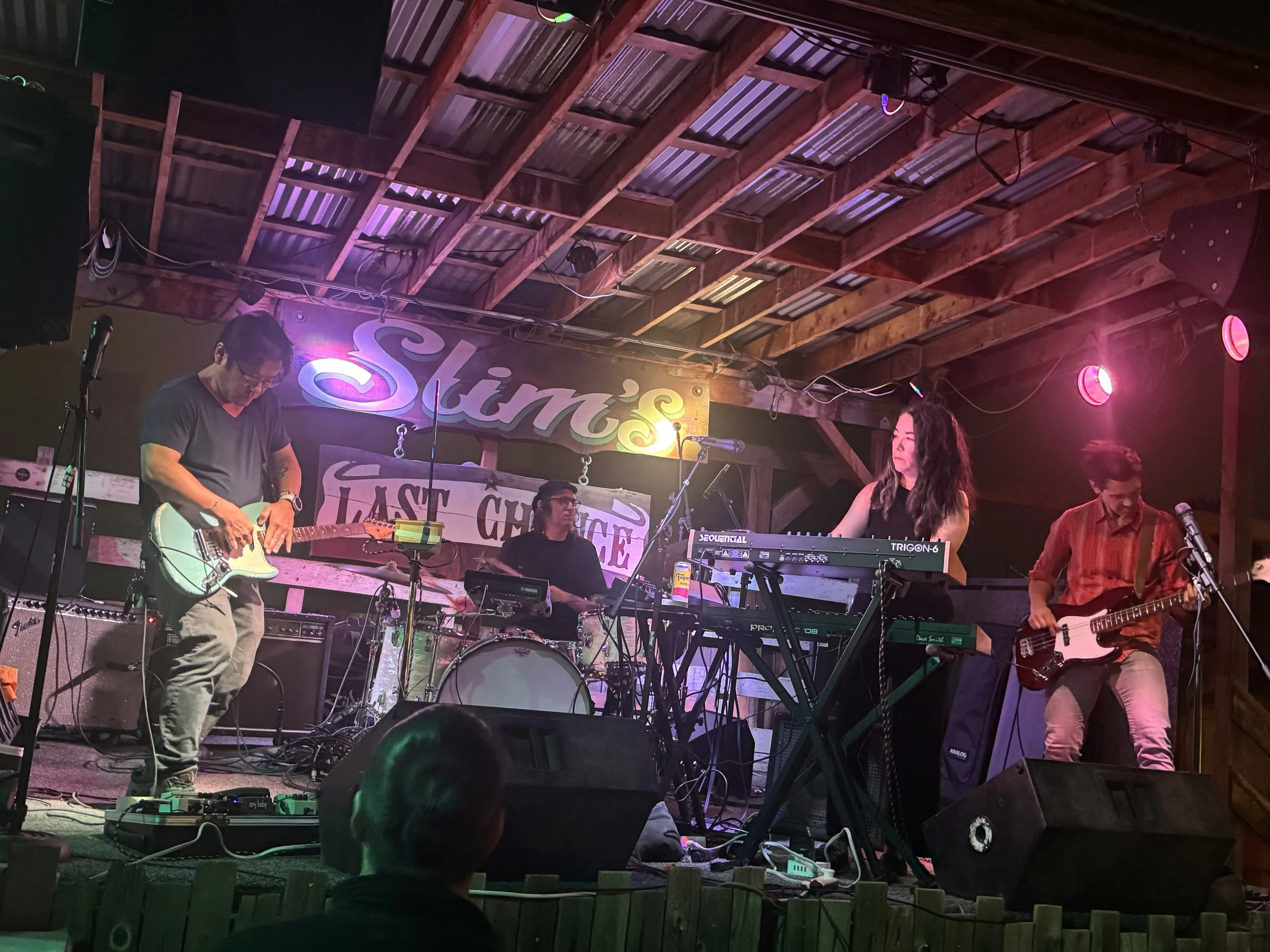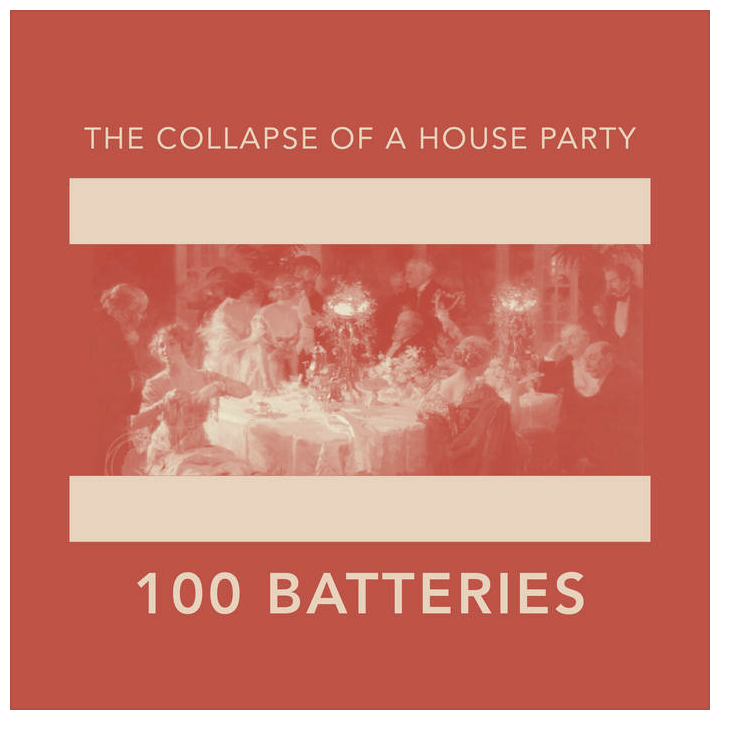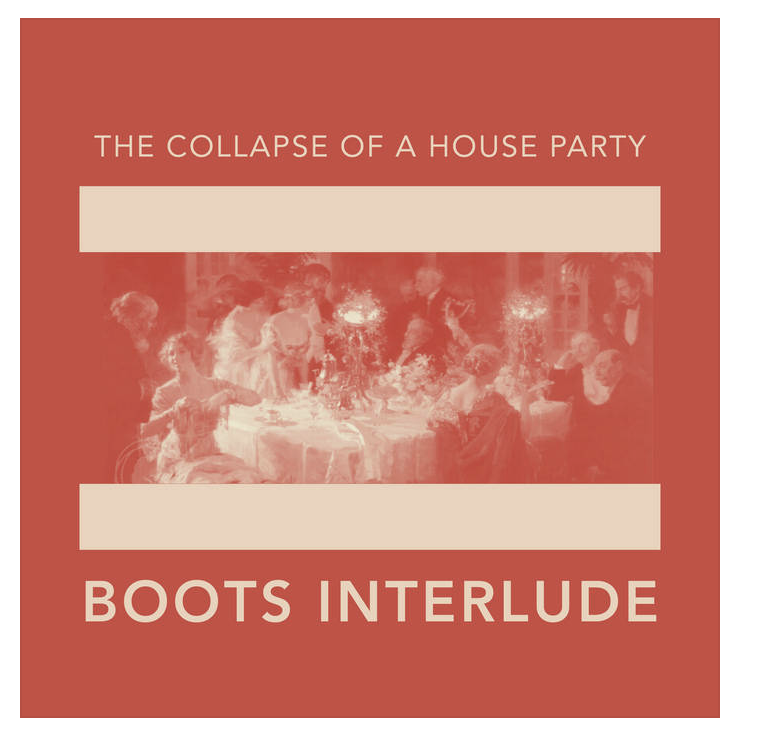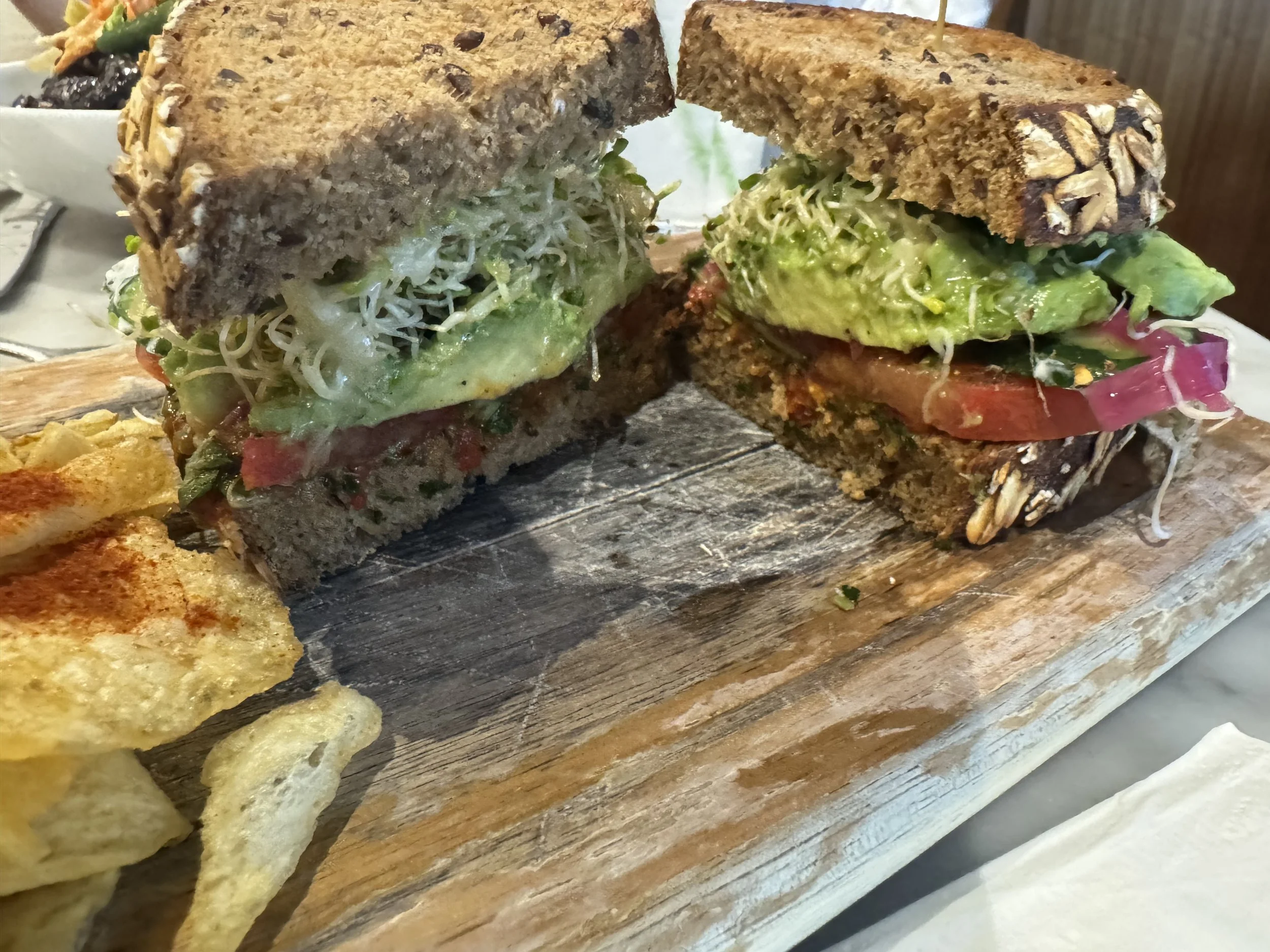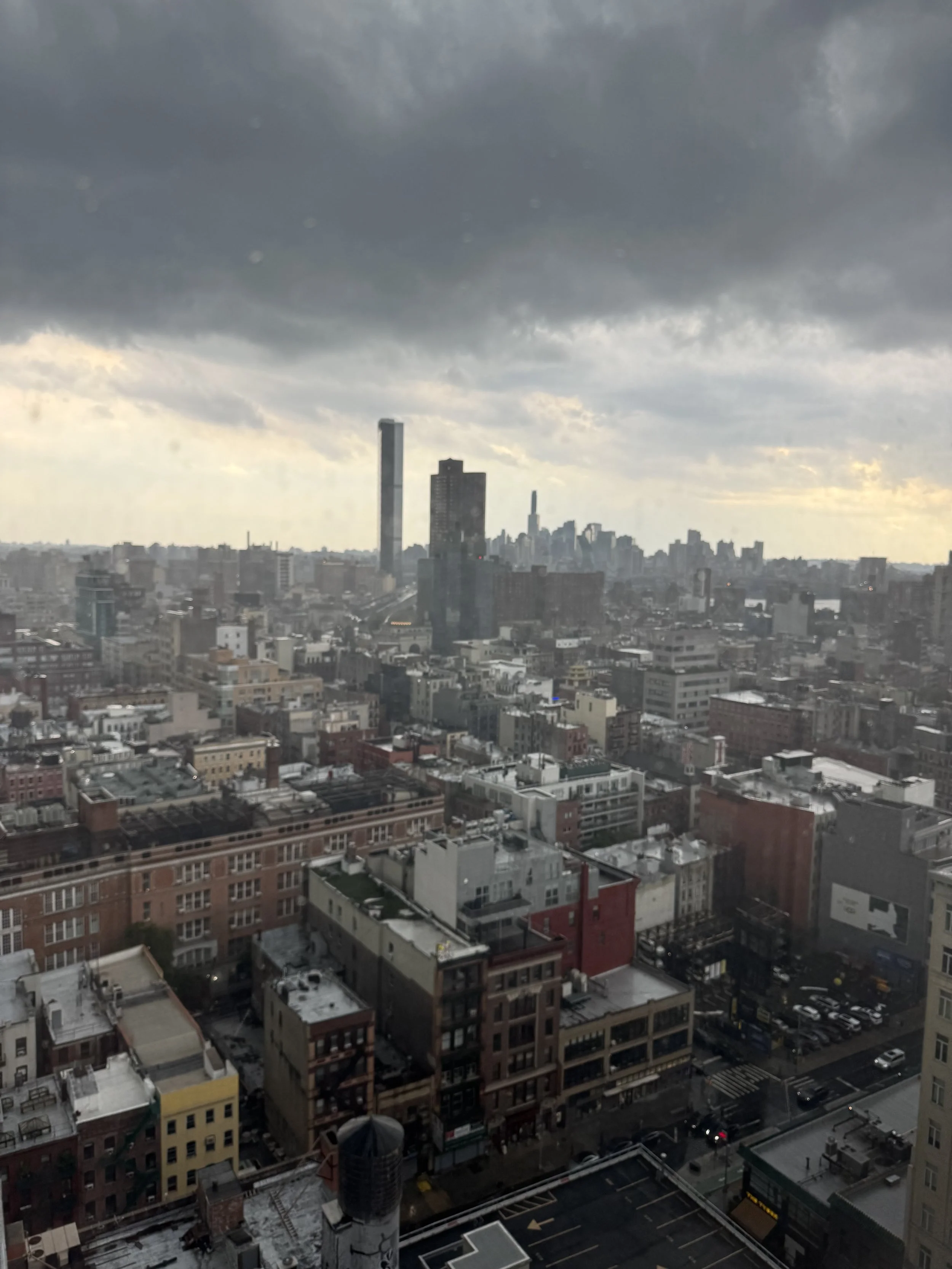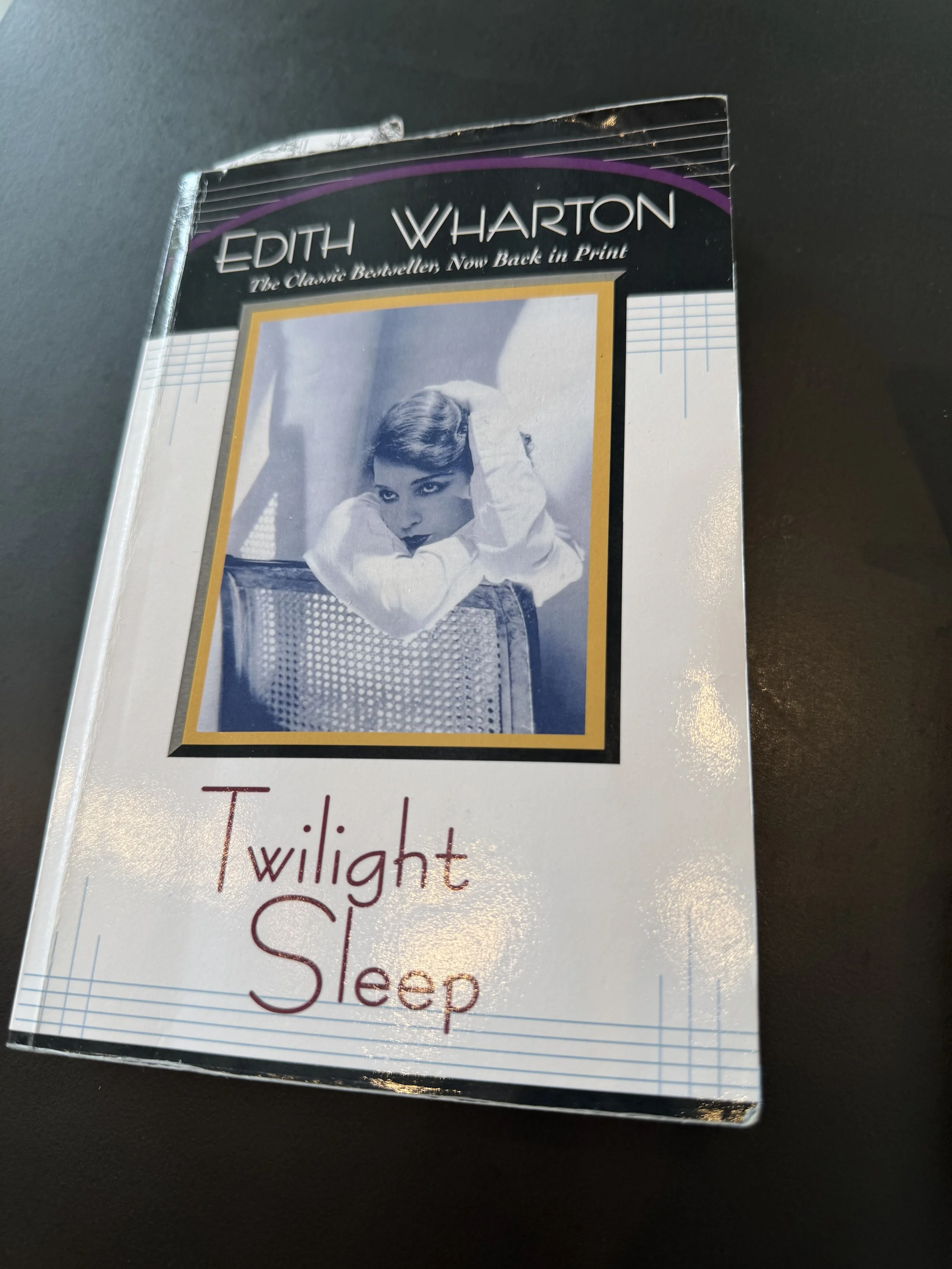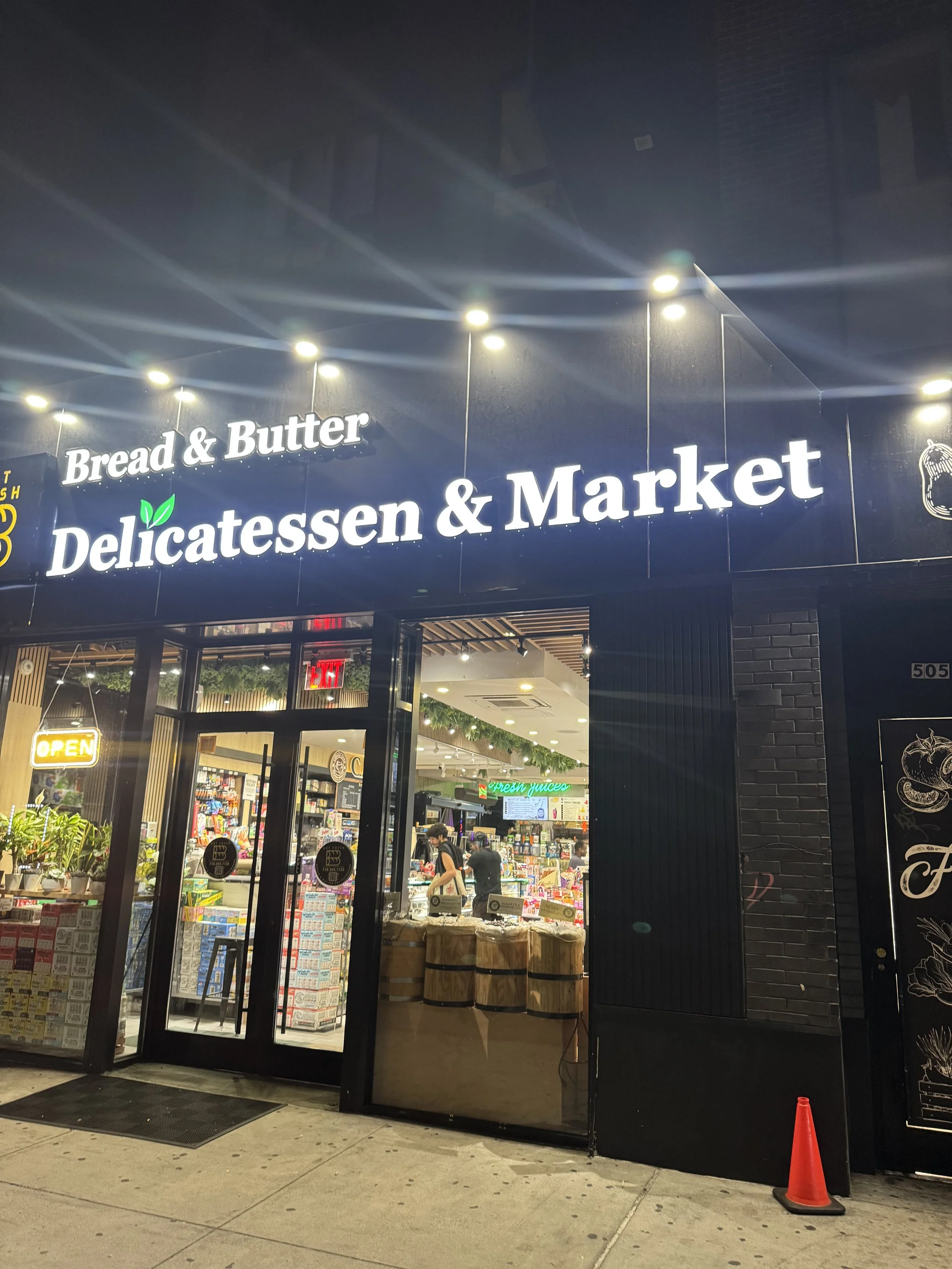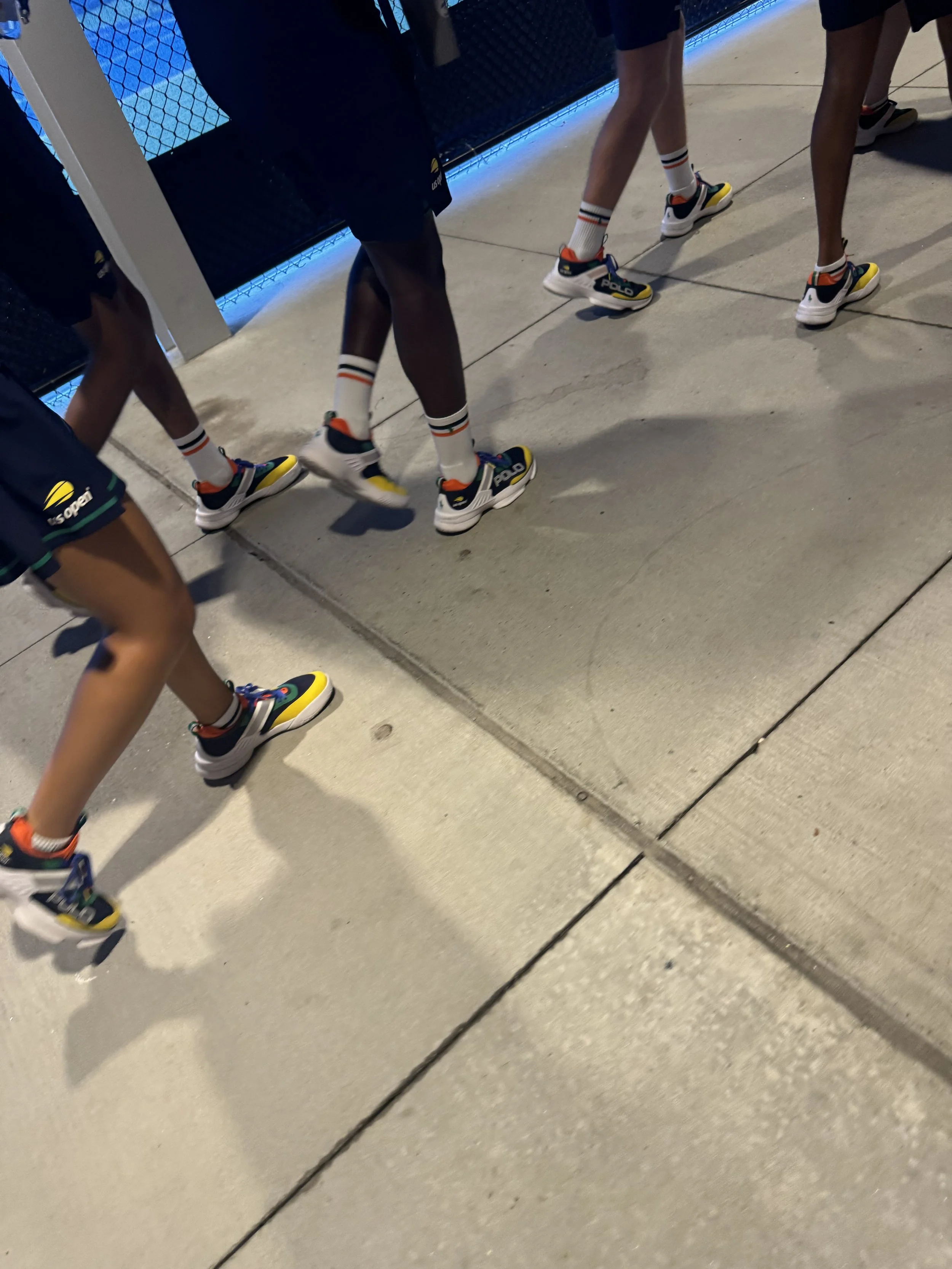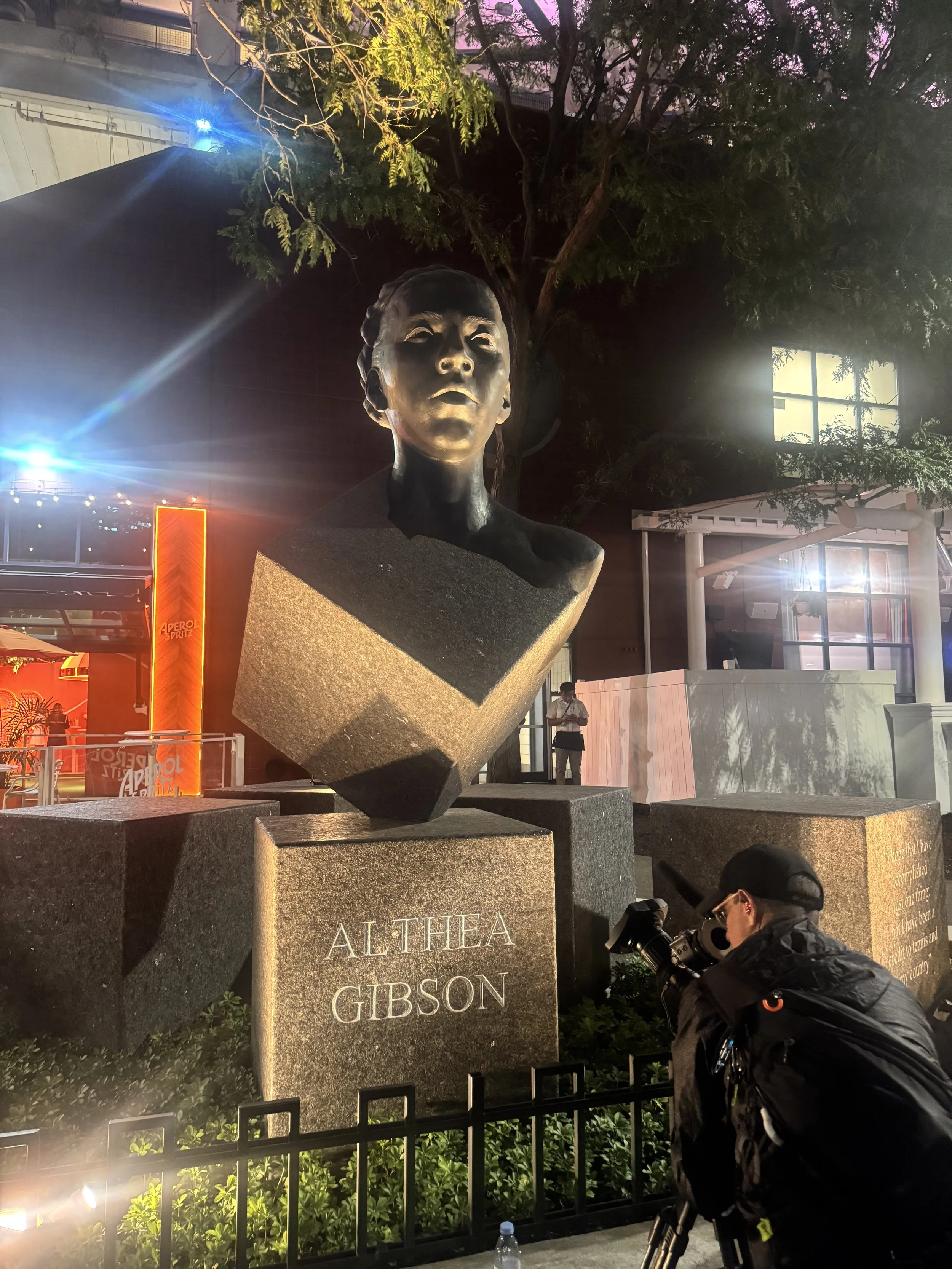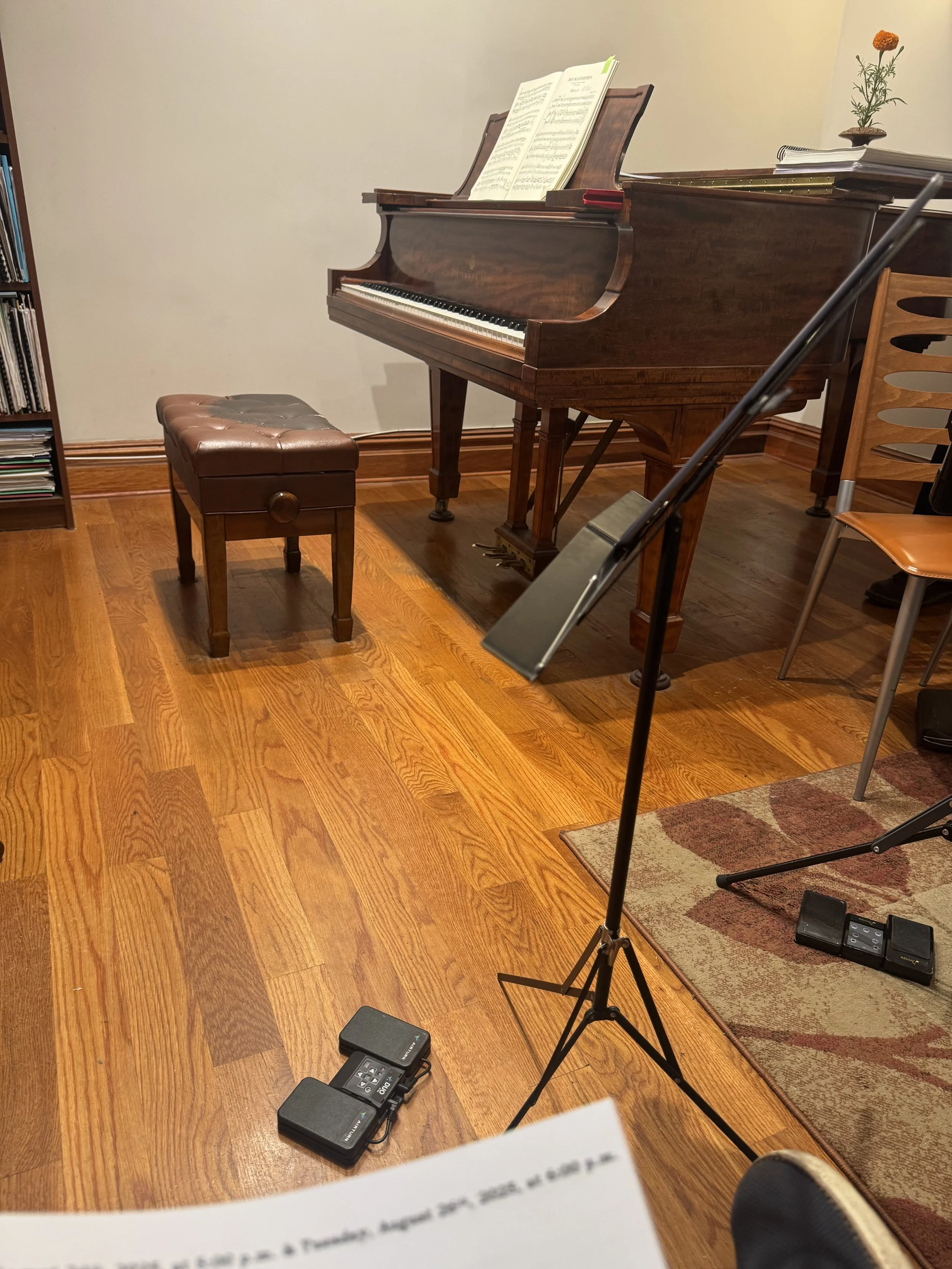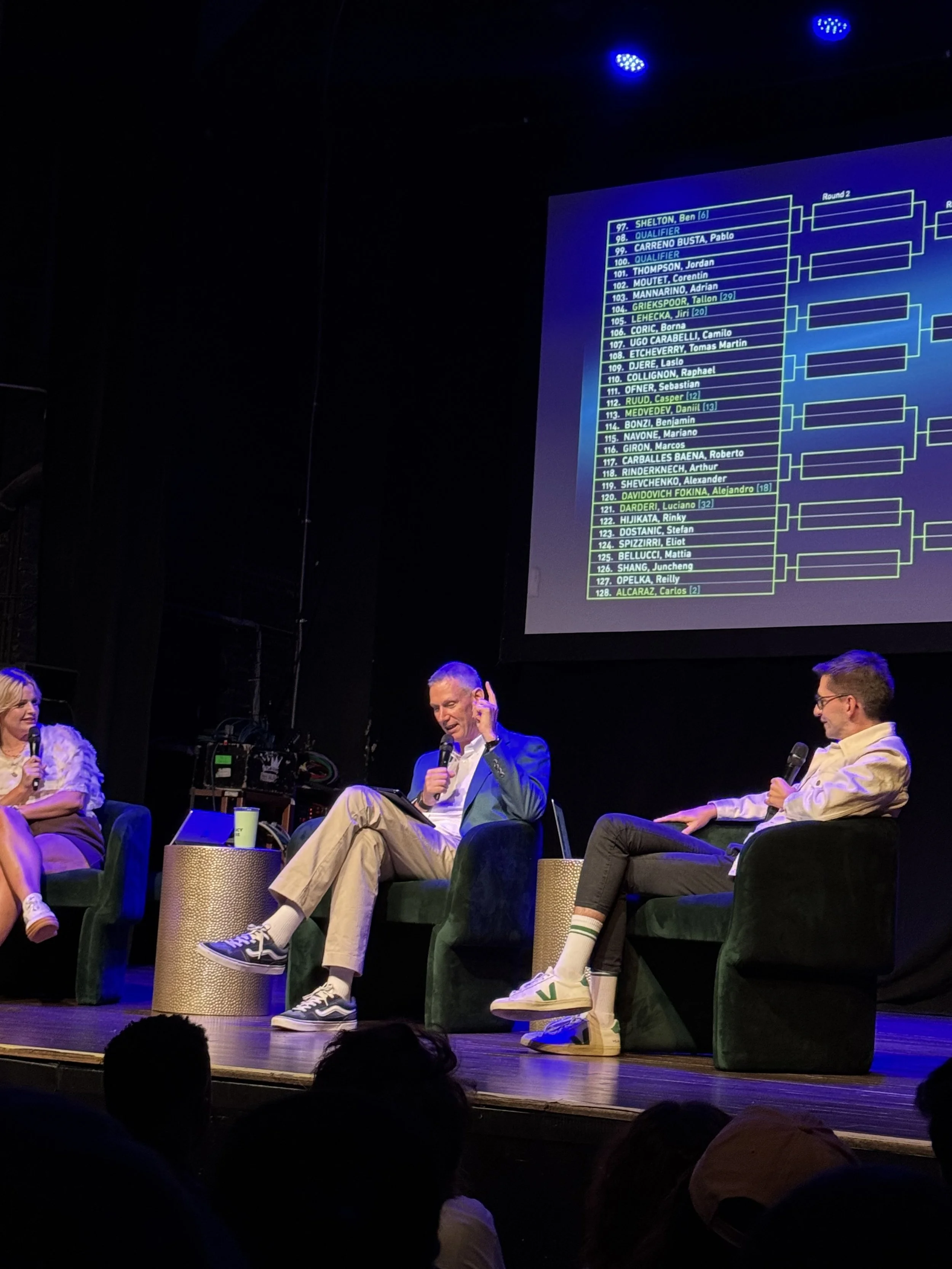I’m All Lost In, #113: a Sprawl tax; an inciting octave; a book on Alcaraz and Sinner.
I flagged these lines as a potential epigraph.
I’m All Lost In…
the 3 things I’m obsessing about THIS week
#113
1) A Tax on Sprawl
This week on PubliCola, Erica and I published an epic: Our 14-point platform for incoming Seattle Mayor Katie Wilson. Our 14-points angle was a reference to U.S. president Woodrow Wilson (1913-1921) and his idealistic enumerated plan for a lasting post-WWI peace..
Of our 14, it’s the call for an Urban Pass I’m most invested in. Here’s the idea: People can purchase a monthly parking permit for high-demand parking zones citywide. Paying for this monthly permit would give commuters a discount on parking rates in these popular destination neighborhoods; to keep the current city budget whole, the city would raise its current parking rates in concert with instituting the option for the Urban Pass discount.
The idea is kind of based on NYC’s congestion pricing plan [I’m All Lost In, #73, 2/23/25] which charges people for driving into the city proper. But there are key differences from Manhattan’s program. First, the Urban Pass isn’t just about downtown. It’s about driving into any popular Seattle neighborhood, i.e., all 32 of the formally designated districts where commercial hubs thrive thanks to mixed-use and high-density zoning. Second, the monthly Urban Pass fee for parking in these electric neighborhoods wouldn’t go to support transit infrastructure. Instead, the revenue would go to build affordable, multi-family housing in the low-density neighborhoods where many of these commuters are driving in from. In other words, the fee would be directed back to the people who are paying it.
Why? Because I’m a brat. As I summed up the idea in the PubliCola post: “Clearly, the people who drive in to visit popular neighborhoods are fond of density too. So let’s give them some.”
What I didn’t say on PubliCola, but maybe I should have because it’s more to the point: This is a sprawl tax. Low-density neighborhoods are only possible because of the efficient urban centers that offset the selfishness of isolation defined by single family zones. Collecting money from commuters to eventually pay for increasing density in their own neighborhoods would be akin to “teaching a man to fish.”
2) At the Hop
All the cats and chicks can get their kicks at the hop, 1958
The leading right hand melody in the catchy intro to Danny & the Junior’s 1958 No. 1 hit “At the Hop” capitalizes on the sudden pop construction of the left hand accompaniment: A modified blues scale that stops short of reaching the traditional flatted (bluesy) VII note and instead descends from the VI back to the V. That right hand? It goes all in on ascension, soaring octaves: D up to D, E up to E, F# up to F# all as the sad-to-glad alteration below locks in.
These climbing right hand sprints not only echo the glee club rewrite of the altered R&B left hand (presumably for a “broader” audience), but also create some wonderful tension. In forsaking the blue VII note, the modified left-hand scale teeters between the V and the VI into a descending line that eventually lands back on the III. This pulls the song in the opposite direction of the far-reaching melody.
There’s certainly more to this wonderful rock & roll hit than its inciting intro—the internally rhyming teen slang, a deep-cut shout out to calypso, and the full-fledged blues chorus payoff with a flat 3 leading the way. I wrote about all of that in a wordy 2021 essay.
But as I continue to obsess over my piano set [I’m All Lost In, #104, 10/12/25], I spent this week working on Danny & the Junior’s expansive minor ode to the octave.
3) A Book about Alcaraz and Sinner
Suzanne Lenglen, circa 1925
My favorite 2025 read was a 1988 dual biography about the two dominant female tennis stars of the 1920s, Suzanne Lenglen and Helen Wills: The Goddess and the American Girl, The Story of Suzanne Lenglen and Helen Wills by Larry Engelmann [I’m All Lost In, #76, 3/28/25.]
I’m Team Lenglen, or, in sync with the title of Engelmann’s book, Team Goddess. And—as the book reports: Lenglen was a goddess who wore streaming head bandeaus on court and sneaked sips of cognac before monumental points. She won Wimbledon six times between 1919 and 1925.
In what turns out to be some unplanned year-end bookend symmetry, this week I’m reading a dual biography of the dominant male tennis stars of the 2020s, Carlos Alcaraz and Jannik Sinner: Changeover: A Young Rivalry and a New Era of Men’s Tennis by Giri Nathan. I think I passed Nathan hawking his book on the boardwalk runway up to the Billie Jean King Tennis Center when I alighted the 7 train and joined my pals Dave and Lee for the first night of the U.S. Open in late August [I’m All Lost In, #98, 8/31/25.]
However, it wasn’t until last week when I settled in with Changeover on audiobook that I got interested. Nathan writes in the colloquial chatty tone of a Substack sports writer—”And then yet another generation emerged. Surely, this would be the one to break the spell? Reader, it would not…” he says about another crop of players who can’t dislodge the Big Three, Roger Federer, Rafael Nadal, and Novak Djokovic. But Nathan’s also in the habit of turning excellent phrases. I like this pretty one about the San Jacinto mountain range as seen from the stands at Indian Wells: “Dark and crumbly, like piles of cocoa powder.” Or this about Sinner: “[He] has perfect timing like a singer might have perfect pitch.”
Wanting to hold on to Nathan’s fine descriptions—”He might get fixated on ideas that amuse him but do not win him points,” he says hyper accurately of Alcaraz—I switched from the audiobook to the hard copy midweek. Now, I can savor and underline.
I flagged these lines as a potential epigraph for some unknown poetry collection: “Never watch highlights, which perverts the reality of the tennis match, reducing it to its flashiest moments. Always watch at least one full set.”
I haven’t yet finished Nathan’s book on these promising young stars in medias res. I’m on Chapter 5. I guess we’ll all eventually find out how their story ends.
I’m All Lost In, #112: Drum boogie; space music; and electric blues.
The drop-down menu path that led me to the first rock & roll song of all time starts with Barbara Stanwyck.
I’m All Lost In…
the 3 things I’m obsessed with THIS week.
# 112
1) The Club Scene in Howard Hawks’ 1941 Movie Fire Ball
The drop-down menu path that led me to the first rock & roll song of all time starts with Barbara Stanwyck.
The idea of the first-ever rock song is certainly a tiresome Boomer and/or Gen X concern. And I’ve already got a 330-song playlist filled with likely contenders. But this week I needed to add another tune. 1941’s “Drum Boogie.”
I found it via classic-era Hollywood royalty Stanwyck (one of this week’s side obsessions as I stayed up late several nights watching pre-code movies.) Her 1932 waitress-to-matrimony pre-code flick, Shopworn led me to >> her 1930 escort-girl-to-matrimony pre-code epic, Ladies of Leisure. From there it went >> 1941’s Fire Ball, a charming Howard Hawks’ screwball drama co-starring Gary Cooper as a nerdy academic. Cooper’s Professor Bertram Potts sets out on the streets of Manhattan with a pencil and notebook in hand to research contemporary slang by eavesdropping on the masses. This led Professor Potts (and me) to >> Stanwyck as 54th St.-nightclub-singer Sugarpuss O’Shea.
“What’s the name of this song?” the professor asks an insouciant waiter as Stanwyck rocks the house. “Drum Boogie,” the waiter tells him nonchalantly. “What’s ‘boogie’ mean?” Cooper follows up. “Are you kidding?” the waiter asks. An arty college girl sitting at Cooper’s table casually scoffs in disbelief at the prof’s illiteracy.
Stanwyck provides the answer.
At first, all we see is a closeup of Sugarpuss’ hand reaching through, clutching the stage curtain from behind, her index finger tapping out the big beat like a grasshopper’s hind legs in motion. Suddenly, she throws the curtain aside and shimmies to the bandstand in her glittering gown. At this point anyone with a soul will soon become a knowing hep cat by merely watching Stanwyck’s rendition of this racing blues jam. (Stanwyck is actually lip syncing to vocals by Big Band-era singer Martha Tilton.) “Drum Boogie” was co-written by jazz-age solid sender Gene Krupa and legendary trumpet player Roy Eldridge.
Barbara Stanwyck in Howard Hawks’ Fire Ball rocking Gene Krupa and Roy Eldridge’s Drum Boogie, 1941. She’s a killer diller!
Miraculous drummer Krupa and his band stepped in for the film version, including a jumping solo from Eldridge. Go to the 16:17 mark here to check out their performance. It ends with a hushed unplugged encore version which Krupa sneaks in on matchsticks while Stanwyck leads the intimately-gathered-around crew with some bohemian finger snaps. “She jives by night. Root, zoot, and cute. Solid to boot,” the cool waiter sums up.
Alongside clarinet genius Benny Goodman, Gene Krupa was my father’s favorite. This explains why Dad loved my tween Keith Moon phase. I’ve got a poem about Krupa and Dad in my current poetry manuscript. It’s called Wayfinding: Gene Krupa on Skins at Carnegie Hall.
2) Apparently I’m Obsessed with Space Music
I didn’t know a single song on my Spotify-Wrapped Top-5 list this year. That’s because all the songs surely came from my generative "Inner Journey" mix which I put on every night before going to bed and falling asleep [I’m All Lost In, #83, 5/17/25.]
The five mystery-to-me songs are the sleep soundtrack jams: Deep Sleep by Jasmine Bordeaux; Stargaze by Antero Lheto; Pharithi by Sami Muni; Peace Tua by Celeste Soma; and Peaceful Harmony by the unknown Jasmine Bordeaux (again). All these artists seem to be part of an A.I.-generated genre called “sleep & healing” music.
Like these year-end top songs, my year-end Top 5 Artists come from the same realm. They mostly appear to be real. Jasmine Bordeaux didn’t make the cut. The first two are: An experimental Latin music artist and film composer named Gustavo Santaolalla, and a minimalist electronica artist called Connectionist,
The Nos. 3 and 4 top artists on the list, both real and known to me, are from my self-curated playlist, Abstract R &B. (Abstract R & B is a term I use to describe the holy grail for early 21st century musicians: the perfect blend of quiet-storm soul, electronica, dub, experimental, and non-Western sounds.) According to Spotify’s data these next two favorites are: Arc De Soleil, who I saw live at the Showbox in the Market in September, and Khruangbin, who I saw live at WaMu Theater in May [I’m All Lost In, #85, 6/1/25]. As we savor year-in-review mode, I must report that the funniest search result of 2025 came from my Arc De Soleil/Khruangbin kick when I googled Arc De Soleil. The first result was the apparently popular search: Is Arc De Soleil Khruangbin?
Coming in at No. 5 on my Top-Artists list: Neo-soul act SAULT, a recommended listening suggestion I made back in October 2024 [I’m All Lost In, #54, 10/25/24.]
As for my favorite genres of 2025. According to Spotify they are as follows:
Spotify quantifies me.
By “Oldies,” I’m assuming they mean the 1940s and 1950s jump blues rock & roll playlist I mentioned earlier, which I listen to always, including in the shower.
My apologies to readers who frown on Spotify or live their lives Spotify free. I’m sorry for tacking to this mainstream Wrapped ritual as one of my items this week. While I support and promote indie artists by writing about them, by spending dollars going to shows, and by working with them, I have not found a way to outfox techno-capitalism.
3) My Electric Blue Suit
Two weeks ago, in advance of officiating my dear friends Dan and Sara’s wedding, I fawned over Men’s Wearhouse for correctly suiting me up [I’m All Lost In, #110, 11/22/25.] I concluded that report saying: “I still need a belt and the right shoes to complete the outfit. I’ll be buying those at Men’s Wearhouse early next week when I pick up my hemmed and tapered electric blue officiant suit.”
I did go back to Men’s Wearhouse. And the chatty, young tailor was there again as I rushed through the glass doors at shop-closing time like Tony in West Side Story. And I did get a matching belt and shoes. Bronze brown. I also added the classy, soft white shirt I recently bought for $9 at Out of the Closet Thrift [I’m All Lost In, #107, 11/1/25] and the Hugo Boss tie I bought in Soho, NYC back in February 2017. That was for my then-new job at the Seattle mayor’s office. I haven’t had many opportunities to wear it since.
I looked sharp at the wedding on Saturday evening defying any Gen X expectations to wear a kooky tie, theater-kid socks, or indie-rock boots as I gave my sage remarks. (That’s what Sara called them in her run of show). Speaking as the Night Mayor of Capitol Hill I quoted William Wordsworth on joy, sharing, and transport, and I talked about affordable housing and love.
Sage Remarks, Vermillion Gallery, 11/29/25
The wedding party, per Sara’s wish, photographed in front of the “No Parking EVER” sign outside Vermillion Gallery, 11/29/25. (Photo by Glenn Landberg.)
This week’s Recommended Dentist:
Dr. Brigitte Higgins at Dental Care Seattle. Hadn’t been in a while.
This week’s Recommended Reading:
As 2025 comes to a close, I’ve still got Women’s Tennis Association recaps and 2026 tennis predictions to make. For now, I’ll point you to dedicated tennis journalist Ben Rothenberg and his WTA year-end ballot picks. At the close of every season the WTA offers a slate of choices respectively for: Player of the Year, Doubles Team of the Year, Most Improved Player of the Year, Newcomer of the Year, and Comeback Player of the Year. As always with the earnest Rothenberg, his choices are data-driven. And his dispatch about his picks simultaneously serves as a smart default recap of the season.
I diverged with Rothenberg on some of the votes. I’m more emotional. For Newcomer he picked Canadian Victoria Mboko. A logical vote. She came out of nowhere; No. 333 at the beginning of the year and No. 85 right before she went on to win the WTA’s Montreal 1000 in August. But I went with the inexplicable Loïs Boisson who stormed Roland Garros in June, making it as a wildcard (ranked No. 361) all the way to the semifinals. It took World No. 3 Coco Gauff to beat her at that point.
Lucky for a Boisson convert like me, she was on the schedule the day I went to the U.S. Open in late August. [I’m All Lost In, #98, 8/31/25.] I watched her play her Round One match on Court 10 where a few members of her French fan base (i.e. cultists) sang Allez, Allez Allez, Allez, Loïs, Loïs! every time she hit a winner.
Day 3, Round One, Tuesday, 8/26/25, I shot some cell phone video. Loïs Boisson v Viktorija Golubic, Court 10.
Ranked No. 46 at that point, she went on to lose the match. But I’m happy to report she’s now ranked No. 36 at season’s end. Mboko is ranked No. 18.
For Comeback Player of the Year, Rothenberg went with Belinda Bencic, while I went with Markéta Vondroušová.
Meanwhile, we agreed on Most Improved Player: Amanda Animisova [I’m All Lost In, #108, 11/8/25.]
We also agreed, with hearts and stars, on the WTA Player of the Year. Here’s Rothenberg… bolds his:
I won’t pretend that this was a tough call: the WTA Player of the Year for 2025 has to be Aryna Sabalenka.
Sabalenka won a major—no woman won more than one this year—and led outright by every other reasonable metric.
Sabalenka had the most overall titles (4), the most finals (9), and the most prize money (just over $15 million). She also led comfortably in both the traditional rankings and Tennis Abstract’s Elo ratings.
We both picked Daffy Saby on last year’s ballot as well [I’m All Lost In, #58, 11/23/24.]
I’m All Lost In, #111: A counterculture weekly becomes a defining American paper; a failed Thanksgiving recipe becomes a masterpiece; a prescient poem about A.I.
Not only does Rich identify luscious existential nausea as a human tell…
I’m All Lost In …
the 3 things I’m obsessing about THIS week.
#111
1) Tricia Romano’s Oral History of the Village Voice is an Invaluable Work of U.S. History
Tricia Romano, Elliott Bay Books, Saturday night, 11/22/25
L-R: Tricia Romano, ECB, and Me, Elliott Bay Books, 11/22/25.
On Saturday night, wearing our alt-weekly cred on our sleeves, ECB and I interviewed Seattle writer Tricia Romano at Elliott Bay Books. The occasion? The paperback release of her oral history about OG alt weekly the Village Voice. It was a finalist for the 2024 National Book Critics Circle Award.
Romano’s exhaustive roster of interviews, her well-informed outline, and her editing expertise translate into a must read for any student of American culture. She’s also done a heroic civic lift. The Freaks Came Out to Write: The Definitive History of the Village Voice, the Radical Paper That Changed American Culture is a national treasure; a default U.S. history seminar that appropriately captures the Village Voice in the many voices of its founders, writers, contributors, and editors as a mirror for the cultural throes of the mid and late-20th century.
The Hippies. The epic Women’s liberation movement (which apparently ruined the American workplace?). Transformative battles for free speech. Hip hop.
Over the course of Romano’s 530-page cornucopia of choice quotes, these seismic American currents happen in real time as the paper’s first-draft-of-history auteurs recount the wonderful tumult. The Voice’s tiny Sheridan Square offices at the time were just around the corner from the Stonewall Inn. The Voice had two reporters on the ground—one outside and one barricaded inside with the besieged police—as the lumpenproletariat wing of the LGBTQ community started pelting crooked cops with pennies and burning debris.
Howard Smith: At a certain point, it felt pretty dangerous to me, but I noticed that the cop that seemed in charge, he said, “You know what, we have to go inside for safety. Your choice, you can come in with us or you can stay out here with the crowd and report your stuff out here.” I said, “I can go in with you?” He said, “OK, let’s go.” He pulls his men inside. It’s the first time I’m… inside the Stonewall. It was getting worse and worse. People standing on cars, standing on garbage cans, screaming, yelling. The ones that came close, you could see their faces in rage.”
At a grander scale, Romano’s book highlights a subtle yet equally measurable ripple effect of the Village Voice: The paper’s elevation of pop culture criticism into a serious beat. The Voice was one of the first newspapers to champion the nascent weirdo punk scene at CBGB. (Credit where credit is due. the Voice’s counterculture cousin Rolling Stone also ran a 1975 article about CBGB. It focused on the Talking Heads. Patty Hearst was that month’s cover story.)
The Voice’s compatriot in the counterculture press, Rolling Stone, 10/23/75. Their famous Patty Hearst cover story. The issue also included a full-page, well ahead-of-the-curve dispatch from the burgeoning weirdo rock scene at CBGB.
One of the questions I asked Romano during our Saturday evening interview: Why no direct discussion of the Civil Rights movement? Her book’s opening chapter, a 100-page whirlwind dedicated to the pivotal years 1955-1970 corresponds exactly with Rosa Parks’ civil disobedience on through H. Rap Brown’s militant resistance; RIP this week to Brown, aka Jamil Abdullah Amin. (I do know that the Voice covered the emergence of Black Power in 1966; many years ago I chased down the Voice from my birthday week. And there’s Stokely Carmichael on the cover.)
The Village Voice the week I was born.
Romano told me yes the Voice covered the civil rights movement. But the woman who covered it for them didn’t want to participate in Romano’s project.
Lots of women, Romano reports, had bad experiences at the male-dominated (Norman Mailer, Robert Christgau) Voice. And they had equally bad experiences trying to tell that story in other historical accounts.
Romano allowed that the Voice’s civil rights beat reporter was a woman named Marlene Nadle. I eagerly googled Nadle the next day. Turns out Nadle was a young white lady who was also an activist with the serious 1960s civil rights group, CORE. Her subjective role as a member of CORE fit the Voice’s “direct journalism” aesthetic: She had a front-row seat to the civil rights story. Literally. Nadle was on the chartered bus from Harlem to D.C. for 1963’s landmark March on Washington. Her embedded vantage informed her candid coverage and gave her an early peek at the story that would come to define the movement more publicly in the late 1960s: The intractable tension between Black activists and white liberals.
On my bus, there was a warning of the hostility between Blacks and whites in the movement that would intensify during the decade. In my dual role as reporter and white member of CORE, I heard a pale-faced liberal say, in patronizing tones, that he joined the Peace Corps and was going to Nigeria, “to help these people.” Wayne Kinsler, a piano-wire-tense Black member of my CORE chapter, shouted in response, “If this thing comes to violence, yours will be the first throat we cut.”
That anecdote is from Nadle’s own account of her work at the Voice.
My sub-obsession this week: Nadle. She had this to say about the fateful 1964 Democratic National Convention when LBJ abandoned Mississippi civil rights hero Fannie Lou Hamer.
My participation as an activist was important when I witnessed history at the 1964 Democratic Convention, in Atlantic City. It gave me access to some places closed to journalists. It also gave me a unique perspective on a turning point for the civil rights movement. The main issue at the convention was whether the Mississippi Freedom Democratic Party, organized by the civil rights movement, would be given credentials as the state’s official delegation and replace the current, all-white Mississippi delegation.
President Johnson failed the moral test and killed the Freedom Party challenge. The man who had passed the Civil Rights Act a month earlier had his supporters threaten members of the Credential Committee with a loss of judgeships, of loans, and of other local goodies, if they voted to give the Freedom Party the delegate credentials. The members of the Credential Committee offered the challengers only two non-voting delegate seats. When I slipped into a closed movement meeting, I saw muckety-muck liberals and some civil rights leaders pressure the Freedom Party to accept the worthless offer. The challengers refused. As the party’s co-founder Fannie Lou Hamer said, “We didn’t come all this way for no two seats when all of us is tired.”
My story stripped away the pretense that Johnson and the liberals had given the Freedom Party much of anything. It was permeated with the sense of betrayal felt by the delegates and the civil rights activists who came to the convention to fight for a Freedom Party win. Their naïve expectations and mine were buried in the sands of Atlantic City. Once, we believed all we had to do was reveal a wrong and the good people would fix it. The convention was so disillusioning that things were never the same. Bitterness replaced idealism, and trust in Johnson and the liberals died.
I’ve always hypothesized that the breakdown at the Democratic National Convention in Atlantic City in 1964 foreshadowed the more infamous shattering that went down at the Democratic National Convention in Chicago in 1968.
2. Mushroom Ragu Meets Vegan Creamed Spinach
The Mushroom Ragu recipe called for “1 cup polenta (coarse cornmeal).”
I understood this to mean either (or). But after “one to two minutes of whisking,” the polenta wasn’t “starting to slightly thicken.” I suspected something had gone terribly wrong.
I didn’t have any cornmeal in my cupboard, but a cup of flaxseed meal thickened the veggie broth concoction right away. It also ruined the mushroom ragu recipe.
Fortuitously, I had decided to make three dishes for Thanksgiving this year. So, also in play in the kitchen during this disaster: 1) Best Vegan Mac & Cheese (cashews, nutritional yeast, garlic powder, salt, water and lemon juice) topped with panko bread crumbs, spray-on olive oil, and vegan butter; and 2) Creamy Vegan Greens.
The mac & cheese is a time-tested standby hit. And the creamy vegan greens (sautéed kale and spinach, thinly sliced sweet onions, chopped garlic, white miso paste, a cup of canned low-fat coconut milk, cayenne pepper, Kosher salt, black pepper, and nooch) was shaping up as a new favorite; I was taste testing as I went. It also seemed to me that this healthy hippie dish would become even tastier if I combined it with the discarded mushroom ragu from the flaxseed meal polenta fail.
An hour before I was due to annual 4:30 Thanksgiving at David Byrne’s (aka Dan’s) and Sara’s I improvised. I spooned the mushroom ragu (baby bella and T & T oyster mushrooms, crushed garlic, thyme, rosemary, red pepper, a cup of white wine, a can of diced tomatoes, vegetable broth, cornstarch, cracked black pepper, and salt to taste) into the kale and spinach dish.
Thanksgiving kitchen, 11/27/25
I headed out the door at 4:25 with the cashew-heavy mac & cheese and the creamed-greens-plus-mushroom-ragu feeling like a kitchen genius.
3. A.I. was the Topic of Discussion at Thanksgiving 2025. A 1961 Poem by Adrienne Rich was 64 years Ahead of Its Time
20th century poet and feminist Adrienne Rich.
I’ve only read one of her books. Snapshots of a daughter-in-law: poems, 1954–1962.
I don’t know. An indie-rock Sylvia Plath? I loved it in 2020.
Happenstance: This week, I was looking for a poem I remembered reading in that collection (about one of my favorite topics, airports [I’m All Lost In, #93, 7/27/25]), and I came across a different Rich poem. 1961’s Artificial Intelligence (To G. P. S.)
First of all. “G.P.S.” Whoa, that certainly feels spooky. But it’s actually a topical 1961 reference to a 1957 computer program known as General Problem Solver.
Rich’s precursor machine-learning poem takes up the same issues that anxious and bewildered human beings are mulling today: Is A.I. sampling human thought as a means to render human thought irrelevant?
Rich’s rejoinder, just like ours 60+ years on, posits that A.I. is not threatening, nor as impressive as the human brain because it will eventually idle in dead-end loops, unable to come up with anything new and creative. A.I. doesn’t dream.
Her last stanza:
Still, when/
they make you write your poems, later on,/
who’d envy you, force-fed/
on all those variorum/
editions of our primitive endeavors,/
those frozen pemmican language-rations/
they’ll cram you with? denied/
our luxury of nausea, you/
forget nothing, have no dreams.
Not only does Rich identify luscious existential nausea as a human tell, but earlier, in the first stanza of the poem, she rebelliously revels in another human joy: free association
Over the chessboard now,/
Your Artificiality concludes/
a final check; rests; broods—/
no—sorts and stacks a file of memories,/
while I/
concede the victory, bow,/
and slouch among my free associations./
My favorite moment though is her dramatic and macho pause in the fifth line. The all by itself: “while I.” Human pride, whatever it’s worth for the moment.
Speaking of my favorite thing—airports—here’s my pick for Drawings of the Week: Finnish architect Ero Saarinen’s late 1950s sketches for his tour de force project: Dulles International Airport:
And here’s Dulles airport fully realized when it opened shortly after Saarinen’s premature death at 51 in 1961:
Lastly: gleaned this holiday week from cosying up with my Abstract R & B electronica, rave, and moody playlist, here are some Music Recommendations: Tristan Arp’s 2024 track Time Dilation; the Muslimgauze’s 2015 track Abyssinia Selasie; and two Dan Nicholl’s tracks, 2021’s Papa and Those Hills Hold You.
Electronic-remix-musician Nicholl’s track Those Hills Hold You was certainly (and lovingly) stolen from 1970s and ‘80s electronica pioneer Paul Lansky’s disorienting and lulling 1979 linear coding study Six Fantasies on a poem by Thomas Campion: Her Song.
I’m All Lost In, #110: A new blue suit at Men’s Wearhouse; free transit in Iowa City; and Simit at Trader Joe’s.
The most remarkable innovation in Mesopotamian civilization is urbanism.
I’m All Lost In…
the 3 things I’m obsessed with THIS week.
#110
Before I get to this week’s official entries...
a List of the week.
William Gibson’s 1984 cyberpunk classic.
I’ve only read two of the novels (Neuromancer and Snow Crash) on sci-fi writer Chloe Gong’s cyberpunk syllabus. But the eight books she selected for the NYT this Tuesday look like an action-packed list of invaluable hard-boiled sci-fi.
P.s. As for the two novels I have read: William Gibson’s Neuromancer is 1930s detective pulp refashioned as science fiction poetry. Moreover, in the past year, with the A.I. explosion, Neuromancer has become even more astoundingly prescient than it was back in 1984 when Gibson first published it and envisioned the “consensual hallucination” of the internet, coined the term cyberspace, and invented cyberpunk itself. As for Neal Stephenson’s Snow Crash (1992), which Gong calls “visionary.” Well, yes. And.
While Stephenson’s 550-page Snow Crash and its hard-wired, acrobatic pizza delivery ninjas make for a smart and rollicking romp in the corporate metaverse, the last 100 pages—about Sumerian tablets as viral code?—are pure gobbledygook. I’d amend Gong’s enthusiastic recommendation by giving you permission to bail when Stephenson starts mansplaining about the Tower of Babel around page 454.
Quote of the Week. Speaking of the ancient world, I started reading a promising book this week. Mesopotamia: the Invention of the City (2001) by famed Assyriologist Gwendolyn Leick. Famed Assyriologist!
Leick’s book seems to be a more granular version of my favorite city studies book, Ben Wilson’s Metropolis: A History of the City, Humankind's Greatest Invention (2020). You can scroll down for my review here. Wilson chose 14 city case studies, tying each city’s heyday to a discrete urbanist innovation in chronological order. Ch. 5, for example, “Baghdad, 537-1258 AD,” focuses on the idea of cities as magnets for international talent and scholars.
Leick also arranges her book chronologically. But she remains in antiquity. Her study spotlights 10 different Mesopotamian cities from Eridu in the 5th millennium BC through Babylon in the early ADs. It’s one big excavation into the foundational elements of big city culture.
This quote from her preface makes me happy to be a human being: “The most remarkable innovation in Mesopotamian civilization is urbanism.”
Recommended Listening: A sultry bit of chanteuse electronica by an artist I’d never heard before, British tune smith Tirzah, came on the coffeeshop sound system Thursday. I stopped what I was doing.
On to this week’s list.
1) Men’s Wearhouse
First of all. Men’s Wearhouse. Excellent pun.
I’m the officiant at my dear friends’ Sara & Dan’s upcoming wedding next Saturday. I needed a suit jacket and dress pants.
An easygoing young saleswoman in jeans greeted me at the doors as if I was coming over to watch a movie. After measuring my chest and effortlessly helping me try on a few fits, she and her superstar colleague, a playful expert tailor who called out hemming and tapering notes while wielding a busy white-chalk pencil, got me correctly cleaned up. It took all of a slow-to-no pressure half hour.
Yes, I’m well-aware of Men’s Wearhouse’s middling Reddit reputation. And I was a little disappointed by the limited selection after the first round of trying on a few jackets; they didn’t have the Robert-Redford-as-Jay-Gatsby daydream I’d been picturing. You sort of have to be Robert Redford for that anyway.
Nor am I confident that the “modern” Kenneth Cole Awearness© make I spotted and quickly settled on is sartorially choice material; though according to the text I got in response to a selfie I sent from the dressing room, it was an exclamation-mark-good-look.
The low cost is a good look too: $350 for the electric-blue jacket, $150 for the electric-blue slacks.
Mostly, thanks to the warm patience of a dad helping a son put on a tie, I got a fuzzy feeling from my striver-on-commission touts. They were as invested in next Saturday’s success as I was.
I still need a belt and the right shoes to complete the outfit. I’ll be buying those at Men’s Wearhouse early next week when I pick up my hemmed and tapered electric blue officiant suit.
2) Mass Transit Affordability
It’s encouraging that Democrats (Socialists, actually, like Seattle’s new mayor-elect) have finally come up with a winning response to the GOP’s grievance and scapegoat-based populism. It’s a solution-driven rejoinder. All in one powerful and hopeful word: Affordability.
Equally important, and detailed in a NYT dispatch from Iowa this week, there’s a winning example that Democrats can get behind: Iowa City Made Its Buses Free. Traffic Cleared, and So Did the Air. Ridership jumped, people cut back on driving and, over the summer, the city extended the program another year.
There's certainly a metaphor in the 118% ridership increase:
Ridership eventually grew to 118 percent of prepandemic levels, compared to the average nationally transit ridership-recovery levels of 85 percent … Bus drivers say they’re navigating less congested streets. People drove 1.8 million fewer miles on city streets, according to government calculations, and emissions dropped by 24,000 metric tons of carbon dioxide a year. That’s the equivalent of taking 5,200 vehicles off the roads.
3) A Turkish Street Food Classic Now at Trader Joe’s
Accompanying a picture she took in the frozen-food aisle, XDX texted me this news from Trader Joe’s on Sunday: “Spotted in the cap hill Trader Joe’s! Totally up your alley….”
Texted from Trader Joe’s freezer aisle, 11/16/25
Certainly. And alleys off the alley when you’re talking about a savory Istanbul street-food classic like simit.
Hoping to send back the picture I was sure I had of a Beşiktaş neighborhood hawker carrying a stack of the bagel-like snack on his head, I scrolled through the one-off blog I wrote while I was in Istanbul back in November 2013. No luck. But I did find some blurry cell phone shots I’d evidently snapped back then at a historic Istanbul bakery. They were photos of a flaming oven and a tray of fresh simit
Re the bagel comparison: While simit is hot-oven baked, it is not boiled first like a New York bagel. Simit’s crispy brown shell comes from a water-flour-grape molasses glaze called pekmez that you spread on the dough before covering it in sesame seeds and baking for 20 minutes at 420 degrees. Simit is also skinny like a snack-food-bag pretzel instead of pudgy like a proper bagel. And because of the pekmez, it’s also subtly sweet.
A decade-plus since I’d had hot-off-the-presses simit in Istanbul, I rushed over to Trader Joe’s and bought a package; Trader Joe’s evidently added this traditional Turkish fare to its abundant repertoire in late October this year. $3.50 for a package of four. I dig Trader Joe’s.
I proudly put the simit front and center in my fridge.
Impatiently peckish on Tuesday night, I just as proudly, though foolishly, put a simit in the microwave. This was—after battling with the unnecessarily complex plastic packaging—a big fail. Floppy simit. It’s supposed to be firm and chewy.
It was still pretty damn good.
Microwaved simit, 11/18/25.
I dunked it in some Trader Joe’s vegan cashew pesto dip.
I’m All Lost In, #109: The tea shop upstairs; implausible names; Sweetgreen.
I couldn’t be more excited about the advent of the Katie Wilson Liberal Activist Layer.
I’m All Lost In…
the 3 things I’m obsessed with THIS week.
#109
I can’t officially put Katie Wilson on my list for a third week in a row. That’d be Aryna Sabalenka-Edith Wharton-record-setting-levels of obsession.
But she won Seattle’s mayor’s race. And the city is giddy. And I am giddy. And she has security detail accompanying her now to the bohemian Capitol Hill coffeeshop where she’s a regular. And I heard from a friend who was at an event for establishment types this week that these people looked miserable. Understandably. Wilson has a left wing origin story (founder of Transit Riders Union, advocate for higher corporate taxes to support affordable housing).
However, Wilson doesn’t fit the old-school, social justice stereotype personified by leftist avengers in Seattle and San Francisco where socialists and NIMBYs have long aligned in a reactionary, almost nativist left coalition. Wilson is too 21st century, more AOC than Bernie Bro, for such hokey self righteousness.
That’s not to say Wilson will go all in on YIMBY ideas like one I’ve editorialized for at PubliCola such as Funded Inclusionary Zoning paid for by tax breaks for developers. But she is pro-city. Pro-density. And pro-housing. And, yes, pro-housing affordability.
She’s a policy dork who will examine the numbers to ensure that housing gets built. So, even though I’m a one-issue voter—allow multi-family housing everywhere in the city (multi-use zoning too)—and even though mayor-elect Wilson isn’t as unconditionally pro-development as I am, I couldn’t be more excited about the advent of the Katie Wilson Liberal Activist Layer.
Seattle Socialist Sawant feared Katie Wilson.
Having an unconditional progressive in the mayor’s office is long overdue.
Speaking of my Edith Wharton obsession. This week’s Quote of the Week comes to us from Glimpses of the Moon, the 1922 Wharton novel I’m reading right now: “It was something, after all, to be with people who did not regard Venice simply as affording exceptional opportunities for bathing and adultery.”
On to this week’s list.
1) Open Form Tea Shop
Open Form, Friday, 11/14/25
Open Form, Friday, 11/14/25
The wifi password at Open Form, the new tea shop on Pike St., is beourguest (be our guest) which I misread as perhaps a sardonic portmanteau: bourgeois + guest. I thought some snarky shop owners might be poking fun at the softy clientele like me.
Turns out no. The New Age aesthetes behind this “intentional” space are in-earnest sophisticates.
Not that I’m not bourgeois. But I certainly don’t fit the customer profile at this shop. 99% of the patrons at Open Form are early 20-somethings or students. And notably for such an overwhelmingly white city, the majority of them are POC. The aesthetic is “Free Palestine.”
Not politically. Just fashionably.
Inspired by the traditional Persian tea ceremony, the mood at this (two-months old) cafe translates as yoga studio chic. For starters there are the blond wood floors, freshly painted industrial interiors, white brick walls, and lantern and cube-lamp mood lighting. Then there are the touches: potted dragon tree plants climbing to the ceiling; stone bowls set on the tables and shelves, and a marble-top bar that serves wine (I had a cup of orange) along with the tea. There’s also a decorative 1970s Audio-Technica turntable with its carpentry-work speakers displayed on the wooden shelf that runs along the back wall .
Unrelated to the ‘70s stereo: It’s glitchy FKA Twigs, Addison Rae, (I had to Shazam that one) and Beyoncé beats on the overhead sound system. Entire albums at a time.
Open Form, Friday 11/14/25
Open Form, Friday, 11/14/25
The baristas lovingly deliver bowls of mixed nuts, slender glasses of cardamom or chamomile tea, and silver trays of macaroon cookies and dates to the young patrons busy at their laptops or chatting at the huge, stately dark wooden tables.
There’s some feel-free-to-lay-on-the-floor seating too with throw pillows set around the long, low table in the middle of the open 1500 square foot space beneath the tea shop’s centerpiece, a hanging paper lantern that’s draped in mesh.
I learned about this inviting hangout after XDX recommended we meet there last Saturday for tea.
The truly distinguishing footnote about this cafe: It’s located on the second floor. Vertical Tokyo-style urban-planning. There’s a K-Pop store downstairs at street level. One day this week, exuberant teenagers lined up there on the sidewalk below in view of Open Form’s floor-to-ceiling windows. (Tokyo Zakkyo doesn’t only mean stacked businesses it also means symbiotic businesses. There are business cards on a small candlelit table at the top of Open Form’s stairway entrance advertising a sustainable furniture company called Ecology and a flower design studio called Mundo.)
Open Form, Wednesday, 11/12/25
Open Form, Thursday, 11/13/25
Was it my subconscious speaking when I left my jacket there on Thursday. And so had to return on Friday. I ended up working there yet again.
2) Source Material
This was going to be the quote of the week, but it turned out to be more than that.
"Along the way, he has passing encounters with an enormous series of characters with obviously implausible names…"
It’s a funny line from an academic essay by David Buckingham about one of my favorite novels, Colin MacInnes’ Absolute Beginners (1959).
Buckingham explains:
These include various representatives of … youth cultural ‘tribes’: Ed the Ted (a Teddy Boy), the Wizard (a baby-faced ‘proto-fascist’), the Misery Kid (a follower of trad jazz), Dean Swift (a sharp-suited hipster and heroin addict), Zesty-Boy Sift (a teen songwriter), the Fabulous Hoplite (a gay occasional rent boy) and Mr. Cool (a mixed-race dude). There are also several adult characters who serve similar functions, at least some of whom may be thinly-disguised versions of real people: they include Call-Me-Cobber (an Australian TV celebrity), Vendice Partners (an advertising executive), Mannie Katz (a Jewish poet), Big Jill (a lesbian ponce) and Ron Todd (a Marxist enthusiast for American blues).
Along with a real-life personage from another book, a 2023 memoir I recently read by a woman named Martha Hodes who was held hostage by the Popular Front for the Liberation of Palestine during an epic 1970 airplane hijacking, these disparate threads are on this week’s list as pieces of a surprising (to me) writing project I’m suddenly working on. I’m not confident saying anything more, but my review of Hodes’ memoir is here (scroll way down).
3) Sweetgreen ©
I’m eating crow on this one. Along with delicious salads.
I scoffed at this chain salad spot when it slipped into my precious Drag a year ago. Peeking in at the sterile, ersatz space, I also predicted imminent failure.
I stayed away from Sweetgreen for a year. But after being surprised at how satisfied I felt after a last-minute dinner there a few weeks ago (and surprised at how tasty and how much spicy tofu they packed into the the compostable bowl) I’m now slipping in regularly, twice over the past week alone.
I’ve got it down to a science. Scroll down on the touch screen terminal to “Create your own.”
I go with: chopped romaine and baby spinach as my base; garlic bread crumbs, tomatoes, shredded cabbage, cucumbers, spicy broccoli (a must), pickled onions, and raw carrots as my toppings; the aforementioned roasted tofu and maybe garlic cauliflower as my premiums; and spicy cashew as my dressing.
It’s also open until 10 pm, which is more than I can say for the kitchens at too many other spots in my neighborhood.
Sweetgreen on the corner of 11th and Pine, 11/15/25
I’m All Lost In, #108: Katie in Seattle; Saby in Riyadh; Vegan burrito on Olive Way.
It lacked the upset-in-the-making foreshadowing we in the masses were craving.
I’m All Lost In…
the 3 things I’m obsessing about THIS week
#108
1) Carmelo’s Tacos on Olive Way
O-P-E-N. Monday night, 11/3/25. I’m order #31.
After getting a Carmelo’s vegan burrito at their street window spot on Olive Way Monday evening, I posted up on the sidewalk so I could properly dunk every bite into the cup of red salsa. Not because this XL burrito, a current Seattle classic, needs more fiery flavor. The uniquely spicy guajillo chile-garlic concoction, meaty, slow-cooked mushrooms, and savory refried beans, all wrapped in a billowy tortilla are delicious in their own right. But adding the red sauce was a way to provide ritual and rhythm to the otherwise frantic, sidewalk dining experience. Thusly I could appropriately savor this tasty, burrito-window masterpiece.
Right by the bus stop at the bend in the #8 route where Olive Way meets Summit Ave. E, the Carmelo’s window location (the small family business has two dine-in spots as well) is two blocks east from another excellent Olive Way street food window, Yalla [“I’m All Lost In, #67,” 1/25/25]. This pairing of fresh middle eastern gyros (Yalla) and Mexican comfort food (Carmelo’s) constitutes a contemporary street-food heyday on The Drag Beyond The Drag, the satellite stretch of Capitol Hill’s nightlife district.
There’s constantly a long line at Carmelo’s—which should have compelled me to join the party long ago.
2) Seattle’s Mayoral Election
Sure. Three cheers for Mamdani and New York City. And for Virginia and New Jersey and California. But the election night glee didn’t spread to Seattle.
Our progressive mayoral hopeful, transit riders union organizer, policy dork, and occasional deep-dive journalist Katie Wilson, was down 7 points on Tuesday night. It was certainly a surmountable deficit; historically, votes skew left as the count goes on. But Wilson’s Tuesday night showing, behind 53%-46%, lacked any hint of momentum you’d want to see from a supposed populist insurgent; it was especially disappointing given that Wilson had actually bested incumbent Mayor Bruce Harrell on the first batch back in last August’s primary 46.2% to 44.8% and went on to beat him by about 10 points [I’m All Lost In, #95, 8/9/95.]
Wednesday’s and Thursday’s follow-up vote counts this week also lacked the upset-in-the-making foreshadowing we in the masses were craving; Harrell actually increased his percentage point lead on Wednesday and while Wilson did win Thursday’s batch, her 51% of that day’s modest 21,000 vote count still had folks looking around the corner for any hint of a surge. Moreover, how deeply depressing that after four years, Seattle voters still showed solid support for our unctuous and chesty mayor.
Then came Friday. Wilson scored 54.8% of the 56,000 vote count. Her hefty take of such a big batch downgraded Harrell’s overall advantage to a precarious 50.74% to 48.86% difference. Finally some indication that Seattle might not be a disappointing enclave of pinched, NPR liberalism and originalist NIMBY populism (the threads of Harrell’s dour coalition).
Despite the dramatic swing to Wilson on Friday, ECB explains the need for caution (namely that Harrell’s $1.8 million business-backed IE attack ads seem to have blunted Wilson’s primary win momentum, and that late late counts are irregular and don’t tack strictly left.)
There are reportedly about 44,000 more votes left to count. Wilson needs to duplicate her big Friday performance if she’s going to eke it out. Actually, she needs slightly less. 54.6% this time. That’s good. Because she’s been underperforming. That’s not a slight against Wilson. It’s simply hard to shake the nagging feeling that Harrell’s toxic campaign has successfully scolded Seattle out of its jaw-dropping primary election flight of fancy. Now, the mayor may be corralling status quo voters back in line. My city can be disappointing that way.
3) Aryna Sabalenka vs Elena Rybakina in the Last Match of the Year
It was hard to be an Aryna Sabalenka fan in 2025. She lost the Australian Open final. She lost the Roland Garros final. She lost in the Wimbledon semifinals. And this week in Riyadh, after going unambiguously undefeated in the year-end WTA Finals round-robin and totally winning the semifinal, she lost the final. In straight sets.
To be fair, Sabalenka made the finals at all these gold standard tournaments in the first place. She also won the season’s other and sexiest grand slam, the U.S. Open. [I’m All Lost In, #99, 9/8/25.] This means, as opposed to her top tier rivals Iga Swiatek (World No. 2) Coco Gauff (No. 3), and Amanda Anisimova (No. 4), World No. 1 Daffy Saby as we call her at my house made it to an unparalleled three of the four 2025 grand slam finals and/or went deep in the bracket in all the tournaments she played this year.
As the WTA site noted in its write up of Sabalenka’s finals loss this week: “Sabalenka closes 2025 with four titles and 63 match-wins, including the US Open and two WTA 1000 trophies, and will end as the year-end No. 1 for a second straight season.” And in an accompanying article they added: “Indeed, Sabalenka finishes the year with most match-wins [and] the most ranking points…”
Saby’s string of finals losses highlight the burden of being consistent. The tennis season is all about form, with different players finding their peak form at different times throughout the year. To actually win a grand slam, your form must be Athena-level. With Saby consistently showing up big and making it to the final stages of tournaments all year, she invariably runs into whichever player happens to be in Goddess mode at that particular moment. This explains why a player like World No. 7 Madison Keys can beat Saby at the Australian Open [I’m All Lost In, #67, 1/25/25] and then have a relatively quiet season otherwise.
This week, World No. 6 Elena Rybakina— the latest player to catch form (and the last player to qualify for this year’s WTA Final)—beat Sabalenka in the Finals final. Yet another suddenly and seemingly touched WTA player, Rybakina at #6 v Saby’s #1 was the media’s protagonist going into the match. Rybakina is one of my favorites actually and she’s a tortured soul at that [I’m All Lost In, #65, 1/12/25]. So, I feel good that she finished her trying year on a high note.
For me though, as always, the week’s protagonist was Sabalenka. And the highlight of the week was her ferocious form when she beat World No. 4, Amanda Anisimova, in Friday’s semifinal.
Daffy Saby beats World No. 4 Amanda Anisimova 6-3, 3-6, 6-3 in the year-end WTA Finals semifinal, 11/7/25.
End note: I’ve actully grown to like Animisova who I first considered a flash in the pan when she caught form at Wimbledon [I’m All Lost In, #90, 7/5/25] and beat Saby in the semis. Ultimately though, I was persuaded. Anisimova was second only to Saby when it came to making grand slam finals (two). And when I saw her live in her U.S. Open semis match against World No. 16 Naomi Osaka (who had also caught form), I was mesmerized by their back-and-forth ball striking [I’m All Lost In, #99, 9/8/25]. Filing from the WTA finals in Riyahd this week, the NYT had every right to use the tournament as an opportunity to profile ascendant Animisova.
…
This week’s Recommended Reading: Tech journalist Stephen Witt’s article in the 11/3/25 New Yorker, “Inside the Data Centers that Train A.I. and Drain the Electrical Grid.” I’ll read anything by detail-oriented writer Witt [“I’m All Lost In, #10, 12/22/23] and unsurprisingly, his routine tour of thirsty A.I. processing centers (thirsty for both data and cooling water) ended with a stunning existential dispatch about “the next frontier [of] ‘world model’ data.” Now, the A.I. data hunt is going beyond text, Witt reports. “Streams of video and spatial data will be fed into the data centers, which will be used to develop autonomous robots.”
Speaking of water as a precious resource … This week’s Recommended Viewing: Chinatown, Roman Polanski’s flawless 1974 film with its equally perfect Raymond Chandler and Oscar-winning script by Robert Towne. Despite the fact that I’m a 1970s data center myself, I’d never seen this Bonnie & Clyde/All the President’s Men median. Water Wars, 1970s film history, and literary context about Chinatown all here.
This week’s Recommended Route: I happened to watch Chinatown at Sara and Dan’s on Friday night, after which I caught the #12 home at about 12:15 am (the #12’s penultimate nighttime run, I learned). This gives me an excuse to report a long overdue note about the #12 bus, which has always stopped right in front of my apartment. Now that it has been re-routed down Pine, I have reliable, door-to-door service to my beloved Drag.
I’m All Lost In, #107: Katie Wilson for mayor; Out of the Closet for men’s shirts; “mood” for “vibe.”
In addition to the bargain $9 price tag …
I’m All Lost In…
The 3 things I’m obsessing about THIS week…
#107:
1) Men’s Shirts at Out of the Closet Thrift Store
“How much?” my friend asked.
“$9,” I said.
“Big spender!”
At this point I’m convinced it’s because I walk into the store knowing I’m going to find a great shirt that the shopping karma manifests.
Every time I’ve gone to Out of the Closet thrift shop this year, including this past Monday, I score. (I also like shopping to their Depeche Mode circa 1986, Sneaker Pimps circa 1997 playlists.)
I’ve walked out with a comfy, quality, and thrifty button-down men’s shirt on each of my last three visits, including this week when I got one with soft-focus white Cheerio-like circles set on a background of blue and black squares. The best thing about this fashionable shirt (in addition to the bargain $9 price tag) is the soft, stretchy material.
This lightweight and warm Bugatchi “Ooocotton Tech© 8-way stretch” fit is now my No. 1 go-to work and dress shirt along with my two other Out-of-the-Closet finds, a good looking dark blue button-down and a stately yet groovy patterned blue and white one. All three are now hanging front and center in my closet.
Grand total on these three new favorite items: $21.
2) I Want the Dork to Win
Mayor Harrell’s last minute attack ads—ugly, nativist dog whistles about his opponent Katie Wilson’s college professor parents—confirmed everything about Harrell’s chesty, governance-by-sports-metaphor first term that already had me voting thumbs down on his reelection bid.
Meanwhile, Wilson’s signature low-blood-pressure response (starring her mom!)—”So, is this about my granddaughter’s childcare? Doesn’t he know that childcare is really expensive in Seattle?”—confirmed everything about Wilson’s measured, kitchen-table challenge that has me voting for the college-prof’s kid. Science profs!
After Wilson surprised status quo liberal Seattle with her big primary win [I’m All Lost In, #95, 8/9/25], I upgraded her status from policy nerd to downright policy dork. It’s Harrell’s worst nightmare. That and the fact that she’s a she.
Tuesday night cannot come soon enough. Fingers crossed. Go Katie!
3) Mood > Vibe
Commiserating with a friend about our ennui this week, I texted: Just want my life to be a cyberpunk novel where I’m an avant-garde tape-loop composer caught in a third-culture economy gamble while navigating pirated apps and laser guns.
She responded: As the kids would say, “mooooooooood.”
I’ve been avoiding the omnipresent word “vibe” this year, going with more literal descriptions and specifics to capture some place’s amiable atmosphere or someone’s rancorous personality.
But I do like this alternative as evocative shorthand. As in: this Frankie Beverly & Maze playlist is a moooooood.
The Collapse of a House Party
I wrote hundreds of pop songs in my teens and 20s. I put out 30 DIY cassette albums during those years, hand distributing them to friends. (Hilarious side note: A record shop guy in Chicago discovered them decades later and thought the whole thing was real.)
And it is real in the sense that I have music samples no one else has, perfect source material to make an ambient electronica album of splices and loops. It’s a project I’ve been daydreaming about for the past 20 years. Luckily, I met local Seattle musician Rob Joynes, a kindred spirit who I quickly realized could help with this idea. We’ve been working on it for the past two years now. And using samples from my decades-ago original tunes to conjure electronic experiments, we released a 6-song EP this week called The Collapse of a House Party.
I lean dub and atmospheric. Rob leans industrial and maximalist. Settling into a cozy back and forth, we created a musical mix I couldn’t have imagined on my own; though there is one bona fide dub ripoff, 100 Batteries, a version remake of my 1992 song, 10 Batteries. It has a King Tubby piano and bass line by me and some 1970s dub reggae drum crashing programmed by Rob.
I knew Rob was the musician who could make my remix project come true shortly after I met him three or four years ago at the burrito dive bar on The Drag where I’m a regular. He happened to be playing a homemade jump blues mix on the sound system one night. Not only did we speed bond over music (I too have a jump blues mix), but shortly after that, he helped me pull off another personal musical daydream: Having an electronic musician open at my book release party (back in May 2023) with a set of classic transit pop tunes remade as ambient techno. In sync with my mass transit poetry, Rob covered a batch of mid-1960s jams such as the Hollies’ Bus Stop, the Beatles’ Ticket to Ride, and the Impressions’ People Get Ready (There’s a train a-coming). That success led me to ask him if he’d team up with me on my fantasy remix project.
With a legit crowd in the house, we released The Collapse of a House Party on Sunday night (10/26) at Tailwind Cafe, the coffee shop affiliated with Goodweather bikes.
We were supposed to do the EP release show at Mosswood Loft, a clandestine arts spot for DIY shows, but they recently got a complaint; probably from a nosy mom who saw her kid’s band play there if I had to venture a guess.
“There is an apartment …. it appears to be a residence that also serves as a DIY events space, I have concerns related to capacity and…safety ….”
True mensches, the Mosswood folks nonetheless came to the rescue by booking us last minute at Tailwind and even running sound. Expertly.
EP release show & TED Talk, Tailwind Cafe, 10/26/25.
It was a magical night. For continuity, Rob reprised his ambient version of Ticket to Ride. And we played a couple of my old tunes together live on guitars and keyboard (ones we sample on the EP), Black Sabbath Boots and Anne & I. Rob also gave a charming TED Talk, using clips of my original samples and snippets from the project-in-process to demonstrate how we built the new tracks. To start the show: Rob opened with some of his own low-fi crunchy electric guitar pop songs. And I read some new poems.
We also cued up and listened to some of my old recordings, including an adorable high school song (where I sneered with a British accent) and a live track from my early-1990s band. The later started with a little stage banter, echoing exactly what was happening right there on stage at Tailwind. It wasn’t planned. I put my hand on my heart and pointed to my old voice in amazement. The crowd seemed agog too. …
Here’s the EP: The Collapse of a House Party.
And we’ve also released the original tracks that these new tunes are based on: Source Materials.
I’m All Lost In, #106: The KEXP coffeeshop; the normie protests; the enshittification.
He’s describing a hackers economy of William Gibson inspired cyber cowboys.
I’m All Lost In…
the 3 things I’m obsessing about THIS week.
#106
1) The KEXP Coffee Shop
KEXP is not my thing: The indie rock confirmation bias loop, the deification of Dad-rock rock. It’s everything I cannot stand about my own Gen-X-dude generation. The dull John (Richards) in the Morning programming that dominates KEXP’s playlists just reiterates the Baby Boom man-splain rhetoric that already suffocates popular music in general.
Certainly, shoutout to DJ Riz for the truly weird electronica on his Sunday night Expansions show and the batch of 7-to-10 pm weeknight world music DJs like Diana Ratsamee; and I still love DJ Lace Cadence’s Amapiano and West African pop show.
But a more important KEXP shoutout from me goes to the Cafe Vita coffeeshop at the station’s Seattle Center headquarters.
This giant swath of cozy, mid-20th century industrial square footage is more public park than coffeeshop. With its bevy of amiable tables, benches, and couches, plus its pop-up record shop all swaddled in floor-to-ceiling windows and a friendly view of the station’s DJ booth, this capacious city living room is the charming go-to destination Seattle Center has needed for years. Catered by Vita’s extensive menu (pour overs, mudhoney mochas, cappuccinos, chai and earl gray teas, orange zest espresso chocolate milks, cold brews, and even tofu banh mis), Cafe Vita at KEXP sets the standard for a coffeeshop-as-an-IRL-student union.
The KEXP community space-as-coffee shop was mobbed, midday Tuesday. 10/21/25.
I could do without the piped-in KEXP programming—with Cult of Personality, U2, and Nirvana in rotation, it’s often hard to discern the difference here from classic rock radio—but in a telecommute year that’s been defined by coffeeshops for me, I’m heartwarmed about this exemplary Seattle option.
2) The Normie No Kings Protests
I’m a longtime protest kid. Dating back to high school, when I had a desk drawer jammed with communist newspapers, I used to take the metro to the National Mall for Rock Against Reagan shows (in my homemade, hand-drawn Clash t shirt) and anti-war-in-El Salvador protests (when I gleefully told a “radio reporter” my name and political affiliation, “radical”). I continued as a reliable protestor at anti-apartheid rallies; anti-Gulf War protests; pro-choice and gay rights parades; anti-Iraq war protests; and more recently at BLM and anti-Trump marches. I’m now like one of those old 1960s demonstrators I used to revere in the summer after 11th grade when I was busy canvassing door to door in the suburbs for the nuclear freeze.
Going back to the 1980s, protests smelled like patchouli, looked like punk shows, and in recent years here in Seattle, after the WTO example, followed a provocative script that predictably led to shoving matches with belligerent police lines at 11th & Pine, a block from the SPD precinct. They invariably culminated in tear gas and our fleeing sneakers. Yes, police escalation was in full force, but the protesters were not blameless; masked, self-proclaimed anarchists were often looking to spark shit.
And as a former reporter let me offer a reality check to the admittedly clever memes that spoof Trump’s antifa paranoia: Antifa is not not a thing. Look, Trump is a moron. And just as with his racist fever dreams about American cities, he’s delusional about antifa. It is not an organized entity nor a terrorist group. Full stop. But like say goths, or the poly kink community, or even YIMBYs today, antifa was, for a time during the Bush II, Obama, and early Trump years, a conscious political ID for many counterculture youth. I interviewed lots of self-identified antifa folks who proudly and disdainfully differentiated themselves from corporate Democrats, KUOW liberals and progressives. And while, yes, it literally stood for anti-fascist, it was in no way associated with WWII vets storming Normandy nor Captain America; they would have derisively spelled Captain America with a K. If you were antifa, you were likely a hardcore vegan who listened to woke speed metal and were ready to go toe to toe with bike cops at protests.
Consider this context for how incredibly awesome I think the most recent peaceful, even playful, No Kings rally was. The tens of thousands of normies who filled family friendly Seattle Center to capacity on Saturday were as wholesome as Cal Raleigh stepping up to bat.
No Kings, Seattle Center, 10/18/25
No Kings, Seattle Center, 10/18/25 …
Time-lapsed video below courtesy of my pal Sara.
Sure, there were placards about loving “dick” and “taters” (just not together), but with lazy hounds on leashes, septuagenarians handing out free box juices and cupcakes, little kids atop dad’s shoulders, American flags aloft, and people in pink and blue animal costumes, the rally looked more like the crowd at Disneyland than Burning Man.
Mainstream resistance is a good thing because it’s hard for Trump to demonize. And as he insists on doing so, he will only create more widespread opposition to his cringe-worthy rule. A reported seven million people in total marched nationwide at 2,700 events on Saturday.
Sure, you can make fun of the lady who was angry that the No Kings organizers didn’t provide child care (!). But this new Trump-era version of mainstream protest, the observable opposite of his Julius and Ethel Rosenberg narrative, matches Trump’s assault on governing “norms” (i.e., not following the American constitution) by starring hundreds of thousands of normies.
No Kings march, Denny Triangle under the Seattle monorail, 10/18/25
3) Cory Doctorow and Enshitification Capitalism
Unlike everyone I know—brains and nerds all—I’d never heard of techie intellectual Cory Doctorow. I had, however, heard of his Electronic Frontier Foundation. Back in the mid-90s when the internet was first coming online, I was a full fledged fan of EFF and their idealistic work to keep cyberspace democratic and corporate-free. Doctorow had me at “I have worked at the EFF since the 1990s” when my pal Erica dragged me to his event at the downtown library last Wednesday night.
To start things off, Doctorow indicted Ronald Reagan as the main cause of today’s unaccountable tech industry, noting that thanks to Reaganomics, big tech was the first business sector to emerge in a post-regulatory age (allowing the concomitant rise of monopoly tech and their business model of enshittifying the internet to keep us stuck in it). Doctorow went on to offer measured and realistic advice for reigning it back in. Kind of scoffing at boycotts, which he didn’t entirely dismiss as performative but provided caution about their limits to prompt the necessary systemic overhaul, he got eloquent about “engaging as a polity,” meaning: the public should organize around policy change.
He was also big on unionizing, noting that once-valuable tech workers, who had been tactically lulled by management into thinking they were indispensable peers alongside their palsy-walsy founder bosses, had lost the leverage they once had and must now turn to the working class solution. Doctorow argues that once rarefied software engineers and data scientists are now just like the expendable Amazon drivers and warehouse workers that are “monitored by AI cameras that take points off if [the driver] looks away from the road,” or the factory worker “who has to pee in a bottle” and is “injured at three times the rate of other warehouse workers.”
Tech workers thought they were founders. They didn’t think they were workers. They thought because their boss would meet them in monthly town hall meetings where they could ask impertinent questions about corporate strategy that their bosses thought that they were peers… Your boss didn’t think you were a peer. Your boss thought you were a problem to solve. And after a half a million layoffs in the tech sector they’re not afraid of you anymore. There’s other workers who will take your job. You can no longer say I refuse to enshittify the thing I missed my mother’s funeral to ship. And you can’t hire someone else to replace me because they’ll just fire you and hire someone else to replace you. And so now is the time to unionize.
Doctorow also pointed to a silver lining of AI enshittification. The smart GPUs that OpenAI, Nvidia, and Apple are flooding us with aren’t going away. And in the imminently pending post-AI bubble crash he theorizes (sounding like he’s describing a hacker-based economy of William Gibson inspired cyber cowboys), GPUs will be up-cycled toward more democratic and humanistic ends.
Tech lefty Cory Doctorow (L) at the Downtown Seattle Library, 10/22/25
Another silver lining Doctorow had up his sleeve: He pointed out that by gutting the historic National Labor Relations Act Trump has unwittingly empowered workers. Doctorow’s reasoning: The National Labor Relations Board (NLRB) was actually established to keep workers in line; the workplace laws they historically enforce were written in the 1930s by an anxious capitalist class to allow unionization as a moderating check on the more potentially disruptive power of workers. In short, the act lays out more laws governing how workers can organize than it does about how management can respond. By abandoning labor law, Trump has, to perhaps his eventual chagrin, given exploited workers a renewed opportunity to fight back.
Quoting Doctorow at length again:
It might feel like a bad time to be unionizing because we no longer have the NLRB. In fact it’s been so illegally denuded of commissioners that it can no longer form a quorum and investigate unfair labor practices.
But here’s the category error Trump is making. Trump thinks the reason we have unions is because we have the National Labor Relations Act. It’s backwards, right? Long before unions were legal we had unions. And the unions’ piece represented by the National Labor Relations Act was brought about because bosses were scared of their workers because militancy had gotten so intense that they sued for peace.
And that peace came in two parts. Part of the National Labor Relations Act describes what your boss can’t do to you. But a lot of the National Labor Relations Act is about what you can’t do to your boss. And one guess about which half of the National Labor Relations Act has been most vigorously enforced. So Trump thinks that we fired the referee and that means the players have to leave the field. He’s wrong. When you fire the referee it means there’s no more rules. There’s a reason fascists attack unions first. It’s because the opposite of fascism is solidarity.
You can watch Doctorow’s impressive talk at the Seattle library on YouTube. Highly recommended.
On a related note, I coincidentally came upon this chart this week. It gets my vote for Graphic of The Week.
And on the direct-trajectory list of “Bad Things,” let’s be sure to acknowledge Trumpism.
Lastly, two follow-ups to some recent posts:
A couple of weeks ago [I’m All Lost In, #104, 10/12/25], I reported that I’d jumped back into my piano set, revisiting a batch of songs I had once learned but forgotten, including the doo-wop number “Earth Angel,” (1954) and the ska standard, “A Message to You, Rudy” (1967). This week, I’ve been having fun checking back in with the revved up blues scale on Big Joe Turner’s early rock & roll song, “Shake, Rattle, and Roll,” (1954), another hazy song from my original set.
And three weeks ago [I’m All Lost In, #103, 10/4/25], I wrote about my obsession with Raymond Chandler; I was re-reading his hard-boiled gem, Farewell, My Lovely (1940).
My dad’s 1976 now-my-copy of Chandler’s The High Window.
Well, I couldn’t get enough of his honorable smart-aleck alter ego, private dick, Philip Marlowe. This past week, once again taking one of dad’s 1976 paperbacks off my shelf, I re-read Chandler’s follow-up, The High Window (1942). This one is even more patiently observant than Farewell, My Lovely as Marlowe details the way weary police detectives light their cigars or the smell of the eucalyptus trees in the darkening foothills. Alongside this minutiae, Marlowe/Chandler simultaneously reports on the nonstop action enumerated in dead bodies. I don’t know how Chandler was able to come up with prose that both lingers and leaps as it takes Marlowe three chapters to leave his apartment and get to his next urgent appointment. But as I revisit his books, I’m discovering this tension may be the crux of Chandler’s pulp magic.
Here’s a snippet of Chandler in form, detailing one of those urgent Marlowe appointments—”about twenty miles north of the pass a wide boulevard with flowering moss … a curving asphalt road drove into the hills” to a private gambling club where “the lobby looked like a high-budget musical” :
The barman moved slowly along the bar to the end where I sat and stood looking away from me, with nothing in his face but pallor. Then he turned to me and said: “Yes, sir?”
“I want to talk to a fellow named Eddie Prue.”
“So?”
“He works here,” I said.
“Works here doing what?” His voice was perfectly level and as dry as sand.
“I understand he’s the guy that walks behind the boss. If you know what I mean.”
“Oh. Eddie Prue.” He moved one lip slowly over the other and made small tight circles on the bar with his bar cloth.
I’m All Lost In, #105: Fauré; NyQuil; Rock and Roll All Nite (and RIP Diane Keaton).
Acetaminophen has long been one of my favorite words.
I’m All Lost In…
the 3 things I’m obsessing about THIS week.
#105
1) Fauré’s Adagios
I already have a few of late-19th-century French composer Gabriel Fauré’s stunning pieces in my music library. I’m a fan. I’m a fan of post-Romantic composers in general; a school that started pointing classical music toward the pending future of jazz, pop, ambient, and the avant-garde. Or more simply put, toward Fauré’s compatriot and successor, Erik Satie. But I was not prepared to be unequivocally floored by the Fauré piano quartets I saw performed live at the Nordstrom Recital Hall upstairs at Benaroya on Sunday afternoon (No. 1 in C minor, Op. 15 and No. 2 in G minor, Op. 45.) Thanks for the ticket, Rob.
Specifically, I was mesmerized by the otherworldly adagios; the third movement in both pieces.
I find chamber music (small jazz combos too) particularly satisfying because of the way the gentle traces of melody, lilting figures, and daring rhythms are laid out in front of your very eyes, making them easy to track as they weave through one another.
Following the gradual ascension into tranquility in Fauré’s rhythmic yet calm adagios, all the more so.
2) NyQuil Lullaby
Blah. I came down with a head cold this week.
Thankfully, I found an old bottle of NyQuil in my medicine cabinet; the mysterious green flavor. And despite the 2018 expiration date, it was either that or popping sugary Ricolas all night.
Oh my word. With my body dearly in need of rejuvenation… and with a playlist prompted by Sonny Rollins and Dizzy Gillespie’s lulling 1958 duet “Sumphin’” mooning quietly in the background, my potentially miserable nights of congestion and coughing were transformed into cozy NyQuil sojourns of peace and slumber.
I was also happy, patriotically so, to discover that one of NyQuil’s active ingredients is on Trump’s quack list of nanny state no-nos: the verboten medication, acetaminophen!
Coincidentally, acetaminophen has long been one of my favorite words; it’s British counterpart paracetamol is nearly as pleasing to utter as well.
Lines of poetry I wrote in 1989: Peanut butter milk/acetaminophen imagination.
3) Two 1970s Icons
Diane Keaton with Dunlop tennis racket in Annie Hall, 1977
Before I reminisce about Ace Frehley’s delicious Gibson Les Paul guitar crunch, I must say RIP to another 1970s icon who died this week, American treasure, Diane Keaton. I grew up in a Woody Allen household adoring 1973’s Sleeper and tailing my parents to every new Allen movie. This included an in-the-theater viewing of Keaton’s big-deal star turn in 1977’s Annie Hall.
I kid you not, as a little boy, I got anxious when Annie Hall won the Oscar for best picture; I was fearful of an antisemitic backlash because Allen’s film bested playground favorite Star Wars. But I took comfort knowing how cool Keaton was in her tie and vest.
I had all but forgotten about another powerful Keaton performance, though: Her role as journalist/feminist Louise Bryant in 1981’s Reds.
Wonderfully, that’s the Keaton movie I somehow ended up watching to pay respect late at night this week.
And make no mistake, despite starring magnetic Warren Beatty as protagonist communist John Reed, it was feminist Keaton’s movie.
One of the many Keaton tributes published this week, NYT film writer Alissa Wilkinson’s essay on Keaton’s “career inflection point” in Reds, nails it:
“Reds” is a story of idealism that is met with the full force of historical realism, and while ostensibly Reed is the main character, it’s really Bryant who has to live out the full story: She encounters Reed’s beliefs, lives alongside them, lets them change her and then has to live with the consequences after the heroics have run their course.
That’s why her dramatic performance is so remarkable in the movie, and probably why so often Beatty lets the camera follow her, not Reed, through the most dramatic scenes.
Sadly, another 1970s giant also died this week: The Spaceman, Kiss guitarist, Ace Frehley.
Kiss’ 1975 touchstone double LP record jacket that I’ve tried to replicate many times…
Like all 9-year-old boys in 1976, Kiss was a thing for me. Honestly though, with some notable exceptions—like 1) the time I first heard Kiss on the radio (cray-zay upstairs in Aaron Zitner’s bedroom when the miraculous Rock and Roll All Nite single was crashing the airwaves in 1975) or 2) all those hours I spent staring at the Kiss Alive back cover photo while my older brother played the four disc masterpiece repeatedly on his turntable—I wasn’t a fan. I was more of a a snobby detractor…until senior year of high school nearly 10 years later. At 17, with some nod and wink, I ventured back to Kiss’ first few LPs, including 1975’s Dressed to Kill (featuring Rock and Roll All Nite).
Kiss’ third album, 1975’s Dressed to Kill. Frehley, 2nd from left.
I was suddenly and nostalgically smitten with their 1970’s hard rock sound. Frehley’s bitchin’ (there’s no other word for it) distortion-pedal guitar was such a refreshing assault on the clenched, banal sound of the 1980s .
I guessed correctly that my friend Karen’s older sister, all grown up and off to college, had left her junior high Kiss LPs behind. Without any questions, I convinced Karen to “loan” me Jennifer’s collection of early Kiss LPs, along with 1978’s perfect greatest hits collection, Double Platinum. Frehley wasn’t usually the songwriter, but with his bottom heavy power chords somehow exuding hot high end, Kiss hits like Deuce, Strutter, She, Dr. Love, Parasite (which Frehley did write), and Cold Gin (also by Frehley) served as an antidote to the cramped digital EQ that was suffocating contemporary radio.
The Spaceman’s gnarly Les Paul sound stuck with me.
40 years later, in one of this year’s first weekly roundups [I’m All Lost In, #65, 1/12/25], I had this to say about the starlet guitarist fronting a garage rock band that was killing it at a small local bar.
Blazing a Chuck Berry/Ace Frehley electric guitar stance….
RIP, Ace. Long may you blaze.
I’m All Lost In, #104: Shade; two Seattles; seven songs.
In a year otherwise defined by acquiescence…
I’m All Lost In…
the 3 things I’m obsessing about THIS week.
#104
1) Shade
As the Anthropocene accelerates into catastrophe, shade is an increasingly important natural resource. I wrote about shade in this context back in July [I’m All Lost In, #92, July 21, 2025] when I applauded what I called “the most contrarian essay ever written,” a NYT opinion piece that championed buildings and the built environment as vital founts of shade.
As we know, NIMBYs who live in neighborhoods long-ago clear cut to make room for their single family homes and 500 square foot lots have hypocritically weaponized shade, ie, tree canopy as an anti-development talking point.
Well, judging by a brand new, astute book by environmental journalist Sam Bloch titled Shade that was shelved under “Ecology” at the Prince St. McNally Jackson bookshop rather than where I went looking for it under “Urban Studies,” city planners are now turning the pro-shade argument into a talking point of their own in favor of development. That contrarian NYT article was evidently onto the very latest in urban planning.
For the record: Building denser and taller—as opposed to building single homes on single lots that require sprawl and swaths of deforestation—is a smarter way to house people in its own right. But reclaiming shade as pro-development is certainly a canny and seismic POV.
And Bloch isn’t only about density and city infrastructure; like all urbanists, he’s pro-trees too. But, yes, he also calls for a shift in city design that envisions new development as a critical source of shade.
He starts his case by pointing out that this isn’t a new idea. Chapter 2: The World’s Oldest Cities Know the Wisdom of Shade unearths the the pro-shade tenets of Mesopotamian design.
“Forget palm trees and ponds,” Bloch writes.
In ancient Mesopotamia, cities were the real oases, the places where weary travelers got out of the sun. Long before anyone dreamed of street trees, the Sumerians made shade from the city itself. They did this mainly by packing their houses close together. They built squat, ten-foot-tall homes that shared two or three walls with the neighbors. A snaking maze of alleys no more than five feet wide provided ingress. Only when the sun was directly overhead did the light break through. Mesopotamian streets were deep, narrow canyons, at least twice as tall as they were wide. They were plunged in shade.
Bloch explains the clever and intentional geometry behind this idea, noting two synchronized factors: Make your buildings taller than your streets are wide, and build your street grid diagonally rather than orienting it north/south/east/west; this prevents the neighborhood from being under direct sun light all day.
I also found Bloch’s intro compelling. He playfully points out how shade has come to be associated with nefarious activity, i.e., shady. In a book challenging the conventional anti-development wisdom that shadows are bad, Bloch sets out to recast shade in a positive light.
2) A Tale of Two Cities
AP, 10/9/25. The media lets Trump frame the story.
The willfully naive way the media has framed Trump’s war on American cities is yet another example of media acquiescence in a year otherwise defined by acquiescence across the country in general.
Asking whether Trump’s characterization of Portland as a “war zone” is accurate isn’t merely a spineless case of pretending there are two sides to the story, it’s downright public gaslighting.
How about this instead: President Trump Fabricates Tales of Urban Unrest as Pretext for Turning Federal Troops on American Cities. Or more succinctly: In Domestic Military Clampdown, Trump Lies about U.S. Cities.
I bring up my obsession with Trump’s war on cities (which I’ve been obsessed with since 2016) to offer this reality check: A dispatch from salubrious Seattle, another American city that’s been inaccurately maligned by Trump America’s renaissance of rubes.
Seattle, October, 7, 2025, 5:45 pm: Seamless two-seat Metro bus connection. Take the #8 from Capitol Hill to 7th and Denny where you immediately catch the #28. Get off at 43rd & Leary, a rare and marvelous Seattle intersection of industrial, commercial, low-rise multifamily, and neighborhood residential zoning. The bus chauffeurs you directly to the front door of 4 Bs Tavern, a self-described “blue collar bar” where they also serve vegan chicken tenders. A Seattle tell. Like Madison Pub, my favorite Capitol Hill dive [I’m All Lost In, #81, May 4, 2025], the patrons are 99% men; only here, in industrial West Fremont, none of them seem gay. Billiard tables (one of the 4 Bs?), rows of pinball machines, and plenty of tables and booths. They serve an excellent fried fish sandwich too. It’s packed with grilled onions and comes with seasoned fries. The beer barrel of a bartender slides me a full yellow squeeze bottle of mustard (as opposed to the paper ramekin you get when you request yellow mustard any place else these days.)
The fish sandwich and fries at 4Bs Tavern, 10/7/25
On the TV above my roomy booth, hometown hero Cal Raleigh hits his 61st home run in the top of the 9th, a 391’ blast as the Mariners go up 2-1 in their best-of-five American League Division series against Detroit. A chorus of cheers fills the room. Cash out.
Pt. 2: Slip into the quiet neighborhood and walk two blocks along 6th Ave to the Substation [I’m All Lost In, #27, April 19, 2024], a former electric utility building at NW 45th St. and 8th Ave. NW that’s been recycled into an underground music performance space for outré artists. My suddenly-new-favorite local band, Iroiro [I’m All Lost In, #102, September 28, 2025] take the stage starring theremin and electric guitar expert Kento Oiwa. Space out as Oiwa stitches counterpoint Phrygian mode guitar lines and theremin sound waves into the chill synthesizer arrangements by his bandmate Michiko Swiggs. This experimentation shimmers against heavy indie rock bass and drums. The skinny crowd sways along.
Step outside after their set into the lovely evening. A fall night going to sleep as summer.
NW 45th and 8th Ave, across the street from the Substation, 10/7/95.
Substation at NW 45th and 8th Ave where 8th intersects with Leary Way NW, 10/7/25
Iroiro at the Substation, 10/7/25; and my (must-watch) video of the band in action that night ..…
Iroiro’s Kento Oiwa on theremin and electric guitar, 10/7/25
3) Seven Songs
What do the pop tunes “Dreaming” and “Picture This” by late ‘70s new wave act Blondie have in common with 1950s doo-wop classics “Earth Angel” and “In the Still of the Nite.” Or with 1980s pop masterpiece “Come On Eileen.” Or with the rock-reggae jam “Police & Thieves,” by Junior Mervin and subsequently turned up by the Clash. Or with “A Message to You, Rudy,” originally by 1960s Jamaican rock steady artist Dandy Livingstone and updated by the 1980s British ska revivalists, The Specials?
Plenty if you like catchy melodies. Also: they share a retro-pop agenda. “A Message to You, Rudy,” “Police & Thieves,” and “Come On Eileen” were all part of a knowing move by late 70s/early 80s mostly white British youth to honor and re-activate the music of Caribbean immigrants and Black Brits as their own political signal against Thatcherism. And like the Specials’ cover of 1967’s “A Message to You, Rudy,” NYC’s Blondie would also go on to cover a Jamaican rock steady song, the Paragon’s 1967 tune “The Tide is High.”
But the actual common denominator is this: All these songs are in my piano set.
I learned four of these seven jams back in 2021 when I embarked on a piano project to figure out one early rock & roll song per month. The project went for three-plus years. And extended beyond 1950s rock & roll to include the Sex Pistols, Lorde, Bowie, Blondie, Prince, 1920s pop, and more and more ‘60s ska and rock steady.
There are close to 30 songs in my piano set now, but to be honest I have to re-learn each song whenever I stop playing it regularly. Thankfully, the learning curve is less difficult each time I sneak back (“Ooooh, I remember how lovely that existential flatted sixth sounds over the four in songwriter Jesse Belvin’s poignant phrasing on ‘Earth Angel’”).
Prompted by re-learning “Come On Eileen” Sunday night and then rollicking away at it for two hours that seemed to go by in 10 minutes, I set out to reconnect with a few of these other piano favorites.
By the end of the week, I had the aforementioned batch of seven pop songs at my fingertips. And playing “A Message to You, Rudy,” and “Earth Angel” in particular rose to the level of obsession.
————
Given that this installment of I’m All Lost In… marks two years of posting about my obsessions, it’s appropriate to find that a tune from my piano set was also an item on the very first week of these dispatches back on 10/18/23. That week, I was working through the 1962 Smokey Robinson and the Miracles R & B hit “You’ve Really Got a Hold on Me.” Also included in that premiere post: TikTok piano teacher Joanna Garcia, who I must admit I haven’t followed for a while now, and standup comedian Andrea Jin, who I admit I don’t even remember.
More anniversary notes: A year later, on 10/11/24, the 52nd installment of I’m All Lost In featured: the 1929 flapper novel Ex Wife by Ursula Parrot; the endlessly painful topic of antisemitism; and the reactionary Seattle City Council’s budgeting hypocrisy.
Some of this week’s obsessions are certainly ongoing—at least according to the spreadsheet I kept during the first year of writing these posts when topics such as Books I’m Reading, Music, Seattle, Playing Piano, Blondie, and The Clash showed up as either Top-5 obsessions by generic category or Top-5 obsessions by specific topic.
I think therefore I am, but what am I if I think about it all the time? Regardless, thank you for continuing to read about it.
I’m All Lost In, #103: Farewell, My Lovely; Penguin Classics Cover Generator; I’m pro-graffiti, and I vote.
With the beatific Marlowe in the murky foothills of L.A.
I’m All Lost In…
the 3 things I’m obsessing about THIS week.
#102
1) Farewell, My Lovely by Raymond Chandler
Dad’s 1976 copy of Farewell, My Lovely, and my copy since the mid-1980s.
Only a guess, but this is the fifth time I’ve read Farewell, My Lovely, the hard boiled detective masterpiece written in 1940 by literary pulp poet laureate Raymond Chandler; my own record keeping only tallies two previous readings, but I didn’t start officially tracking every book I read until I was in my late twenties. And I’ve been on a Chandler kick since 9th grade when Dad and I used to savor the Philip Marlowe novels together. We’d kibbitz about Chandler’s knack for dealing nonstop corny and amazing similes. “He looked about as inconspicuous as a tarantula on a slice of angel food.” "He is a big man, but not more than six feet five inches tall and not wider than a beer truck.” And that’s just on page one of Farewell, My Lovely.
My fifth reading has already morphed into my sixth; after finishing the denouement chapter—where on-the-lam millionaire’s wife Mrs. Lewin Lockridge Grayle, aka former lounge singer Velma Valento, slips a revolver from her purse and murders a police detective in the dressing room of a Baltimore nightclub—I immediately turned right back to page one. I’m already 65 pages in on this week’s second reading.
I get obsessed with Chandler’s writing every couple of years, including back in 2019 when I went to L.A. and spent a Friday and Saturday visiting some of the real life spots that figure in Chandler’s other Marlowe masterpiece, The Big Sleep (1939), including the Art Deco Bullocks Wilshire building at 3050 Wilshire Boulevard; the Sternwood Mansion in Beverly Hills, actually the Greystone House at 905 Loma Vista Drive; and Geiger’s “rare” bookstore, really Edmunds Bookshop at 6644 Hollywood Boulevard.
Even though I’ve surrendered to the prevailing opinion that the Marlowe novels are about the crooked mood and the acerbic comedy as opposed to the byzantine plots of conspiracy and deception themselves, I once again can’t help trying to pin down what the heck’s going on in Farewell, My Lovely’s evasive storyline.
Why exactly does wealthy playgirl Mrs. Grayle want Marlowe dead? Why not just knock off the “weak link” in her assumed-identity cover story, haughty, well-dressed playboy Lindsay Marriott? And what makes her think Marriott is capable off pulling off a murder? Or more to the point: Why does Marriott agree to committing such a dastardly crime? And why didn’t Mrs. Grayle kill Marlowe herself? She had the perfect chance to do so in the secluded embankment in Purisima Canyon where Marlowe was already lying unconscious in the sage bush, face down on red clay having been sapped during a supposed jewel heist payoff rendezvous.
And what’s with the trick photo of Velma Valento? What’s the significance of charlatan psychic Jule’s Amthor’s business cards hidden in Marriott’s cache of marijuana cigarettes? And why does ex-Bay City cop Red Norgaard help Marlowe sneak onto racketeer Laird Brunette’s off-shore gambling yacht?
So many motives remain a mystery.
Maybe all will become clear on my 6th reading.
Or maybe, like always, I’ll simply remain at peace with the universe as I—like someone peaking during savasana—tag along with the beatific Marlowe in the murky foothills of L.A.
2) Making Classics
As part of promoting my new EP The Collapse of a House Party (shameless plug: it comes out October 26 with a release party at Mosswood Loft), I have discovered an excellent app: the Penguin Classics Cover Generator. I’ve been using it to make album covers.
Plug in the author and title, and select a picture of your own, and shazam.
This crafty miracle site, courtesy of an SF-based Javascript techie supposedly named Josh, comes with a disclaimer that it’s “not affiliated with Penguin Books Limited. All trademarks and copyrights are the property of their respective owners. Please don't make me take it down.”
Playing around with the app, I have arrived at the precipice of an actual novel I want to write: An urbanist parable, loosely prompted by Fagin’s pickpocket gang in Charles Dickens’ Oliver Twist, about a crew of U.S. Open ball kids during their bildungsroman summer training for the tournament.
Arriving from spots scattered all over the country, these mostly out-of-town kids are suddenly living in Queens. The Artful Dodger analogy starts to take shape in the evening hours when they get caught up in the city scenes beyond the stadium grounds.
3) Pro Graffiti
It was too noisy to have a quality hang out last week with my pal Glenn at our usual go-to spot on the Drag Beyond the Drag, Revolver. So, to toast his imminent ride-trains-all-day wish-list Tokyo vacation, we moved two doors down to a place called Montana. I’d never been before; I’d never even noticed it lolling there on the west corner of the block like Donna Summer on the cover of Bad Girls.
Having now been introduced to this easygoing watering hole, I went back a few days later, inviting my other drinking co-conspirator, Dan.
In addition to the relaxed atmosphere, comfy booths, casual bartender, and sparse crowd, there was the life-affirming graffiti and stickers feng shui.
Graffiti lights up Montana.
Graffiti is a striking and beautiful accoutrement of city life, urban cuneiform that energizes the streets and local walls.
It’s election season in Seattle right now and our chest-forward bro mayor, who’s facing a surprisingly serious challenge from a socially awkward policy dork, has turned to a hallmark of lowbrow politics: Broken-windows theory anti-graffiti posturing and lecturing.
Erica has the budget item details at PubliCola—a 36 percent increase from 2025 to $6.1 million for Mayor Harrell’s anti-graffiti effort. And she notes: “Harrell’s official accounting of the graffiti budget doesn’t include the ‘in-house’ cost of diverting lawyers in the Law Department from working on other types of misdemeanor cases to focus on pursuing taggers.”
Pearl clutching about graffiti to improve city life is like rounding up immigrants to lower grocery prices. It doesn’t make any sense. And it’s bad policy.
Trump’s ICE agents raided a Chicago apartment building this week, indiscriminately zip-tying residents.
Graffiti at Seattle’s Capitol Hill light rail station.
Lastly, two quotes of the week:
First, during my great friend XDX’s psych watercolors show as artist in residence at the intersection of found schematics and neuro language last Saturday night, a bewildered spectator asked: “Have they started yet?”
And second, there were these words of wisdom from women’s tennis hall-of-famer, Pam Shriver: “I manifested it on the subway.”
Shriver was discussing her 1978 run to the U.S. Open finals on my favorite show The Tennis Podcast. She was explaining that while riding the 7 train with fellow contender Wendy Turnbull to a practice session before the tournament began, Turnbull was reminiscing about how she (Turnbull) had made it to the final the previous year despite being the last seed. Ranked as the lowest seed this time around, 16-year-old Shriver suddenly realized right there on the subway that she could make the finals herself. Which she did, the youngest to do so at the time. She ended up losing to reigning champion Chris Evert 7–5, 6–4.
I’m All Lost In, #102: Iroiro; Cognoscenti; Schuyler.
Schuyler’s observational mode begins leaving room for tangents.
I’m All Lost In…
the 3 things I’m obsessing about THIS week
#102
1) The Avant-garde Sounds of Iroiro
Kento Oiwa summons spooky sounds from his theremin, 9/13/25
It was all classic rock last Friday night. No, not Led Zeppelin nor Aerosmith. Classic Seattle rock—which means those legions of unsigned (and a few signed) Capitol Hill practice-space bands who defined the city circa 1995-2000 in the aftermath of the grunge and Riot Grrrl earthquakes.
This Seattle sound could be much-too-macho. And it actually differed little from the boorish aesthetics of classic rock. But there were also artistic kooks and besmirchers in the mix who, seizing the next-Nirvana moment, were queering and re-imagining.
It was a mini-‘90s reunion at Slim’s Last Chance in Georgetown on Friday where three of that era’s quirkier combos re-took the stage: Parini, a speed-metal-adjacent punk duo starring anti-diva Lisa Orth on distortion guitar and spat vocals paired with her superpowers drummer, longtime local arts polymath Dan Paulus; the Ononos, think pop opera noise pioneers Suicide at CBGB in 1976 (or Klaus Nomi) with sci-fi drag and dark synth drones by pro-diva front-man Marcus Wilson and beats scientist Ross Marshall, respectively; and the opening act, and leading this week’s obsession list: Iroiro, a Seattle treasure starring experimental synthesizer composer Michiko Swiggs and one-man electric guitar army and theremin muse Kento Oiwa. Once upon a time (1998-2004), Swiggs and Oiwa led IQU, the improvisatory soundscape K Records act who veered imaginatively into lo-fi pop.
Thank our lucky stars the pair has re-emerged in 2025. Calling themselves Iroiro, they’ve assembled a more traditional quartet this time around (they’ve added rock drums and bass) with Oiwa’s guitar in the spotlight; at least judging by his frequent sonic freak outs during Friday night’s mesmerizing performance. Appearing to merge with the music, Oiwa conjured psilocybin melodies and occult sine waves from his electric guitar and haunted theremin alike. Swiggs provided an ethereal foundation on synth while the bass and drums added groove and rock meter to their all-instrumental set.
Michiko Swiggs on synth with Iroiro, 9/13/25
Swiggs and I are old acquaintances from the days when we both worked at the city’s alt weekly, The Stranger. Catching up on the back patio at Slim’s she reminded me that I once cheered the more avant side of an IQU show after they’d played the storied Seattle art space On the Boards back in the early 2000s. If memory serves, Oiwa weaved his esoteric theremin signals in and out of Swiggs’ cool synth lines on that epic night as well.
Swiggs also reports that Iroiro—evidently enamored with the experimental side of Seattle rock too—is playing Ballard’s rave performance space the Substation on October 7. I’ll be there.
2) The Perfume Vial Trials
Back in late 2023, I put DIY San Francisco-based perfume company COGNOSCENTI on my obsessions list [I’m All Lost In, #6, 11/23/23.]
I’m obsessing about COGNOSCENTI again because after recently ordering a four-ampule tester set, they went ahead and sent me eight; that works out to a $5-per-2.5-ml-vial bargain. I’ve been testing them all week.
I suspect the neighborly customer service was related to the playful email exchange I had with COGNOSCENTI “Scent Artist” Danielle, who quote: “lets intuition guide her creative process [by] following the colors of each element along multiple paths.”
Dianne responded to my initial order with a warm email that noted I was a repeat customer and asked “Did you want to swap out any of the samples? Typical set doesn’t have any of the Dark Lovelies: Warrior Queen, Wild Child or Vespertine…” I emailed back: “Please sub in any dark lovelies you see fit.” And stealing her language, I added that I liked “darker” muskier, male scents best.
I now have Wild Child and Warrior Queen (with, among other notes, labdanum, vetiver, cocoa, sandalwood, and amber in the mix) both queued up in this week’s perfume testing parade.
So far I’ve tried four scents—No. 1 Bergamot Sage; No. 16 Tomato Leather; No. 17 Civet Chypre; and No. 30 Hay Incense; coincidentally, and I didn’t realize this, Hay Incense is the scent I ordered back in November 2023, though at that time, I ended up preferring the complimentary sample they sent along, No. 44 Fire and Rain.
I’ve been keeping a spreadsheet this week toward the ultimate goal of choosing one sexy sexy go-to. Good old Hay Incense has the best marks; I think the oakwood is giving it the Darth Vader meets hippie profile I like. But actions speak louder than written words and mostly I find myself going back to th Bergamot Sage; it has teak, light musk, suede, and fig. There’s also sage, pink grapefruit and ylang ylang in there which may explain why I wrote “a subtle blend of masc & fem” in my COGNOSCENTI database.
Left to try: No. 32 Blue Oud and the aforementioned Wild Child and Warrior Queen (which are apparently so mysterious they don’t come with official numbers). And as fate would have it, 2023’s favorite smoky choice Fire and Rain is still on tap.
3) The Selected Poems of James Schuyler
I want to say I’m obsessed with 20th century American poet James Schuyler at the moment. Despite being grouped with John Ashbery and (poets’ poet darling) Frank O’Hara as part of the famed 1950s and ‘60s “New York School of Poets,” Schuyler (1923-1991) wasn’t on my radar until this year when hyper eloquent New Yorker poetry critic Dan Chiasson reviewed a new biography about him.
All Schuyler’s flora aside (henna withys, asters, birches), his poems do remind me of chatty O’Hara—the snippets of conversations with friends, the nonchalant stream of consciousness, the hot take asides, and the dispatches from the flow of daily life; “A blue towel,” about a day at the beach and the shower and chill-out cocktails back at the rental afterward, is perfect Schuyler (and O’Hara in Montauk perhaps!).
We sat and sunned/—it was late, no tan today—/and watched the repetitions/of the sea, each one/different from the last,/and saw how a log was/almost hurled ashore then/taken back, slipping north/along the shore. The flies/were something else. “These insects are too much: let’s/go back.” The blue towel/and your trunks I hung out/on the line. You took a/shower. I made drinks. Quiet/ecstasy and sweet content,/why are not all days like/you?
Simultaneously cranky and effusive, as he is about the beach and similarly here in “Dining Out with Doug and Frank,”
…and why did/Fairy Soap vanish and/Crouch and Fitzgerald survive?/Fairy Soap was once a/household word! I’ve been living at Broadway and West 74th/for a week and still haven’t/ventured on a stroll in/Central Park, two bizarre blocks away. (Bizarre is for the ex-/town houses, mixing Byzantine/with Gothic and Queen Anne.)/My abstention from the park/is for Billy Nichols who went/bird-watching there and, for/his binoculars, got his/head beat in…
Schuyler’s verse lives up to his “New York School” comrade John Ashbery’s concise summary. In the intro to the collection I’m reading, Selected Poems (1988) Farrar Straus Giroux, Ashbery writes of Schuyler: “The poems are seldom ‘about’ anything in the way poetry traditionally is: they are the anything. To reread him is to live, as though life were an experience one had just forgotten and been newly awakened to.”
Ashbery uses a lovely repeating Schuyler line (from a 1950s Schuyler villanelle simply titled “Poem”) to flag Schuyler’s trademark credo of poetry as cataloguing:
“What is, is by its nature, on display.”
Oddly though, Ashbery fails to note Schuyler’s repeating rhymed rejoinder from the same villanelle: “I do not always understand what you say,” which surely echoes Ashbery’s astute observation. In short, there may be nothing here to “understand” in “the way poetry traditionally” seeks to be understood. Rather, the reader should savor Schuyler’s snapshots for the images in their own right.
I’ve been tacking to the shorter poems in this collection, but I have begun wading into Schuyler’s 40+ page stream-of-consciousness neighborhood-walk poem, 1980’s “The Morning of the Poem.” I’m about 15 pages in and so far the Schuyler credo holds; though as Chiasson points out in the aforementioned New Yorker article, Schuyler’s observational mode begins leaving room for tangents.
In “Hymn to Life,” “The Morning of the Poem,” and “A few days,” as well as in mid-length works such as the magnificent “Dining Out with Doug and Frank,” Schuyler began to pry open the passing moments, inserting memories of his childhood and early adulthood, homages to old love affairs, and New York gossip from the forties and fifties. These poems invent verbal models of movement through time, their own temporal construction also serving as their subject...
I would add that the juxtaposition between Schuyler’s AP-style dispatches and the synaptic connections they spark also “pry open”—as default subtitles to the factual reports— the “meaning” that supposedly isn’t there. In that context, Schuyler’s rhyming rejoinder—“I do not always understand what you say”—reads more like a yearning plea. A call to dig in.
Luckily, I still have 33 pages left in “The Morning of the Poem,” which won the 1981 Pulitzer Prize.
P.s. I started this item by stating, perhaps curiously now that you’ve read my mini-exegesis, how “I want to say I’m obsessed with James Schuyler.” What keeps me from saying I am obsessed with James Schuyler (and what’s been pulling me away from the frankly challenging “The Morning of the Poem,”) is that I’m also reading a paperback I picked up at JFK last month: a YA soft-fantasy novel called Coffeeshop in an Alternate Universe (very me, right?) by a young, queer Asian American writer named C.B. Lee.
The premise is adorable: Unbeknownst to the two alternating, high school-aged narrators, Type A to-do-list and brainy Brenda and insouciant and incorrigible rebel Kat, their fateful crush-inducing first meeting evidently took place during some sort of flicker in the space time continuum when their respective parallel universes momentarily overlapped. Bereft Brenda in Chapter 7 and “WTF?!” Kat in Chapter 8 each recount how the other stands them up on their date to meet again at the same curious coffee shop. Brenda’s there at the appointed time. Kat’s there at the appointed time. But they’re not there at the same time.
C.B. Lee is not a particularly good writer, and they much-too-obviously grew up reading Harry Potter; derivative doesn’t even begin to describe this book. And if you’re not a D & D enthusiast (I’m not and never was) plenty of references will fly over your head.
Regardless, this sweet novel and Schuyler’s meaninfgul poetry have been my parallel universes this week.
The second single from my new record, The Collapse of a House Party
Hey All You Protest Kids,
Read what the pop sites are saying about “The Collapse of a House Party,” my first new set of music in two decades:
“Using his own cache of eons-ago originals as source material, Teenage Machine Age (aka, your friend Josh) has released a cross between King Tubby’s magical dubs and a bootlegged private SOPHIE event.”
It’s all true. Collaborating with hard working, Seattle musician and maximalist Rob Joynes—who grew up on interface downloads, digital plug-ins, and simulacrums of Boss guitar pedals—I’m excited to share a musical project I’ve been daydreaming about for 20 years. I only just got to it this year thanks to Rob’s know-how in the computer lab.
I present you with this EP of ancient originals—“Waltz” (1993); “Wash Cloth” (1989); “10 Batteries” (1992); “Tired,” (1984); “Black Sabbath Boots,” (1993); and “Anne and I” (1989), all re-mixed for the cyberpunk-short-story dance floors of today.
You’re invited to the record release party on 10/26/25 at Mosswood Loft, 932 12th Ave., upstairs.
Here’s the second single, “100 Batteries.”
The first single from my new record, The Collapse of a House Party
Hey All You Protest Kids,
Read what the pop sites are saying about “The Collapse of a House Party,” my first new set of music in two decades:
“Using his own cache of eons-ago originals as source material, Teenage Machine Age (aka, your friend Josh) has released a cross between King Tubby’s magical dubs and a bootlegged private SOPHIE event.”
It’s all true. Collaborating with hard working, Seattle musician and maximalist Rob Joynes—who grew up on interface downloads, digital plug-ins, and simulacrums of Boss guitar pedals—I’m excited to share a musical project I’ve been daydreaming about for 20 years. I only just got to it this year thanks to Rob’s know-how in the computer lab.
I present you with this EP of ancient originals—“Waltz” (1993); “Wash Cloth” (1989); “10 Batteries” (1992); “Tired,” (1984); “Black Sabbath Boots,” (1993); and “Anne and I” (1989), all re-mixed for the cyberpunk-short-story dance floors of today.
You’re invited to the record release party on 10/26/25 at Mosswood Loft, 932 12th Ave., upstairs.
Here’s the first single, “Boots Interlude.”
I’m All Lost In, #101: The veggie sandwich at Mr. West Café; cancelling my Hulu subscription; “I Go Wild” by the Three O’Clock.
On a literally oblique corner where three diagonally flowing streets collide.
I’m All Lost In…
the 3 things I’m obsessing about THIS week.
#101
1) The Garden Veggie Sandwich at Mr. West Café
Famished after an odyssey of bus re-routes to get to a rock show on Friday night (Iroiro, Parini, and the Ononos on the back patio at Slim’s Last Chance off East Marginal Way ), I first went to the somewhat nearby Georgetown Liquor Company, a death metal adjacent pub where I devoured the horseradish and vegan roast beef sandwich. It came on a french roll with horseradish aioli, lettuce, tomato, red onions, and pepperoncini.
It was an excellent week of sandwiches.
On Friday morning—and Thursday morning—I went to Post Pike [I’m All Lost In, #61, 12/14/24] for one of my Seattle favorites: their vegan breakfast bagel sandwich layered with hummus, tomato, and pickled onions. I add cucumbers and spinach too.
On Tuesday night, to address some post-rock-show on-edibles munchies, (I saw Arc de Soleil at the Showbox at the Market) I extravagantly took a Lyft back home to Capitol Hill and went straight to the Bait Shop for their (not vegan) beer battered cod sandwich with lettuce, tomato, and tartar sauce; the Bait Shop is one of the only late night options in my neighborhood [I’m All Lost In, #74, 3/15/25.]
On Sunday night, to cope with the weekend-is-over clouds of doom, I fended off Monday by walking over to the cozy Pine Box. I had their vegan pulled jackfruit sandwich with hot buffalo sauce, jalapenos, and red cabbage. [I’m All Lost In, #69, 2/8/25.]
With all these top-quality local sandwiches setting a high bar, it became evident just how fabulous the week’s standout sandwich, Mr. West Café’s “Garden Veggie,” actually was. This vegan powerhouse is piled high with good-for-yous: sprouts, eggplant, tomato, cucumber, and a deep scoop of avocado. They serve it on fresh multigrain bread slathered with a non-dairy, garlic-heavy secret sauce: Middle Eastern toum.
As opposed to all the dive bars on this week’s sandwich parade, Mr. West Café is a bright, spacious, and mod space, with a genteel yet casual air. It’s California here.
I first started going to Mr. West in that lost and retroactively liminal era, late 2019, early 2020. Making Mr. West even more interstitial: It’s located at the vague cusp of Downtown just west of I-5 on a literally oblique corner where three diagonally flowing streets—Olive, Stewart, and 8th— collide. This elusive spot also marked a midway point between my then-GF’s downtown condo and my Capitol Hill apartment. Perhaps it’s the psychological effect of all this blurry geography and history, but in recent year’s I’ve either forgotten Mr. West existed, thought it had closed, or forgotten how to get there.
Fortuitously, while visiting New York City earlier this month, I landed at a quietly classy brunch spot near my hotel called Citizens of Soho. This easy, airy restaurant surfaced memories of Mr. West. It was fate.
I had lunch at Mr. West twice this week where I discovered my new favorite Seattle sandwich. I ordered the "Garden Veggie” on both visits.
2) Cancel Your Subscriptions to Oligarchy Media
America doesn’t exist anymore—official government retribution against stand-up comedians wasn’t part of James Madison’s elevator pitch.
But capitalism still exists. In fact, the perverse version of capitalism that controls American culture—six mega-corporations own 90% of American media, for example—facilitated the U.S. government’s authoritarian subterfuge of free speech this week as FCC Chair Brendan Carr gave ABC word to kneecap their late-night talk show host, Jimmy Kimmel.
It’s now time to use capitalism. Protest the Trump era’s free speech blackout by boycotting his corporate accomplices.
In response to the FCC’s embrace of cancel culture, I cancelled my Hulu subscription this week. It’ll take hundreds and thousands of us, but I’m hardly the only one who’s angry and calling for a boycott.
3. “I Go Wild” by Paisley Underground Experts The 3 O’Clock
When I was a D.C.-area teenager (and on into my first years of college) I was into music I called “Smash Jangle.” It’s probably not a coincidence that the king of smash jangle, Tommy Keene, was a D.C.-area local who gigged frequently at the 9:30 Club, D.C.’s unkempt venue for cool music.
Unbeknownst to me, there was actually a term for this retro-mid-’60s strain of Byrds-meets-garage-rock pop. College radio called it “Paisley Underground.” Murky REM was too sui generis to fit neatly into the paisley nomenclature—which is probably why they distinguished themselves as the one band to emerge from that neo-patchouli era as rock stars. But REM’'s early, dark yet somehow jangly records do represent a more artistically sophisticated version of the sound I’m talking about.
Most “Paisley Underground” bands were a bit too literal in their psychedelicized bubble gum rock arrangements, but there was a comfort in the generic imitation-’60s sound that allowed me to say: This is me!
One such band who mixed swirling effects box electric guitars with ringing acoustics and Little Lord Fauntleroy vocals was The Three O'Clock. The summer after freshman year of college, communing with their 1984 album Sixteen Tambourines on the floor of my friend Keith’s apartment, I was flabbergasted at how this band read my mind.
In the early 1980s, the Three O’Clock channeled mid-1960s psych bands like Moby Grape.
The Three O’Clock had an earlier 1982 EP called Baroque Hoedown that was even more clairvoyant about smash jangle than Sixteen Tambourines. It featured tunes like “Marjorie Tells Me” and “With a Canteloupe Girlfriend” telegraphing the beads and electric guitars. I’d forgotten all about the Three O’Clock until this week when KEXP’s psychedelic show—Astral Plane, Wednesday nights, 7pm -10pm with DJ Jewel—played a psych banger from Baroque Hoedown called “I Go Wild.” Far out. I traveled back in time to Keith’s hardwood apartment floor.
I’m All Lost In, #100: The White Horse Tavern; the Patio; warp speed Wharton.
Like people crashing carts in the grocery aisle…
I’m All Lost In…
The 3 things I’m obsessing about THIS week …
#100
1) The White Horse Tavern
Have I told you about my idea for a Netflix movie called When You Say Dylan.
It’s based on a true story about 1950s Smith college student and Mademoiselle intern Sylvia Plath stalking her literary hero, famed Welsh poet Dylan Thomas. Trying to meet Thomas while he was staying in Manhattan, 20-year-old Plath loitered outside Thomas’ Greenwich Village haunts including the White Horse Tavern and the Chelsea Hotel. (I learned about all this in Red Comet, the telephone-book-sized 2020 Plath bio.)
Neva Nelson [a fellow Mademoiselle intern] remembered hearing that Sylvia hung around the White Horse Tavern in Greenwich Village, where Thomas eventually drank himself to death. “Sylvia was ready to move heaven and high water to see him.” After the St. Regis dance, Sylvia commandeered Carol [LeVarn, another intern and Plath’s co-housing chum at the Barbizon women’s hotel in the Upper East Side] to keep vigil with her outside Thomas’ room at the Chelsea Hotel. But Thomas never showed up.
In my fictional version, a high school-aged Robert Zimmerman (aka, Bob Dylan) hitchhikes to NYC from Minnesota on a 1953 quest of his own. He too wants to meet the rock star poet during the hip bard’s penultimate trip to NYC. Like Plath, young Zimmerman idolized Thomas. As Plath and young Bob unsuccessfully circle Thomas on their separate missions, they inevitably bump into each other like people crashing carts in the grocery aisle. They reluctantly—at least on Plath’s part—team up. The pair never meet Thomas, but a sweet coming of age love story—at least in Bob’s imagination—ensues.
Maybe the Timothée Chalamet Dylan flick stole my thunder—for the record, I came up with this movie idea long before No Direction Home came out—but I think my imagined secret history of these two mid-century American icons (and heroes to brooding teen coffee house mavens everywhere ) would be a hit.
At the center of Sylvia and Bob’s gyroscopic paths? The aforementioned White Horse Tavern, now a bit of a cliché tourist spot I hit every time I go to NYC. I’m a brooding coffee house teen at heart.
A far cry from its mid-20th-century heyday as the bohemian enclave that Thomas and other proto-counterculture figures made into an artists’ third place, the White Horse Tavern is now a normie but warm neighborhood bar with TVs. It’s still open late, though. Until 3 am.
Though not during those late hours, I went there twice on my visit this past week.
First, looking for relief after a morning spent walking around the East Village in the muggy heat, I went to the White Horse midday Friday. I took the L to the West Village and beelined there from the subway stop at W. 14th and 8th. Such divine alliesthesia stepping into the air conditioned, easygoing, and clean place—checkerboard tiles, brass keg taps, holly snaking across the umber walls. I sipped a horseradish-heavy virgin Bloody Mary at a corner table by the door. I also, as I always do, got the “Dylan Thomas,” which is a whiskey poured neat. I happily lingered in the lightly crowded room at my table (directly in the line of the AC) for 90 minutes or so watching Carlos Alcaraz beat Novic Djokovic in straight sets in the U.S. Open men’s semifinal.
For my second visit of the week, and I wrote about this in my U.S. Open recap last week [I’m All Lost In, #99, 9/8/25]: I ran over from Soho on Saturday afternoon—during a biblical rainstorm—to watch the women’s final where I ended up bonding with the tranquil bartender. It was the same mellow woman who served the savory Bloody Mary mix the day before. This time, she provided an unflappably beatific contrast to the bro and sorority girl crowd that had taken over the place; this TV- football-crowd nearly sapped the cozy tavern of any remaining Dylan Thomas karma. I managed to secure a spot at the far corner of the stained oak bar where I settled in for the tennis match and several neat whiskeys, including one on the house.
Over the course of just three days in New York, my two visits to the White Horse Tavern may have been my favorite moments. This is true despite some other high-quality outings: going to a cheeky comedy club in Bushwick; taking a moonlit stroll in Chinatown to get deep fried veggie dumplings at an all-night Sichuan place; going to freaking Arthur Ashe Stadium to see the U.S. Open women’s semifinals live; getting Saturday night slices, including a Grandma-style slice, at Williamsburg Pizza on Union Ave.; hacking the 7 train at 2am; and getting an upgrade at my fancy hotel.
Pell St., Chinatown, Manhattan, 11:15 pm, 9/5/25
The Tiny Cupboard comedy club, Bushwick, Brooklyn, 9/5/25
The view from room 2101 (quite the upgrade), Soho, Manhattan, 9/6/25
Famous Sichuan, Pell St., Chinatown, Manhattan, 12:10 am, 9/6/25
Euphoric about Daffy Saby’s straight sets win that Saturday afternoon, I stepped out of the White Horse Tavern onto Hudson St. an hour later.
I cast my eyes south.
In addition to visiting the Dylan Thomas shrine every NYC trip, I always commune with Jane Jacob’s former apartment just three doors down at 555 Hudson; there’s a plaque, though it was only set there sometime in the last five years. Jacobs was another mid-century intellectual light who hung out at the White Horse, or at least name checked it (pg. 40) in her seismic 1961 urbanist tome The Death and Life of Great American Cities. She incorporated the popular spot into her description of the urban ideal noting how the tavern provided energy and safety to her block; the NIMBYs who complain about night spots ruining their neighborhoods have it backwards. The WHT’s patrons, Irish longshoremen and chatty intellectuals, were part of Jacobs’ famous “sidewalk ballet” depicted in her famous book. I love how this passage celebrates those strangers as a benefit.
Strangers become an enormous asset on the street on which I live, and the spurs off it, particularly at night when safety assets are most needed. We are fortunate enough, on the street, to be gifted not only with a locally supported bar and another around the corner, but also with a famous bar that draws continuous troops of strangers from adjoining neighborhoods and even from out of town. It is famous because the poet Dylan Thomas used to go there, and mentioned it in his writing. This bar, indeed, works two distinct shifts. In the morning and early afternoon it is a social gathering place for the old community of Irish longshoremen and other craftsmen in the area, as it always was. But beginning in midafternoon it takes on a different life, more like a college bull session with beer, combined with a literary cocktail party, and this continues until the early hours of the morning. On a cold winter's night, as you pass the White Horse, and the doors open, a solid wave of conversation and animation surges out and hits you; very warming. The comings and goings from this bar do much to keep our street reasonably populated until three in the morning, and it is a street always safe to come home to.
In addition to looking right (south) to Jacobs’ apt., I also cast my eyes upward to the post-rainstorm-sky. I snapped this tipsy photo:
Jane Jacobs Way, W. 11th St. & Hudson St, W. Village, Manhattan, 9/6/25
2) The Pad Ped at the Patio Fine Thai Cuisine Restaurant
I may as well give the Pad Ped at Capitol Hill’s The Patio a lifetime obsession (I’m All Lost In) award.
I consistently and happily order this dish without fail every time I go to this low-key, family-owned Thai spot on 15th Ave. E. For a decade running.
Once again, I ordered it on my latest visit to The Patio this past Monday night. And though it’s my regular order, it was notably good this time. I think the fact that the red curry (generally made from dried red chilies, lemongrass roots, garlic, shallots, coriander, cumin, coconut milk, and soy sauce) was more wicked than usual. And also that the generous serving of fresh veggies (carrots, onions, mushrooms, and bamboo shoots) was more generous. I order it with tofu. And unlike many places these days where the tofu seems second rate, it’s always a soft and simmered-in-flavor highlight at the Patio.
I can’t speak to much else on the extensive menu—though you’ll devour the crispy eggrolls with plum sauce and fish cake appetizers. But if the other entrées are at the level of my sacred Pad Ped, you’ll be happy you chose this Thai spot over Seattle’s many others; there are about five Thai places in my neighborhood alone.
In addition to feeling warmed by my go-to dish, I was prompted to write about the Patio this week because I buttonholed the young man who was manning the place solo on this Monday to ask what was up with the extra special Pad Ped this time. After rattling off all the inferior (by his own estimation) Thai places he currently works at, he lit up with food expertise and delighted in describing the specifics of Thai cooking.
3) Edith Wharton’s Twilight Sleep, Again
I must report that I’m still [I’m All Lost In, #99, 9/8/25] obsessing about Edith Wharton’s 1927 novel Twilight Sleep, an LOL sendup of New York City’s mystically enlightened, white, Jazz Age bourgeoisie.
Here’s a sample from the comedic onslaught that sets the tone at the start of Book II where among other things Wharton, who’s busy ridiculing busybody socialite Pauline Manford, tells us about “Spiritual Vacuum-Cleaning” and “Inspirational Healing.”
In this scene, Mrs. Manford finds herself “painfully oppressed by an hour of unexpected leisure.”
An hour--why, there was no way of measuring the length of an empty hour! It stretched away into infinity like the endless road in a nightmare; it gaped before her like the slippery sides of an abyss. Nervously she began to wonder what she could do to fill it--if there were not some new picture show or dressmakers' opening or hygienic exhibition that she might cram into it before the minute hand switched round to her next engagement. She took up her list to see what that engagement was.
"11.45. Mrs. Swoffer."
Oh, to be sure . . . Mrs. Swoffer. Maisie had reminded her that morning. The relief was instantaneous. Only, who was Mrs. Swoffer? Was she the President of the Militant Pacifists' League, or the Heroes' Day delegate, or the exponent of the New Religion of Hope, or the woman who had discovered a wonderful trick for taking the wrinkles out of the corners of your eyes? Maisie was out on an urgent commission, and could not be consulted; but whatever Mrs. Swoffer's errand was, her arrival would be welcome--especially if she came before her hour. And she did.
She was a small plump woman of indefinite age, with faded blond hair and rambling features held together by a pair of urgent eye-glasses. She asked if she might hold Pauline's hand just a moment while she looked at her and reverenced her--and Pauline, on learning that this was the result of reading her Mothers' Day speech in the morning papers, acceded not unwillingly.
Not that that was what Mrs. Swoffer had come for; she said it was just a flower she wanted to gather on the way. A rose with the dew on it--she took off her glasses and wiped them, as if to show where the dew had come from. "You speak for so many of us," she breathed, and recovered Pauline's hand for another pressure.
But she had come for the children, all the same; and that was really coming for the mothers, wasn't it? Only she wanted to reach the mothers through the children--reversing the usual process. Mrs. Swoffer said she believed in reversing almost everything. Standing on your head was one of the most restorative physical exercises, and she believed it was the same mentally and morally. It was a good thing to stand one's soul upside down. And so she'd come about the children. . .
Evidently, contemporary critics did not applaud Wharton’s novel; though, after being published in serial form by Pictorial Review, a contemporary women’s magazine, it was promptly put out the same year as a novel. It became an instant bestseller. It’s certainly a chatty departure from Wharton’s neo-Victorian drawing room affairs; not that House of Mirth isn’t eloquently bitchy. But in dramatizing the trifles and frippery of the Lost (and rich) Generation, Wharton adopts the frantic pace of her characters’ lives to conjure a warp-speed rendition of her own classic prose.
I’m All Lost In, #99: Returning to Edith Wharton; giving up sugar; and an overdue trip to the Korean restaurant in my neighborhood.
When I think of Edith Wharton, which I do! …
I’m All Lost In …
the 3 things I’m obsessing about THIS week.
#99
1) Edith Wharton
When I think of Edith Wharton, which I do! … I don’t think of the Jazz Age; Wharton, judging from what I’ve read by her—House of Mirth plus a transcendent collection of New York-centric short stories—is all about the last generation of Americans holding on to the Victorian era on the cobblestone streets of Manhattan.
Given that Wharton is one of my favorite writers—she’s been on this weekly list a few times [I’m All Lost In, #71, 2/23/25, most recently]—I’m happy to report that last week, I came across her little known “Flapper” novel, a 1927 best seller called Twilight Sleep.
The novel has the same crystalline Wharton prose that sparkles on every page. But this time, Wharton’s philosophical inquiries and acerbic cynicism are focused on ridiculing the newly enlightened post-World War I set more often associated with F. Scott Fitzgerald than with her early 1900s summer house crowd. Flapper feminism and Eastern mysticism are Wharton’s easy Roaring ‘20s targets here. What a treat to have Wharton’s cutting insight turn its attention to an emergent rather than elapsed generation.
Twilight sleep was the term for a trendy medical practice of the era that professed to banish the painful throes of childbirth with an opium-like motion sickness medicine and morphine mixture plus a stay in a posh clinic. Sardonic Wharton uses the term as a metaphor for phony liberation (particularly of wealthy women) as she sets out to savage both the leisure class of 20-somethings who dance until 4 am in blasé quests to live their best lives, and their overly-earnest mothers who are equally intent on saving the world by practicing the woo-woo wisdom of pseudo intellectuals and charlatans.
I’m only 100 pages in and things are getting good: Pauline Manford, a matriarch and bourgeois do-gooder—and an easy mark for eurhythmic exercise gurus, silent mediation retreats, and avant-garde art dealers—has just discovered (I think!) that her free-wheeling daughter-in-law Lita’s photo has shown up in a scandal sheet. The picture was snapped at the younger crowd’s (racier) version of Pauline Manford’s own Mahatma’s “return-to-nature” ceremonies at a retreat center known as Dawnside.
Passing over the noxious caption “Dawnside Co-Eds,” [her eyes] immediately singled out Bee Lindon from the capering round; then traveled on, amazed, to another denuded nymph…whose face, whose movements…Incredible! … For a second Pauline refused to accept what her eyes reported.
She had never seen anything of that kind herself at Dawnside—heaven forbid!—but whenever she had gone there for a lecture, or a new course of exercises, she had suspected that the whitewashed room, with its throned Buddha, which received her and other like-minded ladies of her age, all active, earnest and eager for self-improvement, had not let them very far into the mystery. Beyond, perhaps, were other rites, other settings… Wasn’t everybody talking about “the return to nature,” and ridiculing the American prudery… The Mahatma was on of the leaders of the new movement… But Pauline had supposed the draperies he advocated to be longer and less transparent; above all, she had not expected familiar faces above those insufficient scarves…
Written more in the fast-paced, reader-friendly language of scandal sheets themselves than in Wharton’s trademark retro-Jane Austen rhythms, Twilight Sleep has me staying up reading (and laughing) into the twilight hours.
2) No Sugar
You heard it here first.
2026: Oat milk out
It’s easier to capitalize on a good trend than reverse a bad one. Prompted by some good numbers from the doctor, I’ve been zeroing out the processed sugar in my diet. I can now count on one hand the number of times I’ve had a sweet treat this month.
Once I started rebuffing the cookies and other assorted coffee shop gems, I found myself going all in. This week I started isolating the remaining sickly sweetness in my life: those alt milks in my lattes. I’ve since switched my daily order to matcha with almond milk instead of all the sweeter, fattier ones. Oat milk, for example, has 19 grams of sugar, the highest of the non-dairy alternatives, versus almond milk’s zero grams.
The OG alt milk elixir, soy (“for a refreshing break in your busy day,” the classic Eden Soy carton used to declare) has the most protein but lots of sugar, 9 grams, unfortunately.
I did have two black sesame Oreo cookies this week, an exceptional and knowing gift from XDX [I’m All Lost In, #43, 8/9/24]. But otherwise, with my switch to almond milk symbolizing the turn away from sweets, I’ve been sugar free.
3) Tofu Seoul
Regular readers may remember a restaurant recommendation I made earlier this year, Broadway Wok, an overlooked standout on the long list of Capitol Hill’s Asian dinner places [I’m All Lost In, #83, 5/18/25]. I only ate there by happenstance; the original plan had been to check out the spot next door, Seoul Tofu & Jjim, a Korean hot soup place on Broadway between Harrison and Republican. Fortunately/unfortunately, it was closed that day.
I’ve since—as of last week’s spur-of-the-moment, what-to-do-for-supper decision—now eaten at Seoul Tofu. An excellent and overdue move.
I got the sizzling and spicy veggie soondubu with two go-rounds of the fixed side plates: pickled kimchi, potato bites, firm seasoned tofu wedges, and savory bean sprouts. I nearly ordered a third helping. Who knew bean sprouts could be a scrumptious delicacy—crisp and delicate, plain and seemingly marinated all at once in this attentive Korean rendition. The two pickled kimchi dishes weren’t as surprising, but they were as tasty.
The main dish, soondubu, is similar to a clay pot Turkish güveç; it’s served—in this instance with soft tofu and veggies—in the same bowl it’s cooked in. Appropriately, the bright red cast of this comforting concoction gives it a homey simmer that matches the hot spices.
This traditional soup-and-sides classic comes with a bowl of rice and notably affectionate service.
———
And before I sign off, something else to savor. On Saturday, my favorite tennis player, World No. 1 Aryna Sabalenka, won the U.S. Open. For the second year in a row. (I was there live when she won it last year.)
I didn’t go to the women’s finals this year, but I did return to NYC this weekend for my second trip to the U.S. Open in two weeks for a quick arrive-Thursday-leave-Sunday visit so I could see the semifinals. It seemed likely to me when I bought the ticket months ago that Sabalenka would be on the semifinal bill. And she was. Daffy Saby (as we call her in my household) faced off against World No. 4, American Jessica Pegula (her opponent in last year’s final, actually) this past Thursday night at Arthur Ashe Stadium. Saby came back from one set down to beat Pegula 3-6, 6-3, 6-4.
Thursday evening also included the other woman’s semifinal match between World No. 5, ascendant young American Amanda Anisimova (who would go on to play Sabalenka in the final) and former World No. 1, Japan’s Naomi Osaka. Anisimova won in three sets of elite tennis; one NYT/Athletic reporter subsequently picked this match as the best of the tournament.
Anisimova in action, Women’s Semifinal with Naomi Osaka, Thursday, 9/4/25
Sadly, Anisimova’s victory came with the seemingly racist intensity of an older woman sitting in the row directly in front of me whose taut, precise clapping at every Animisova winner or Osaka error seemed disproportionately aggressive. That’s not a knock on Anisimova who I’ve grown to respect for her flawless backhand returns. I saw Anisimova play live in one of her earlier matches at Armstrong Stadium on my trip during the first week of the tournament too.
As for Sabalenka’s straight-sets win over Anisimova in this year’s Saturday afternoon final, which included her record-setting 19th steely tie breaker win to finish out the 6-3, 7-6 (7-3) match: I watched it from a crowded West Village bar, my favorite White Horse Tavern of Dylan Thomas lore. And yes I drank whiskey neat in Thomas’ honor. After walking over from Soho in a crazy rain storm that soaked my new shoes, I managed to squeeze in at the corner of the bar with a great view of the TV where the bartender, a zen and mischievous young woman, befriended me. Incongruently for such a hipster, she allowed that she too “loved Sabalenka.”
Who are you rooting for?, she asked me first. Sabalenka I acknowledged coyly given that Belarusian Saby was playing Animisova, an American with this season’s Cinderella story. And more over, despite Sabalenka’s insuperable talent on the court and comically klutzy vibe off the court, she’s invariably rendered as a tennis villain. The bartender and I weren’t having it. She slid me another whiskey. On the house.
This was the second instance of Sabalenka serendipity this weekend that threw me in with a fellow unabashed yet bashful Saby fan. Less than 24 hours earlier, standing on the sidewalk in front of a Bushwick comedy club on Friday night, a young lesbian couple bounded out. Aren’t you the vegetarian? one of them, a pretty Latina, asked me. She knew about my diet because one of the comedians on the night’s bill had picked me for some of his crowd work. Ha! To his chagrin!
And aren’t you the German from Turkey who’s in town to see the U.S. Open? I asked the nerdy white woman who was standing next to the Latina (she had also been in a comedian’s sights at the show.) Soon enough, I was talking to this fellow U.S. Open visitor. It turned out not only had she been at Thursday’s semis, but she was a Saby fanatic. Your living her dream life, the Latina said pointing to her GF when I told them I’d also seen Sabalenka win live at last year’s final.
She cried! the girlfriend continued teasing.
As would Sabalenka the following afternoon when—after making but losing both the Australian and French Open finals earlier this year, as well as losing in this year’s Wimbledon semifinals—Sabalenka won the U.S. Open.
Sabalenka breaks down with emotion after serving for game, set, and match to win this year’s U.S. Open, Saturday, 9/6/25.
At which point, I stepped out of the White Horse Tavern onto Hudson St., walked to the 8th Avenue & W. 14th St. subway station and caught an L train to Brooklyn to debrief with my New York pals.
I’m All Lost In, #98: Map; app; and piano trios.
Accompanied by her cult of singing fans…
I’m All Lost In…
The 3 things I’m obsessing about THIS week.
#98
1) Trying to Visualize the Map of Manhattan
Remember: Bleeker St. is one block north of Houston.
I’ve been visiting New York City regularly every year since the late 1980s, even going two or three times a year lately. I also lived in New York City in the summer of 1985 when I kid you not my band played CBGB; I stood in the bathroom mirror of Keith’s apartment at 102nd and Riverside Dr. afterward marveling over the fact that the red magic marker I’d scrawled on my t-shirt before the gig had bled through onto my skin and now appeared written backward on my naked chest.
This is all to say, despite spending all this time in Manhattan, I still get flummoxed trying to find my way around in the swath of 10-plus neighborhoods between Chelsea to the northwest and the Lower East Side to the southeast.
I’d like to think part of the problem is that the orderly street grid north of Greenwich Village—streets numerically ascending as they run exclusively east to west—gets cast aside in lower Manhattan. The streets in the heart of the Chelsea-to-Lower East Side carnival axis run east to west and north to south. Canal St. left to right, for example. Orchard St., up and down. It doesn’t help that world-famous W. 4th St. at the epicenter of the Village lulls you into a sense of order only to capsize you later: After running east-west block after block, past Washington Square Park on its north, and on into the Village proper, W. 4th suddenly tacks north around Christopher St.
Bleeker St. is deceptive in the same way.
During my most recent visit last week I fixated on being able to conjure a map in my head. Personal challenge thrown down: Be able to pinpoint exactly where I was at any moment, both by the name of the neighborhood I was walking in and also in the context of nearby neighborhoods. For example, if I alight from the subway at W. 4th St. and Washington Square where am I? And how do I beat a path to Chinatown?
Home base for me in Manhattan is a friendly hotel on the Lower East Side called Untitled; with it’s piano and pool table coffee lounge, it reminds me of a college dorm. It’s located a couple of blocks south of Houston (though not in SoHo?) between Bowery and Chrystie St. in a colorfully graffitied alley off Rivington St.
Using mnemonics such as: the “W” in Bowery means Bowery is west of the hotel, I constantly tried, sometimes with success and other times in utter bewilderment, to locate myself. A success story: Feeling amiable and tipsy on Sunday night after a groovy jazz show in Greenwich Village at the Zinc Bar on W. 3rd St., I weaved my way via Thompson St., Bleeker St., Mercer St., Houston, and the Bowery to a nightcap at the Wren, a bar in the Bowery. Or another: On Saturday night, I confidently set out from the Lower East Side East on Houston, north on Ave. B toward E. 11th St. to settle in and write at Hekate Cafe & Elixir Lounge in the East Village.
But then there was Monday. Completely disoriented, I circled Lafayette St., Spring St., Mott St., Prince St. and back around to Lafayette St. never knowing when or if I was ever heading east back to the hotel.
For more flaneur diaries, check out my ancient 2015/2016/2017 blog The Amazing City: The World is Dull, but not Today) where I posted a mini-history of my favorite walks. The list includes a tale from my aforementioned 1985 summer in NYC: “On Friday nights, I realized 10 million people were drunk, and I imagined the sidewalk bending like an amoeba under my sneakers.”
A New York footnote: When it comes to wayfinding, I am always able to find a late night bodega for a custom made, all-veggie sub sandwich. It’s a highlight of every New York trip, just as it was on this latest adventure. I scored a gyro jammed with artichoke hearts, green olives, tomatoes, black olives, broccoli, corn, red onion, green peppers, sun dried tomato, cucumber, and jalapeno pepper late Friday night into Saturday morning. Perfectly, this was also when the calendar was flipping over into my birthday transforming my favorite late night snack routine into a birthday celebration in the brightly lit, crowded Brooklyn deli. The three guys working the counter had the late-night sandwich making rush down to assembly line perfection. Despite the long line, the leader of the crew slid my XXL sub across the stainless-steel counter in less than five minutes: a birthday present wrapped in silver foil.
12:48 am, Union and Grand, 8/23/25
12:51 am, 8/23/25
12:59 am, 8/23/25
Back at Lee’s, aka, Gregor Samsa, celebrating my birthday, 1:08 am, 8/23/25
2) The U.S. Open App
The reason I was in New York City this past week in the first place was to watch the U.S. Open live. I had a ticket at Louis Armstrong Stadium for the Tuesday day session; this gets you an assigned seat for the two back-to-back daytime matches scheduled there. Seating 14,000 fans, Armstrong is the Billie Jean King Tennis Center’s second largest stadium; center court is the 24,000-capacity Arthur Ashe Stadium.
The first match on Armstrong’s day schedule turned out to be a men’s match I wasn’t interested in. Next up, though, a WTA match starring ascendant young American Amanda Anisomova (No. 9). The way ticketing works at the U.S. Open is this: Along with your assigned seat for either the day or night session, you also get all-day free access to any seat at the BJK Tennis Center’s other smaller stadiums and arenas, sidecourts, and practice courts located across the maze-like complex.
With so many matches going on and/or with one of your favorite players potentially scheduled to be hitting on a practice court, it can be dizzying to figure out where you want to be. Pretty often you’ll want to be two places at once: One of my favorite players, Ukrainian Marta Kostyuk (No. 27), was scheduled at Grandstand (the third biggest stadium) at 11 am—where I went instead of that men’s match at Armstrong. And my absolute favorite player Aryna Sabalenka (No. 1) was scheduled to practice on Court 2 at the same time. Meanwhile, French sensation Loïs Boisson (No. 46), accompanied by her cult of singing fans, was scheduled on Court 10. Another personal favorite, Ekaterina Alexandrova (No. 12) was playing on Court 11.
Enter the elegant and useful U.S. Open App. This is the rare app that gives you exactly what you need without frills or distraction: the schedule; the scores (choose live or completed); player info, match previews and reviews, a BJK Tennis Center grounds map, and snack options, all either clearly displayed on screen or one intuitive tap away.
With the dignified U.S. Open app as my ally—and given that I also decided last minute to attend Friday’s (free) final round of qualifying matches along with poaching a cheap ticket to Monday night’s Armstrong matches (World No. 12, Norway’s Casper Ruud , World No. 56, American Alycia Parks, and World No. 5, Russian’s Mira Andreeva were all playing)—I navigated three days of bouncing from stadium seating, to the practice court breezeway, to up-close bleachers, to standing-room-only at the smaller courts, to sitting down at the Food Village for a tofu and kimchi rice bowl lunch.
High-stakes Qualies, Arantxa Rus, 8/22/25
World No. 9, American, Amanda Anisimova versus World No. 83, Kimberly Birrell, Armstrong Stadium, 8/26/25
Ball Kids’ sneaks, 8/22/25
Speaking of tofu and kimchi for lunch: while the word of 2025 is acquiescence, it’s not so at the Billie Jean King Tennis Center. This is a woke, global event that would rile Trump to his last nerve. The USTA isn’t shy about DEI.
First of all, as if skywritten with this year’s bold Althea Gibson logo, the Open isn’t interested in Trump’s sad and ornery effort to erase Black history.
This year, the Open is openly celebrating Gibson’s historical breakthrough as the first African American woman to play at the tournament in 1950. The heroic Gibson logo, designed by the first Black theme artist in tournament history by the way, along with signage and recurring PA announcements proclaiming Gibson’s status as a “trailblazer” and a “barrier breaker,” seem more Free to be You and Me 1975 than reactionary 2025.
Meanwhile, anti-transit Trump and his anti-transit secretary of transportation Sean Duffy, who are currently trying to shut down NYC’s locally devised pro-transit congestion pricing plan, have been put on notice by U.S. open fans: Riding packed and friendly subway trains—take the 7 to Mets-Willets for just $2.90—tens of thousands of transit riders from working class Queens are descending daily on the their local tennis stadium, the classy and tacky Billie Jean King Tennis Center (named after the lesbian equal rights legend) side-by-side with tens of thousands of others from across the country and the world. All of us are tapping onto the subway to go watch international athletes from Argentina, China, the U.S., Mexico, Ukraine, the Czech Republic, Japan, Brazil, Italy, Russia, Spain, Canada etc. compete on the hard courts. Welcome to the U.S. Open where an international roster of often eloquent and quirky tennis heroes take the stage at Arthur Ashe Stadium (Black American civil rights champion) and Louis Armstrong Stadium (Black American genius) to face off as the smell of both waffle fries and vegan kimchi tofu rice bowls linger in collective defiance of Trump's provincialist retreat.
8/26/25
18-year-old Czech Qualifier Tereza Valentova 8/22/25. She beat Dutch player Arantxa Rus, and went on to upset No. 57, Italian Lucia Bronzetti in the first round. Valentova eventually lost in the second round to superstar Khazak, No. 10 Elena Rybakina.
Ball Kid and Russian World No. 12 Ekaterina Alexandrova on Court 11, 8/26/25.
Ukrainian World No. 27, Marta Kostyuk beats Katie Boulter 6-4, 6-4, Grandstand, 8/26/25
8/26/25
3) Piano Trios at Dr. Yelena Grinberg’s Apartment
“Because you’re a new guest,” Dr. Yelena Grinberg said as she escorted me to my front row seat. 30 folding chairs had been set out in Grinberg’s small apartment, each with a name tag delicately laid on the cushion. Gesturing me to sit, she scooped up the sheet of paper emblazoned with my name (handwritten in cursive) and efficiently tucked it somewhere out of view for her immaculate record keeping, I presumed.
This was last Sunday evening at a private house concert in Grinberg’s Upper West Side one-bedroom. An at-ease virtuoso pianist, Grinberg, who has taught music history and chamber music at Fordham University, had programmed four piano trios this evening: one by Haydn, one by his successor Mozart, and two by his successor Beethoven, completing the “Classical Triad”—Haydn “the root,” Mozart the “beautiful third,” and Beethoven the “powerful fifth”—she explained to the gathering of what seemed mostly the familiar faces of her friends. She plunked out a C, E, and G on the piano to make the point.
This performance was, according to Grinberg’s earnest, color mimeographed and stapled program notes, the 352nd chamber music salon she’s hosted. I learned about Grinberg’s DIY classical music gigs last year when after finding nothing on the calendar at the precious chamber concert series upstairs at Carnegie Hall, a google search turned up this more intimate apartment affair.
I didn’t want to take a picture during the performance—as you can see from the music stand and my shoe (lower right), I was seated less than a foot away from the violinist. I snapped this before the program started, 8/24/25.
Mind you, before and after each piece, to warm applause, Dr. Grinberg ushered her crackerjack cellist Amy Kang and her violinist Greta Myatieva in and out of her bedroom’s curtained-glass-door stage right of her living room concert hall as if she and her accomplices were nowhere other than Carnegie Hall.
The exuberant expert playing was certainly concert-hall level, particularly Grinberg herself on piano, who happily relished the athletic dynamics, quirky moment-to-moment segues, and precision of these late-18th Century Viennese masterworks.
One piece wasn’t well-known, actually: Mozart’s Piano Trio in D minor. Featuring three discrete unfinished compositions, it was posthumously glued together by a Mozart colleague. Grinberg, who only just learned about the piece while “doing the research for tonight’s salon over the last few weeks,” read a detailed precis about this as she did for all the pieces before summoning Kang and Myatieva once again from the wings/her bedroom. Her book report essays distinguished themselves from advanced AI thanks only to Grinberg’s heart strings; she clearly loves music, music composition, and the exercise of close reading itself which had her pointing out notable measures and rhapsodizing about Mozart’s “divine hand.”
It was mostly an older-to-elderly crowd, though a lively one, including a hipster Gen X couple dressed as if they were at a Nine Inch Nails concert. Grinberg seated me next to the one young person on hand, who despite sharing the front row with me, was not new to Grinberg’s salons. “I come to all of these,” she proclaimed. “She’s incredible.”
Amped afterward, I signed the guest book with a reverent thank you note about my feeling that I was now in on a secret handshake. Then I took the elevator down to the tiled lobby, walked south on Broadway to the 96th St. station, took the 1 train to 59th St. Columbus Circle, transferred to the C train, and exited at W. 4th street, walking a few blocks to see a South American jazz band play the Zinc Bar on W. 3rd. They broke out a Japanese drum for the encore. It seems, as with the Billie Jean King Tennis Center, the Zinc Bar is defying 2025 as well.
I’m All Lost In, #97: Marinated tomatoes; the Tennis Podcast live; a tomato throw rug.
A bright tomato rug, which feels plush on my bare feet.
I’m All Lost In …
the 3 things I’m obsessed with THIS week.
#97
1) Marinated Tomatoes
A generous slice of tomato will add flavor to any sandwich. But to reach Gourmet levels, I suggest making this vinegar-driven potion of chopped garlic, chopped red onion, minced fresh basil, lemon juice, two tablespoons of olive oil, some salt, a pinch of pepper, and a tablespoon of balsamic vinegar. Just place your freshly sliced tomatoes in a medium-size bowl and douse them with these savory vinegar vibes.
Apparently, I went a little cuckoo with the raw garlic; the recipe calls for one clove, and I chopped up four.
This was for a vegan cream cheese and marinated tomatoes sandwich I made on sour dough toast this past Monday night with my own add on: a scoop of red kidney beans from the can. The red beans soften the sweet cashew-based cream cheese.
This marinade is sure to make your sandwich oily and messy.
Mouth watering too.
2) The Tennis Podcast Live at the Gramercy Theater, 8/21/25
Luckily, on our way to get a pre-show drink, my fellow tennis-obsessed-pal Lee and I passed the theater and saw that a queue had already begun forming outside. It was rapidly stretching down East 23rd toward Lexington. We opted out of our drink plans (there was a bar in the theater anyway) and we got in line. It was a general admission show, and thanks to this wise pivot in plans we ended up in the 5th row for my dream evening: cheering on my favorite trio, witty sportscaster Catherine Whitaker, veteran tennis reporter David Law, and young sage Matt Roberts. They were recording the latest installment of their show The Tennis Podcast live at the intimate, 650-capacity Gramercy Theatre in New York City for a special U.S. Open preview. With their usual improvisational ease, they used the pending tournament’s hot-of-the-presses draw brackets (men’s and women’s) to make predictions, cast aspersions, talk shit (poor World No. 66, Reilly Opelka), and in the case of Roberts, speak with near-poetic wisdom about tennis.
Roberts, a tennis dork who has ascended from his role as the show’s former intern, is clearly the star of The Tennis Podcast these days. And he played his role this Thursday night dispensing wisdom whenever he spoke; unfortunately, I made up for skipping the pre-func drink by buying a strong vodka at the show so the only notes I took are cryptic. I quote Roberts saying: “We’ll be playing tennis until 3am forever.” And, accidentally taking a video instead of a photo, I also have him saying: “I think one of the beauties of tennis is that one day you can be the World No. 1 and lose….[video cuts out]…”
Matt Roberts, the Tennis Podcast at the Gramercy Theatre, 8/21/25
L-R, Catherine Whitaker, David Law, Matt Roberts, the Tennis Podcast live at the Gramercy Theatre, 8/21/25
But I’m pleasantly surprised and a-okay reporting that normie 50-something David Law held court this packed evening. Unphazed by Whitaker and Roberts’ youthful chemistry and pop culture sarcasm, his commentary provided the conversation’s gravitational pull all night. I strongly disagree with his bizarre prediction, though, that former (2019) World No. 1 and current No. 25, erratic and melodramatic Naomi Osaka will win this year’s U.S. Open.
I will say, despite my favorite player Aryna Sabalenka’s current No. 1 ranking, I don’t think she’s going to win the tournament either. While Sabalenka did win the U.S. Open last year, she seems distracted and off her game this month.
I agree with Matt and Catherine that World No. 2 Iga Swiatek will win this year. After being World No. 1 in 2022, 2023, and most of 2024, Swiatek fell to No. 8 in 2025. But she suddenly looks like herself: unbeatable once again heading into the tournament.
3) Scouring and Organizing
Last week, I noted in passing that I was tidying up my apartment. This was my segue into talking about the actual obsession at hand: paying off my credit card debt [I’m All Lost In, #96, 8/17/25.]
This week, the tidying turned manic. I went on an apartment cleaning, scrubbing, and re-org crusade.
Light switch fixtures, baseboards, drawers, window sills, counter tops, the stove top, the burners, the dishwasher, the refrigerator, and the bathroom could not escape the Eco-clean and scouring pad treatment. Piano dusted. Fan taken apart and dusted! I rearranged my closets and clothes too.
Also: following up on the proper recycling bin I bought last week, I ordered a recycling sticker this week so I can label it. I also bought three throw rugs, including two pseudo Turkish rugs and a bright Sesame Street tomato rug (which feels plush on my bare feet); I’ve been fed up with my worn out and besmirched 12-year-old carpet for months.
I put my bulky desk chair in storage and replaced it with the stately and simple chair that’s been crowding my bedroom. I also staged my plants, draping one snaking vine strategically across the piano.
I was clearly preoccupied with energizing the apartment this week. But if I had to choose the emblematic obsession that defines the whole enterprise, I’d go with scouring pads.









